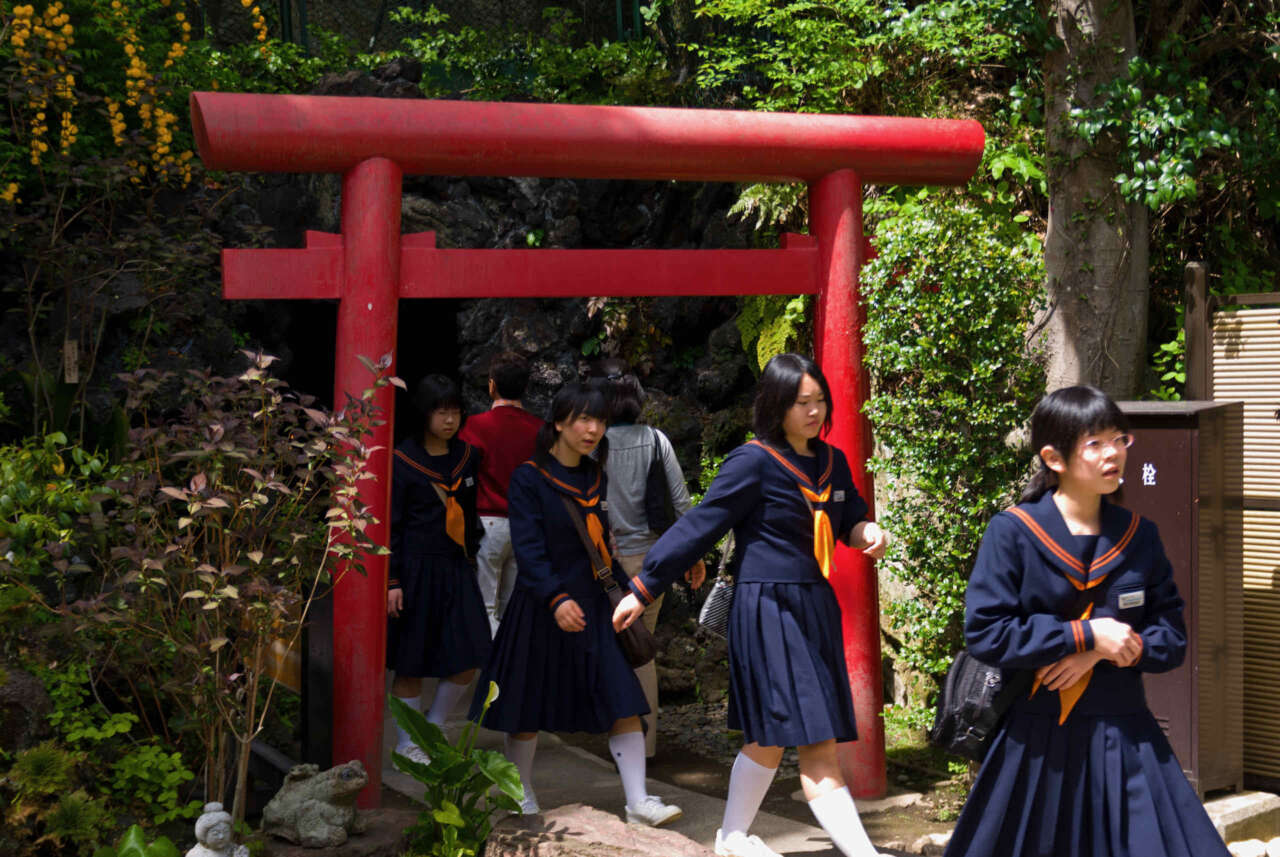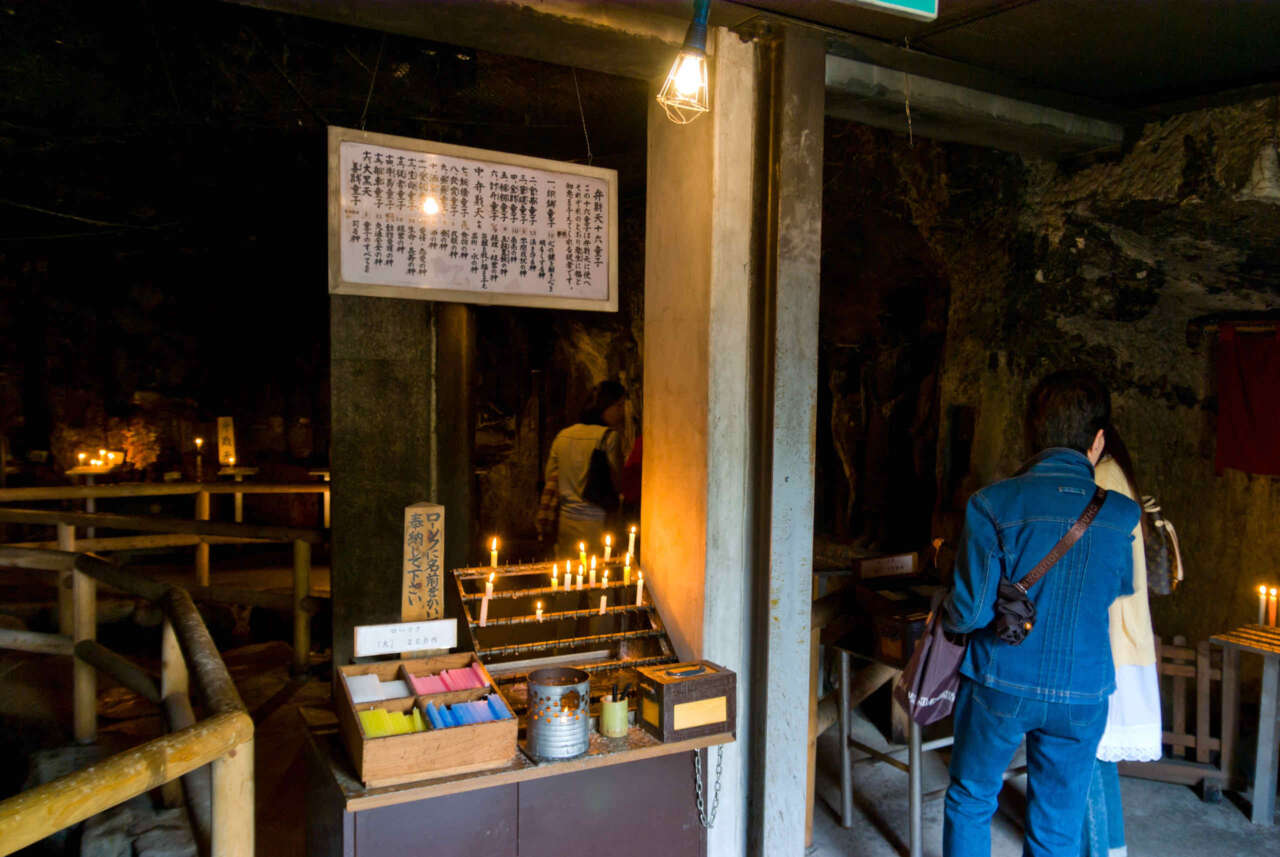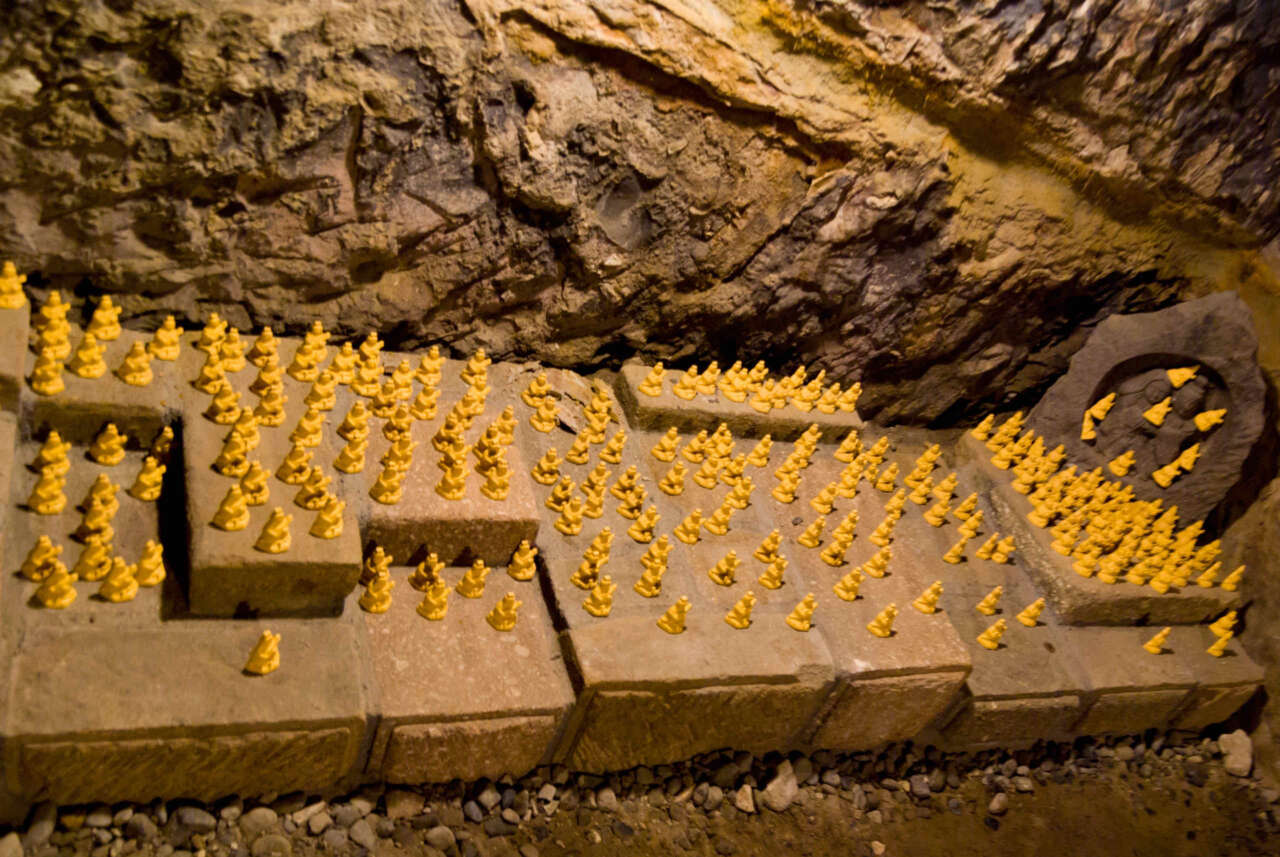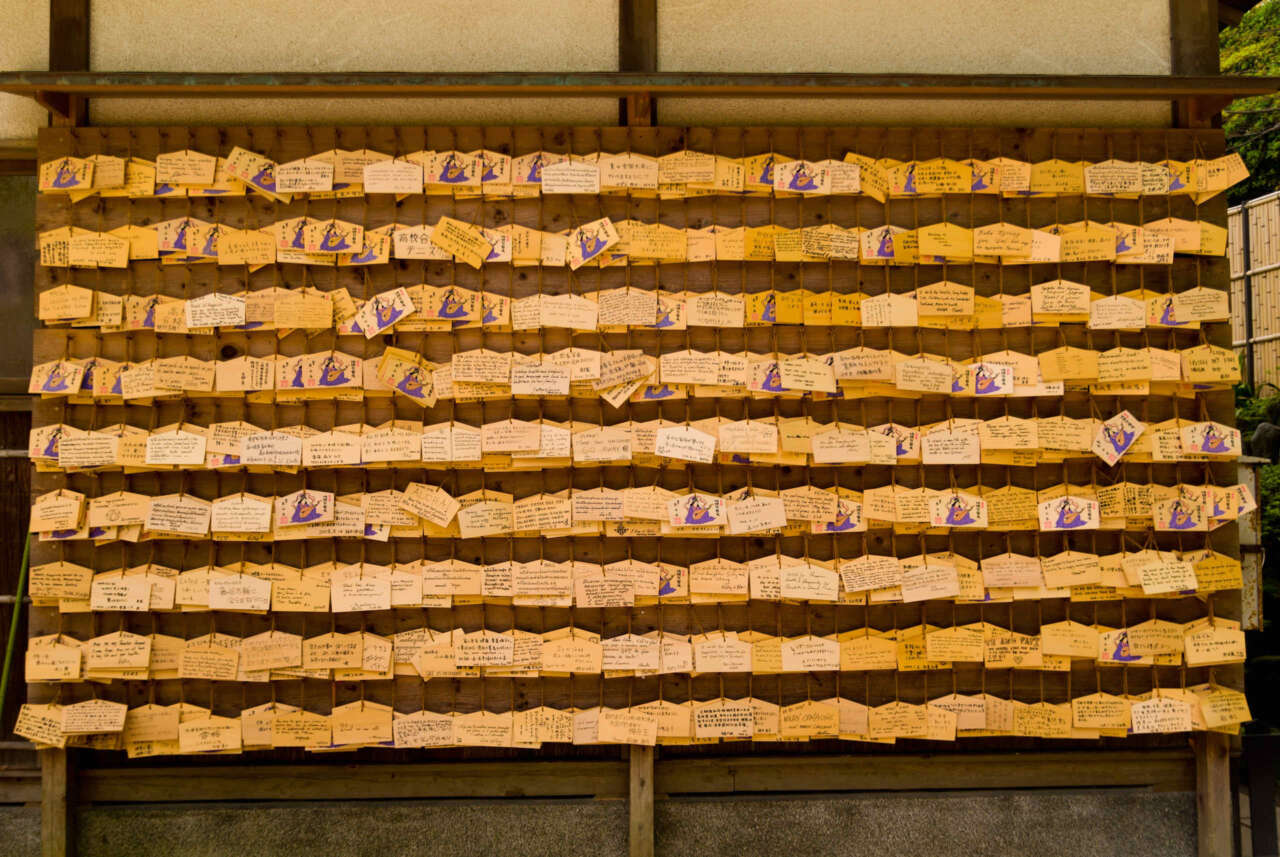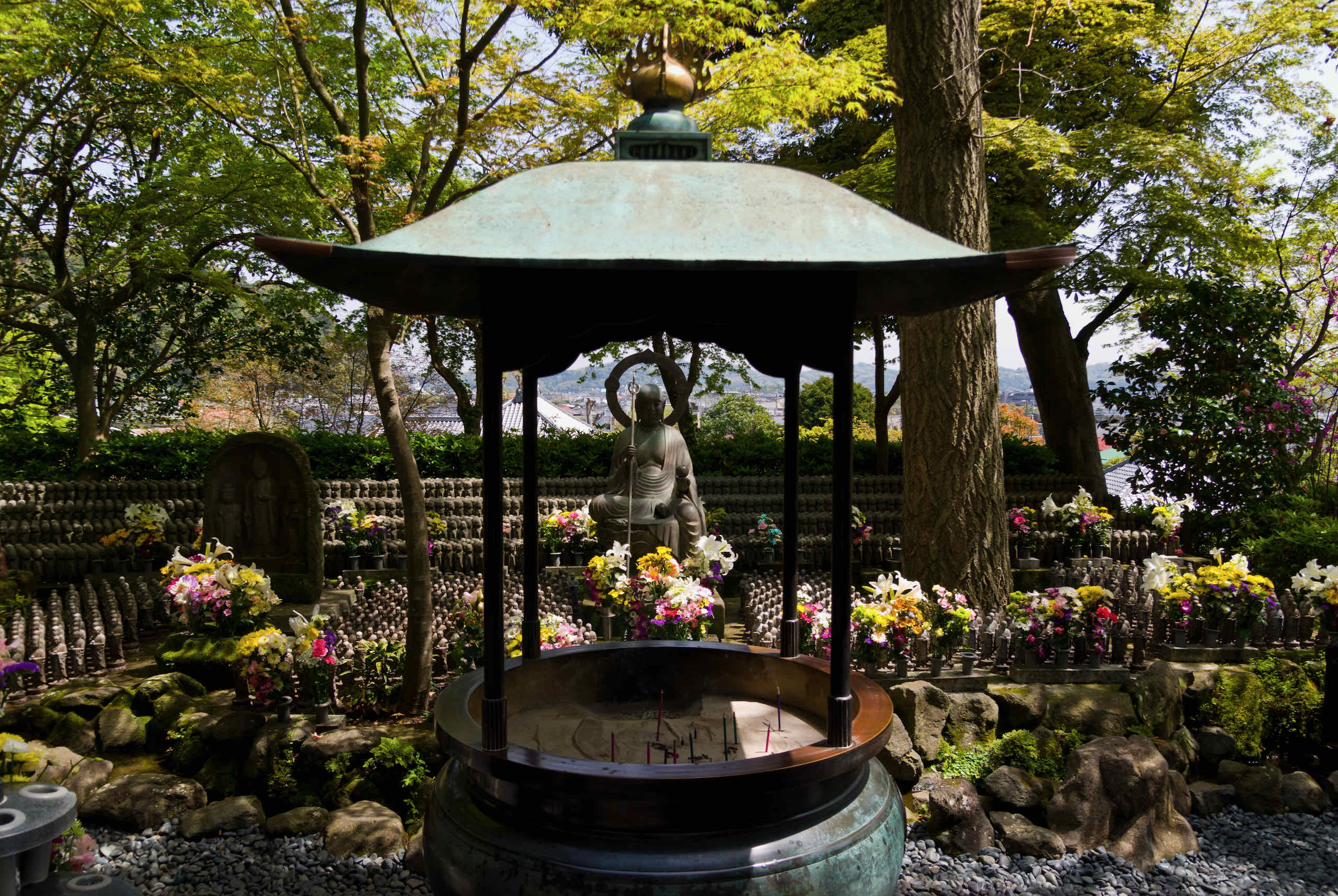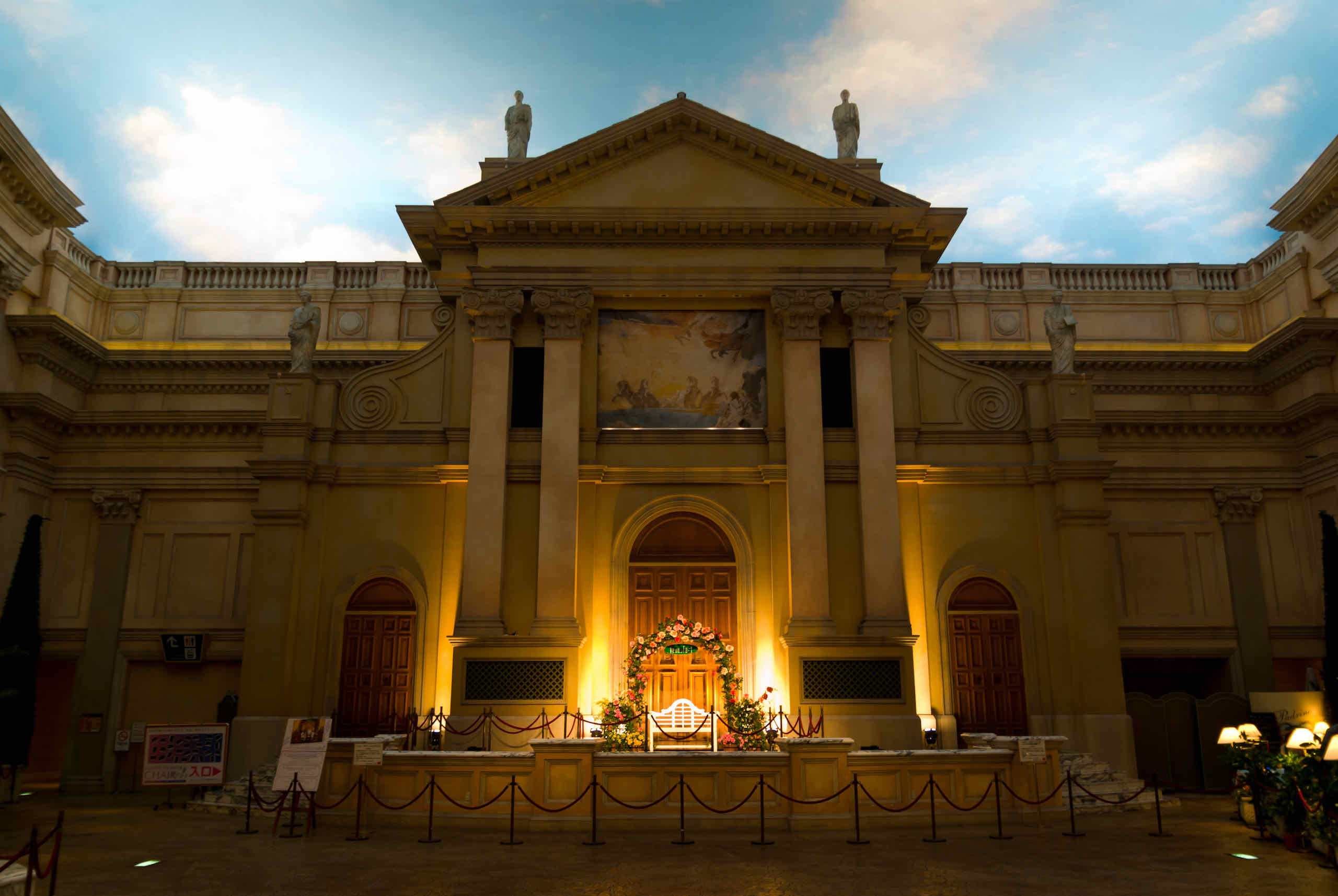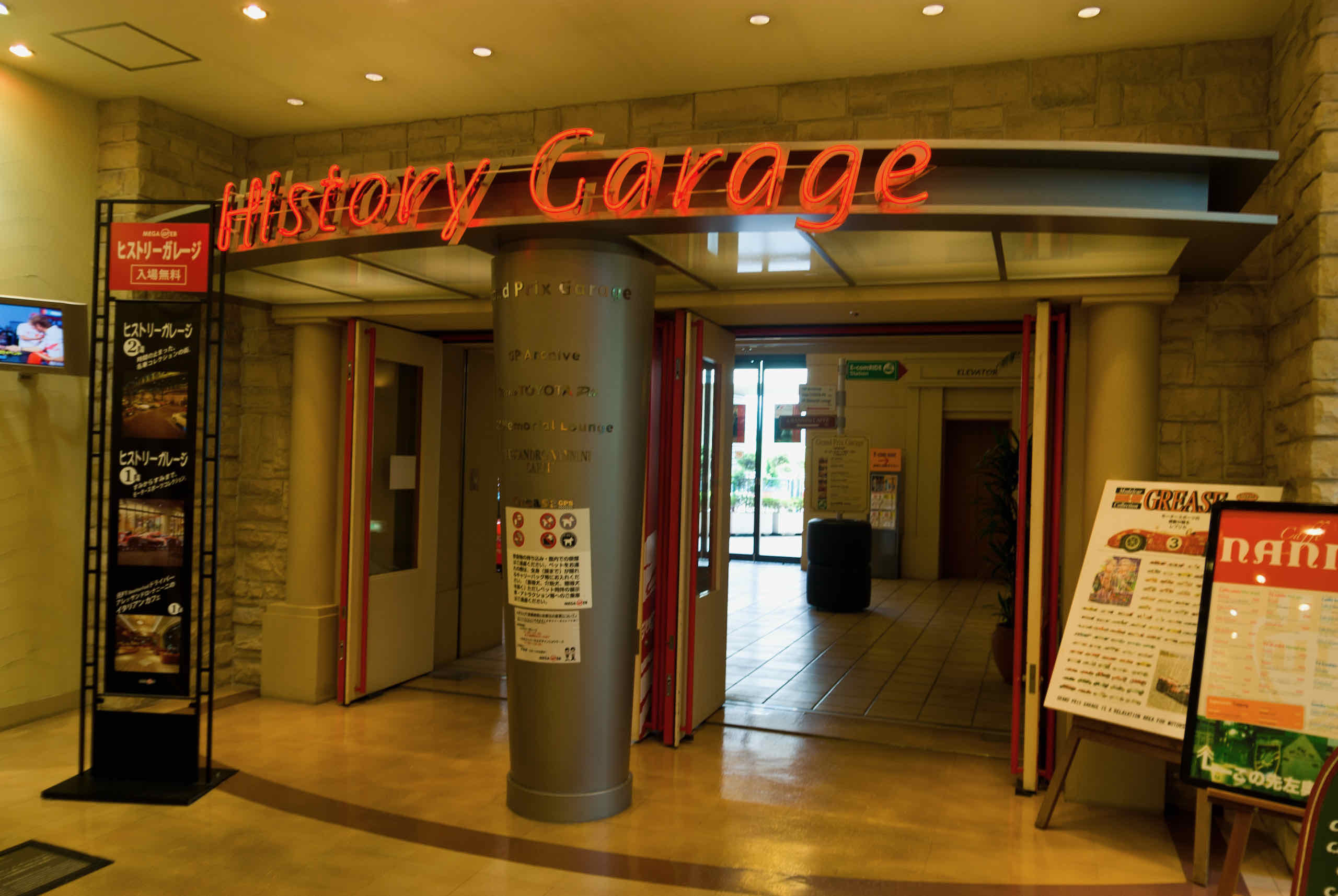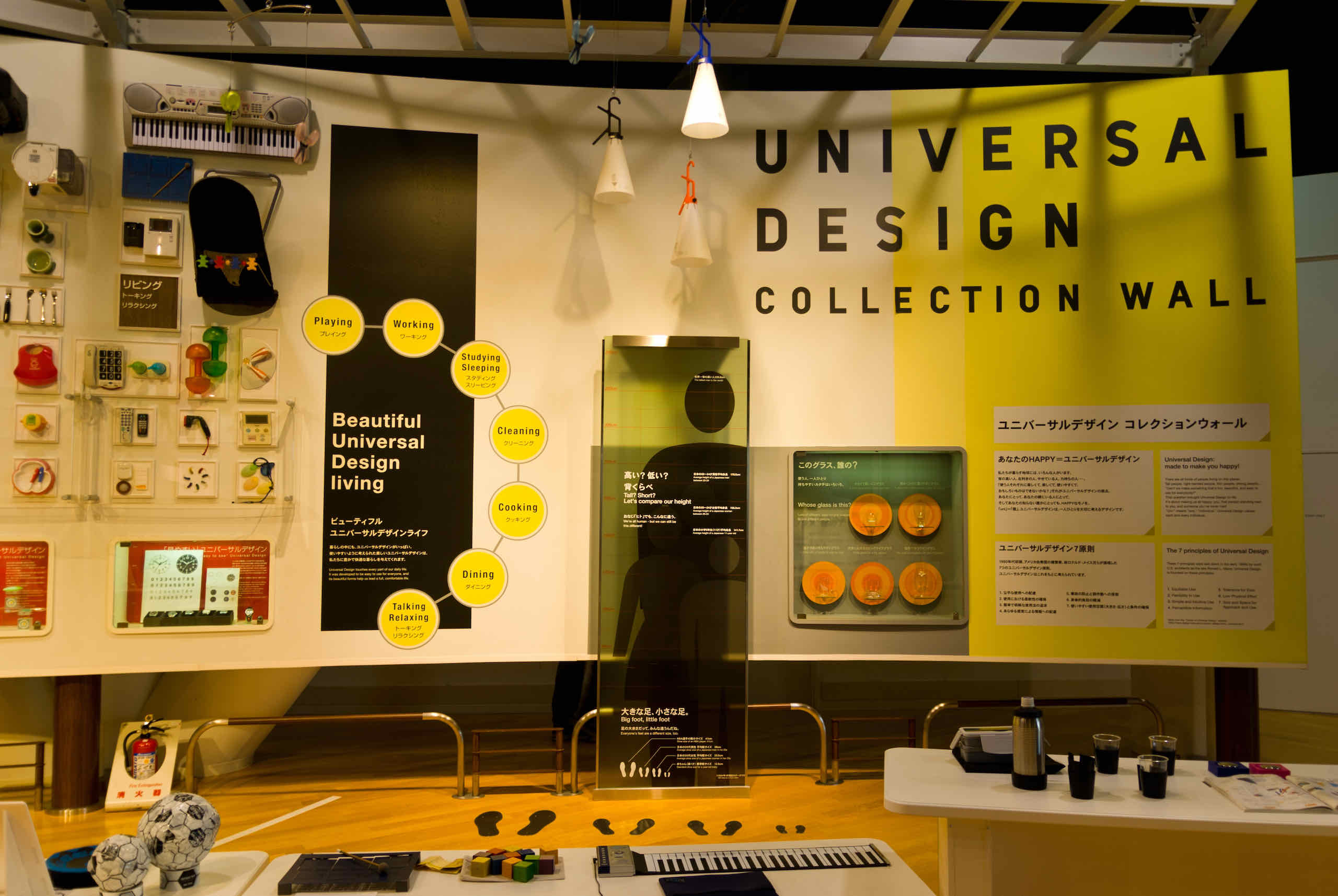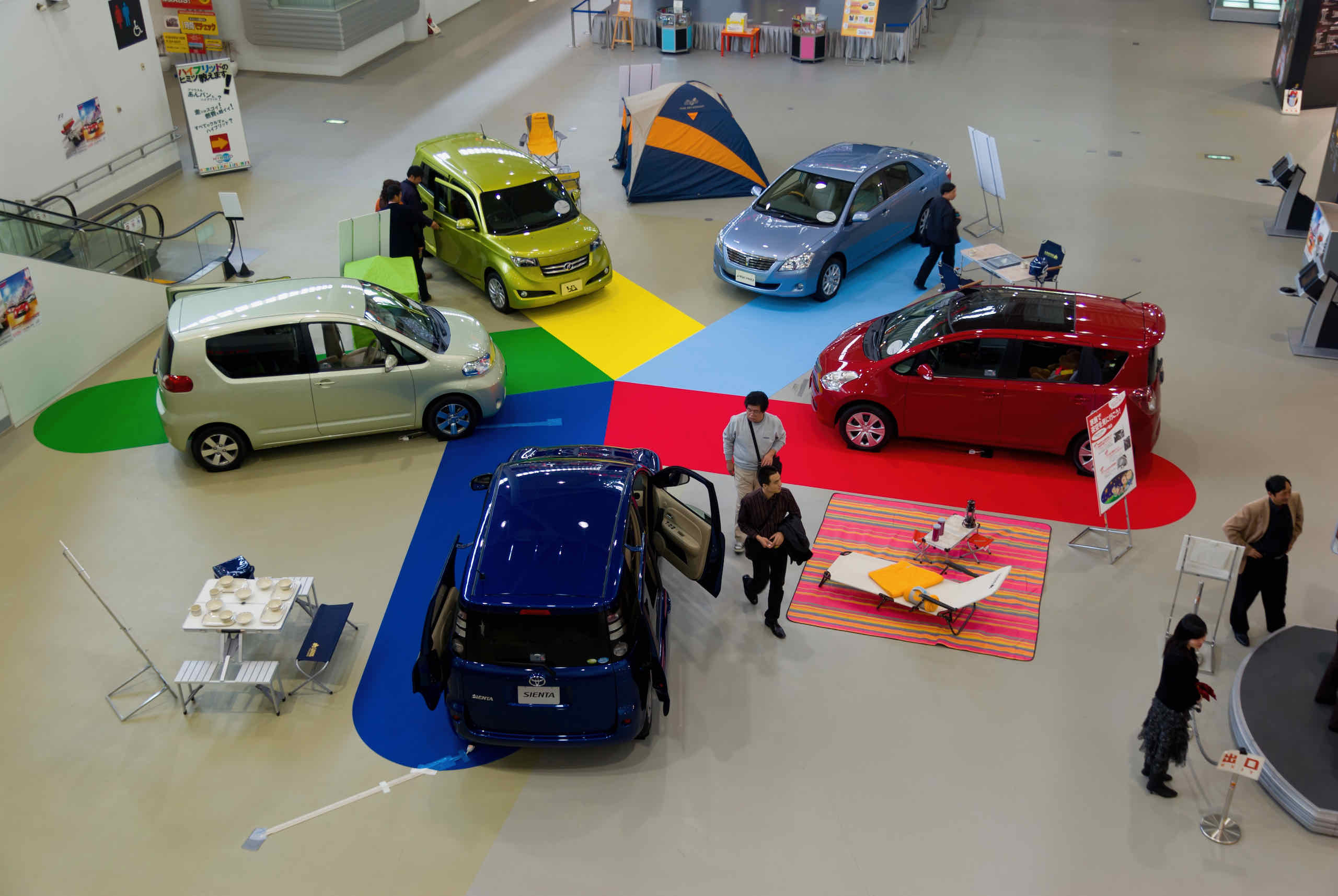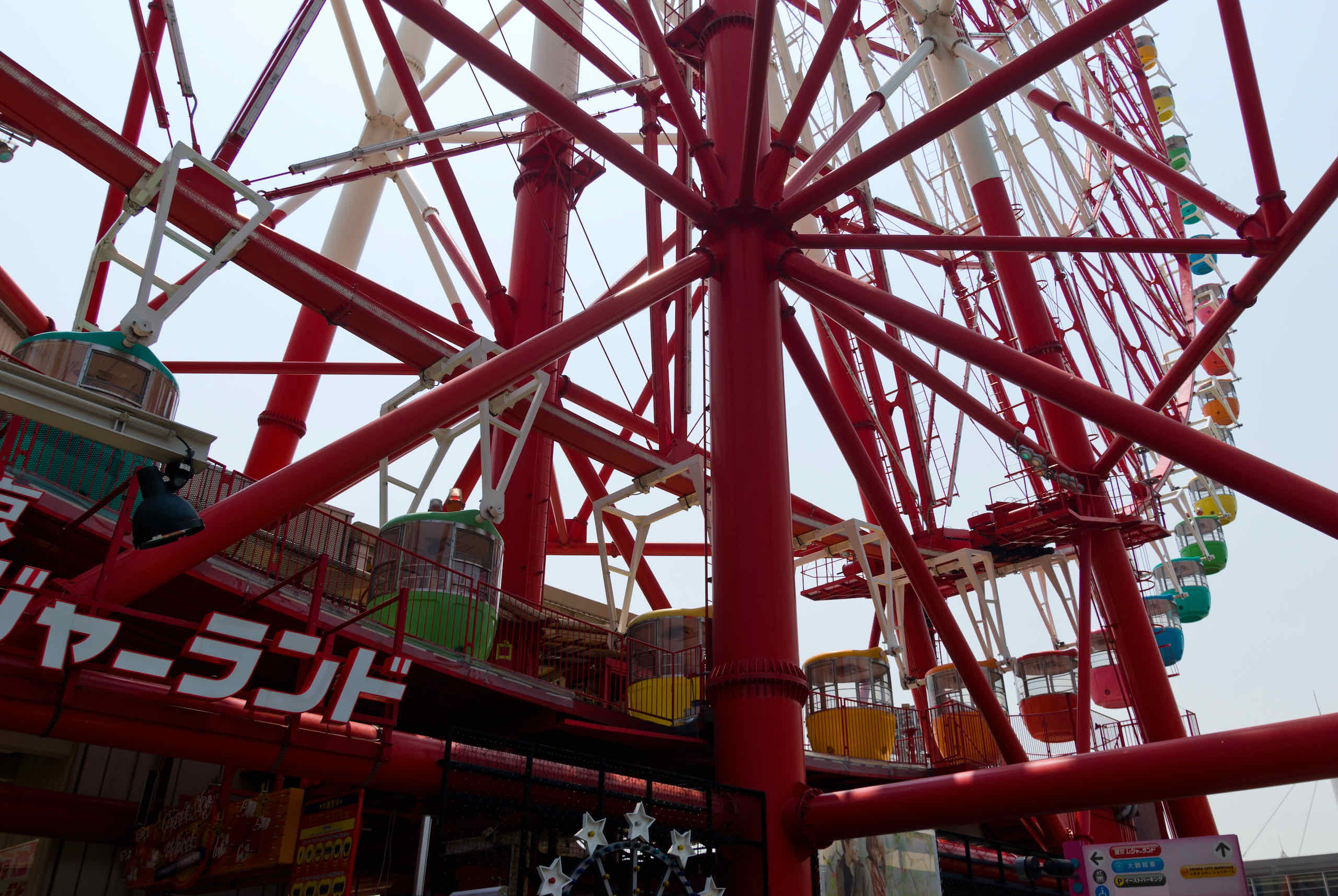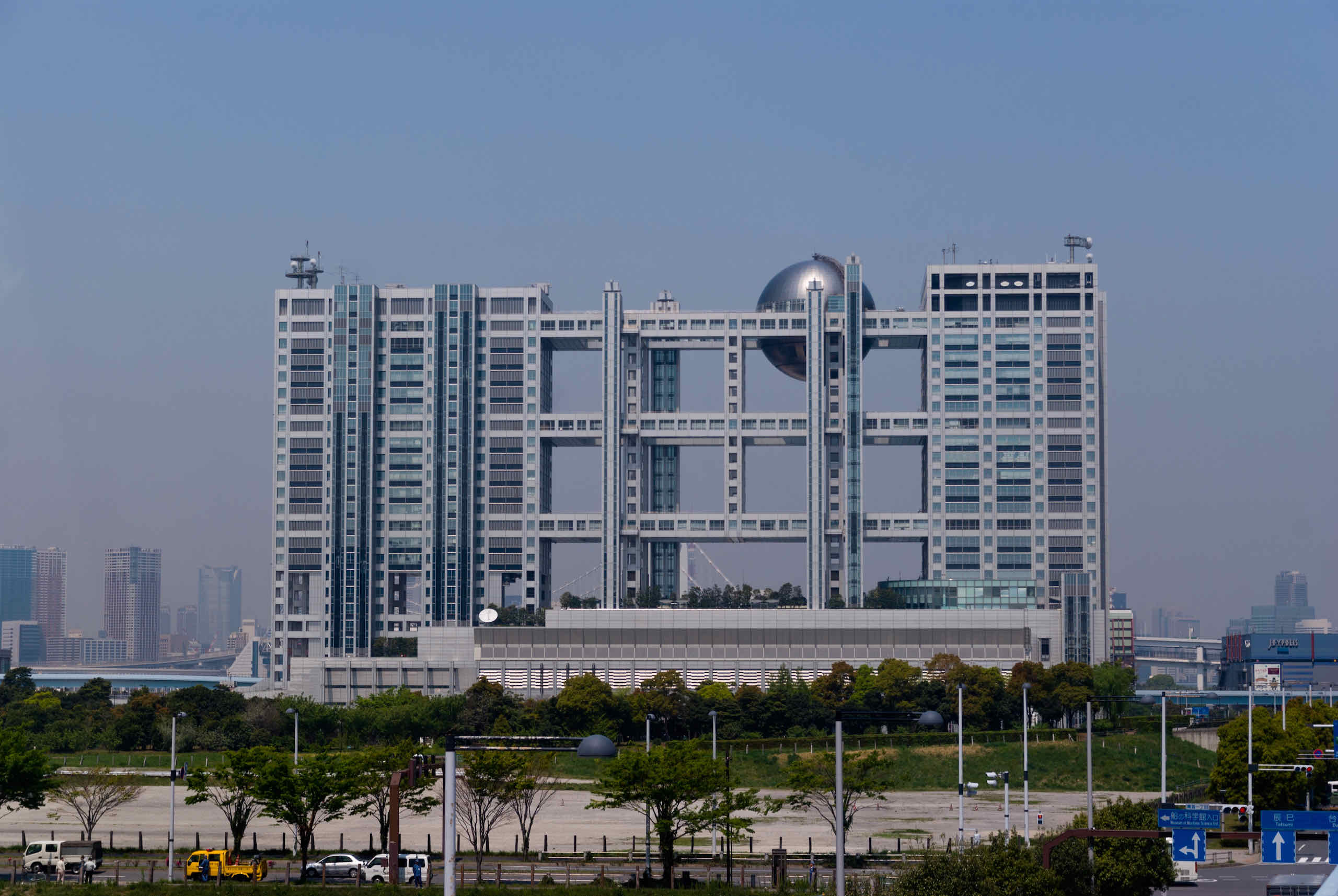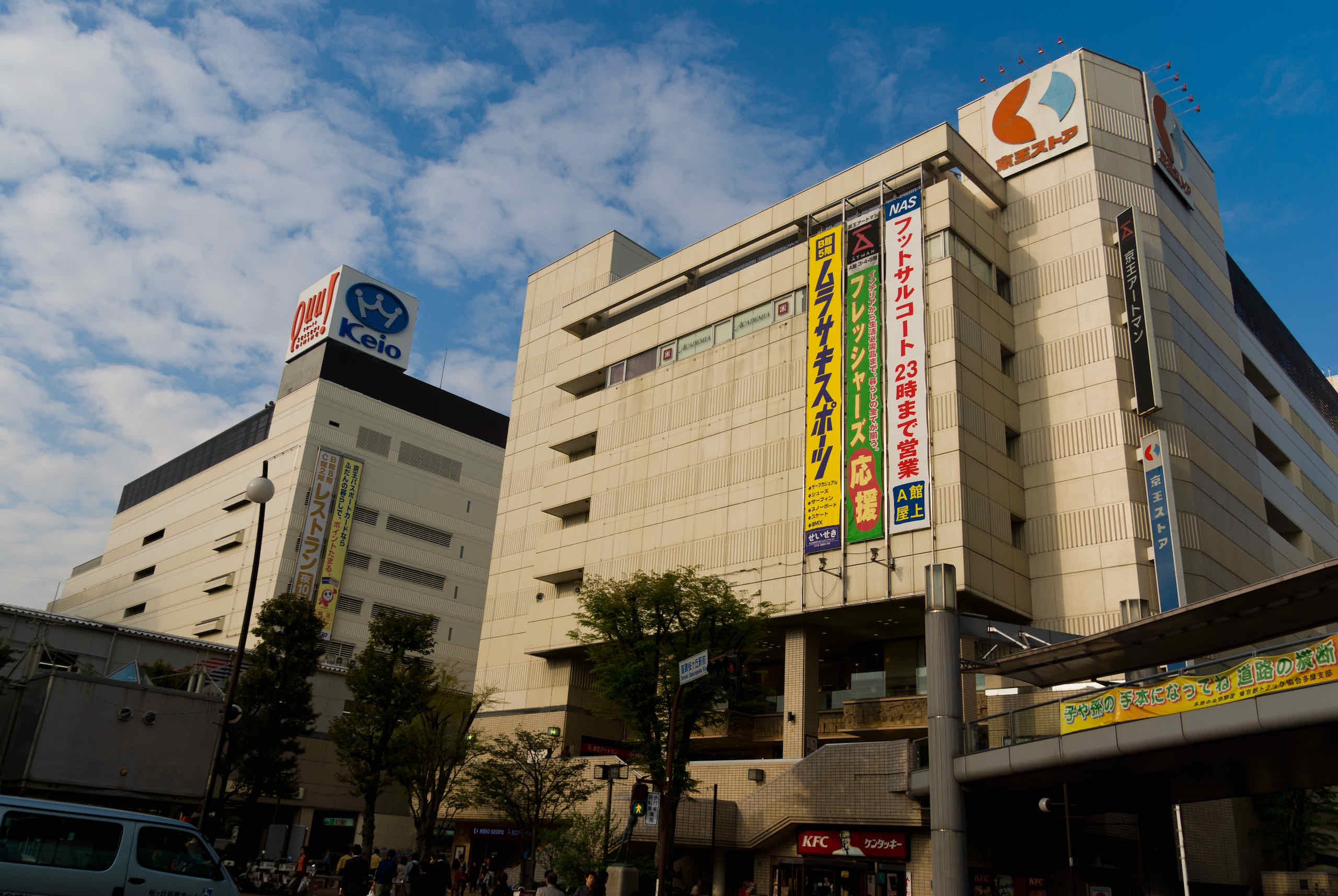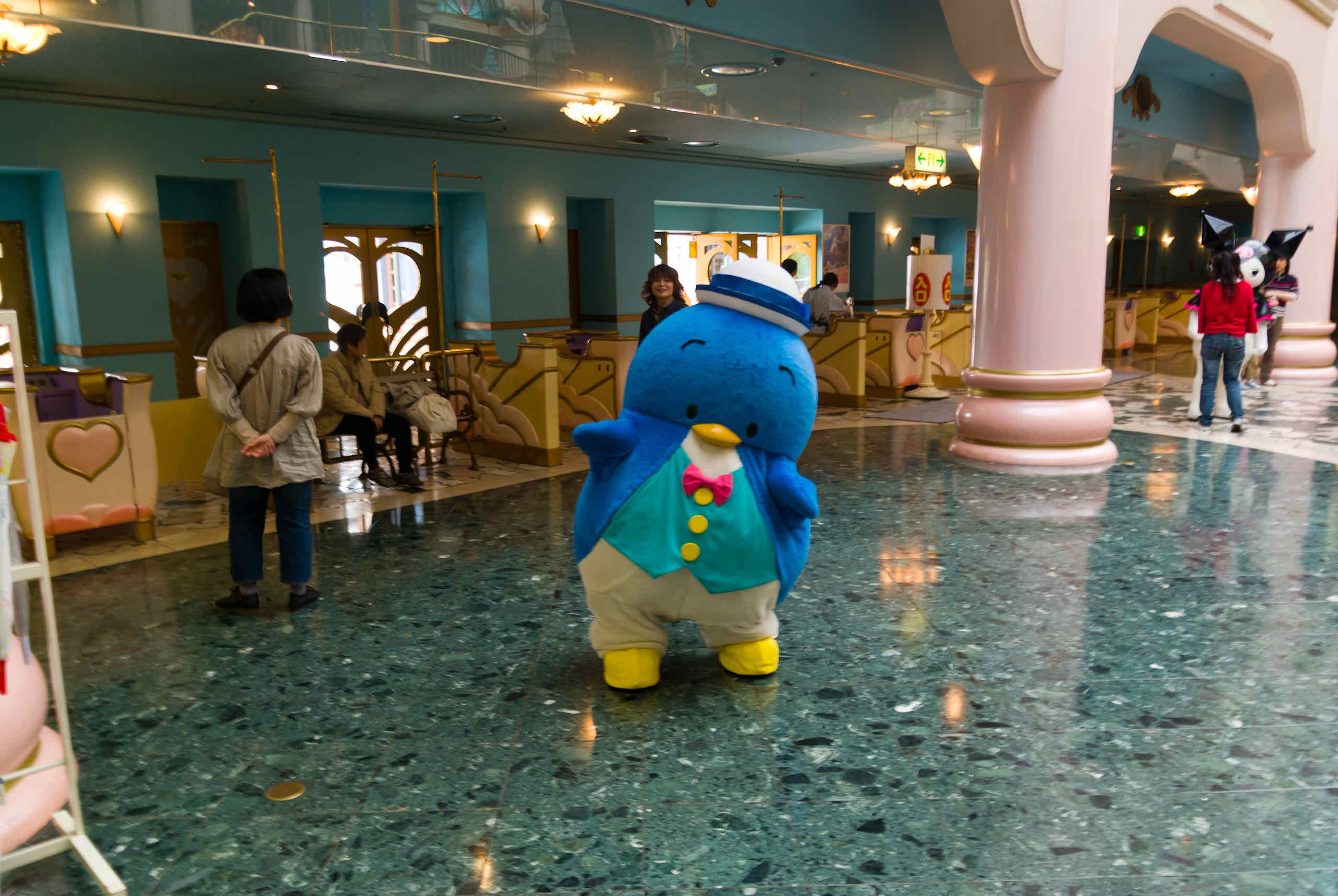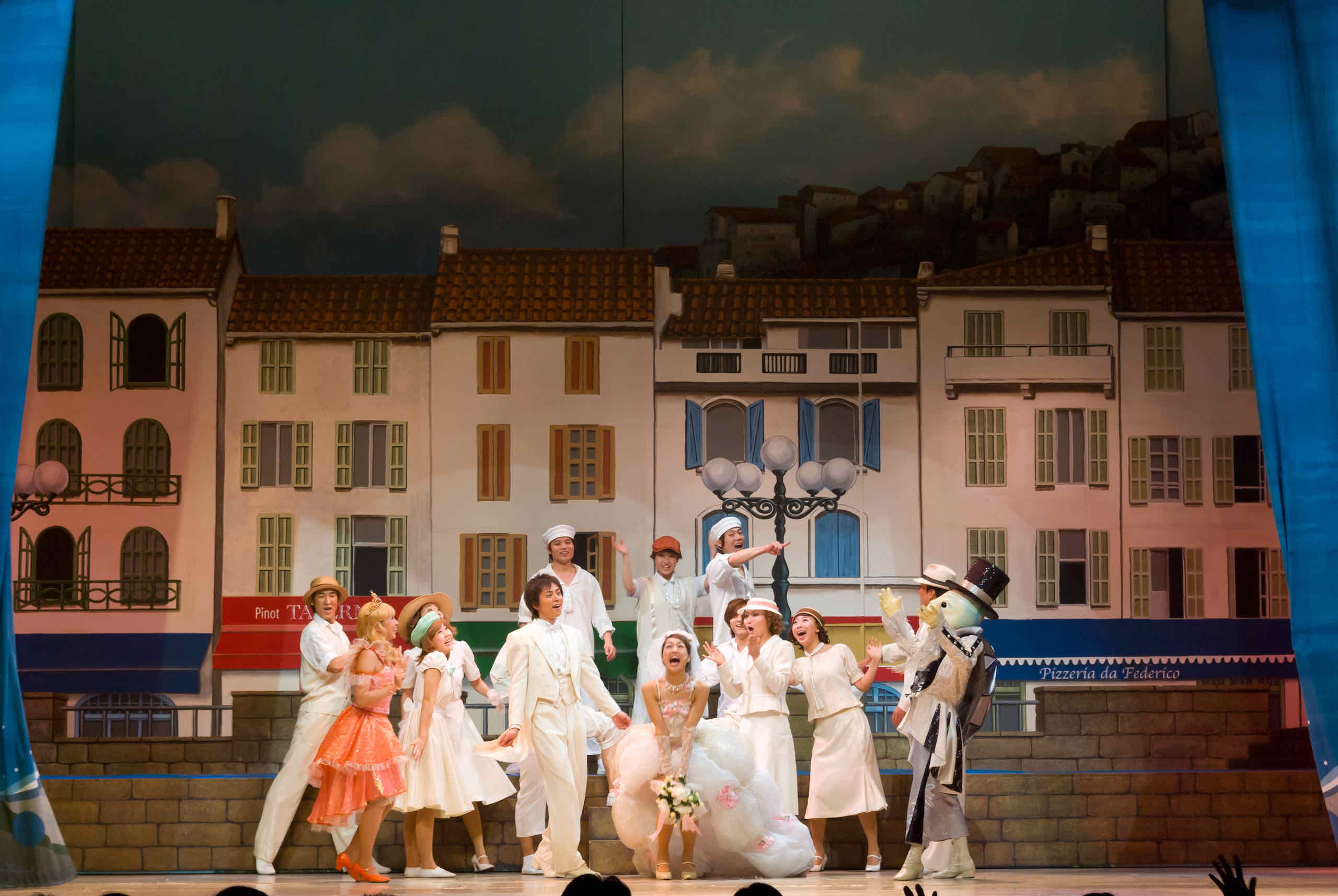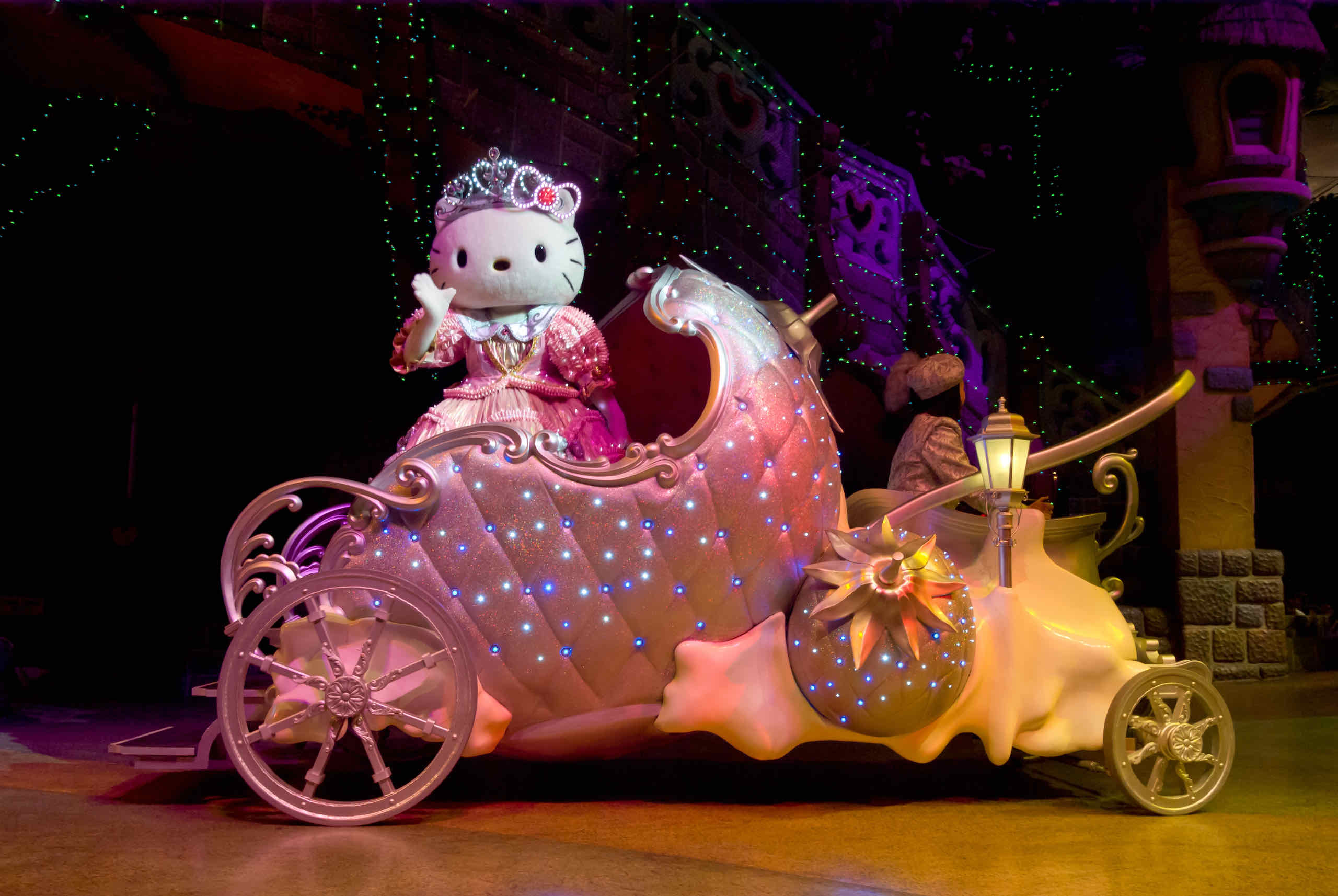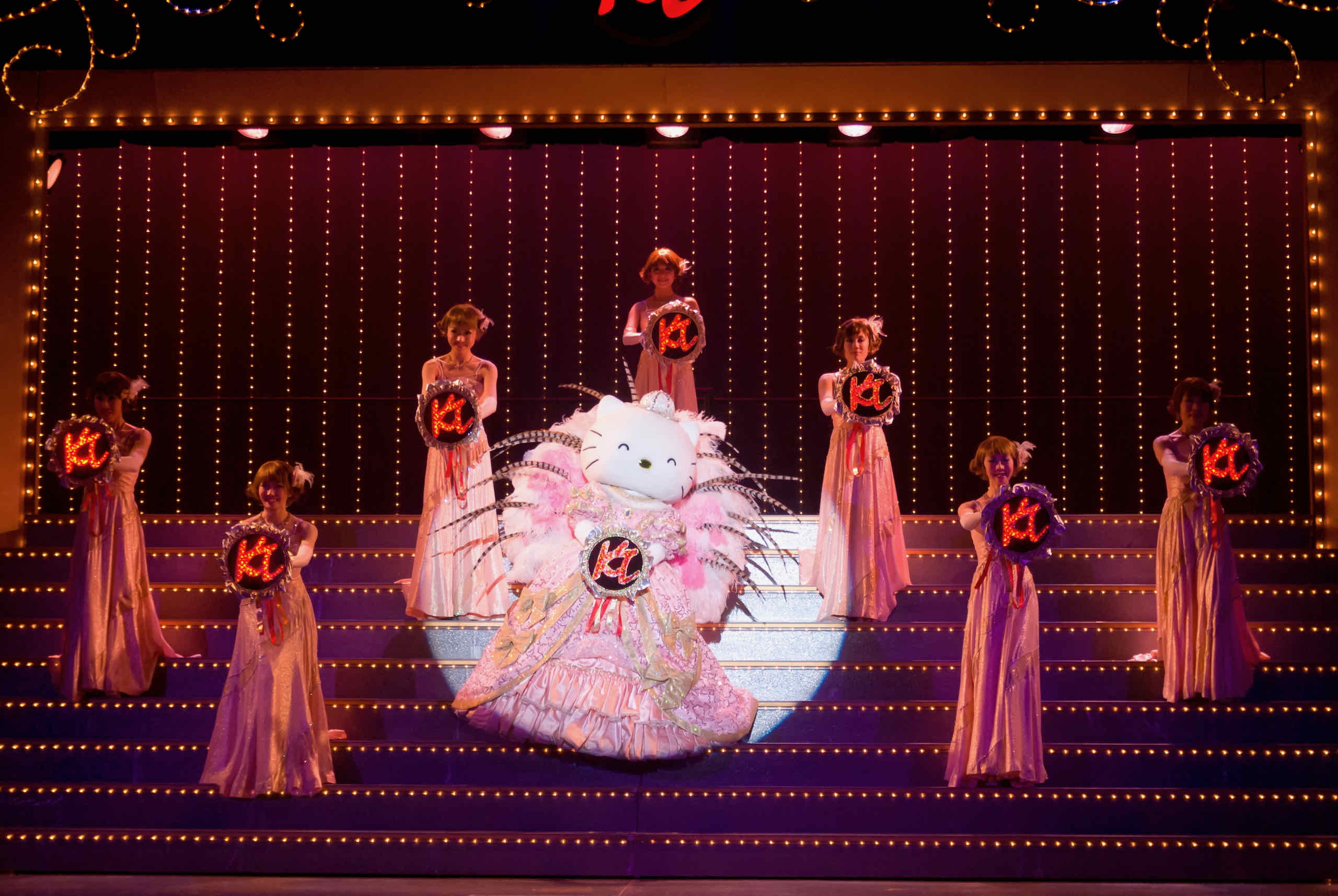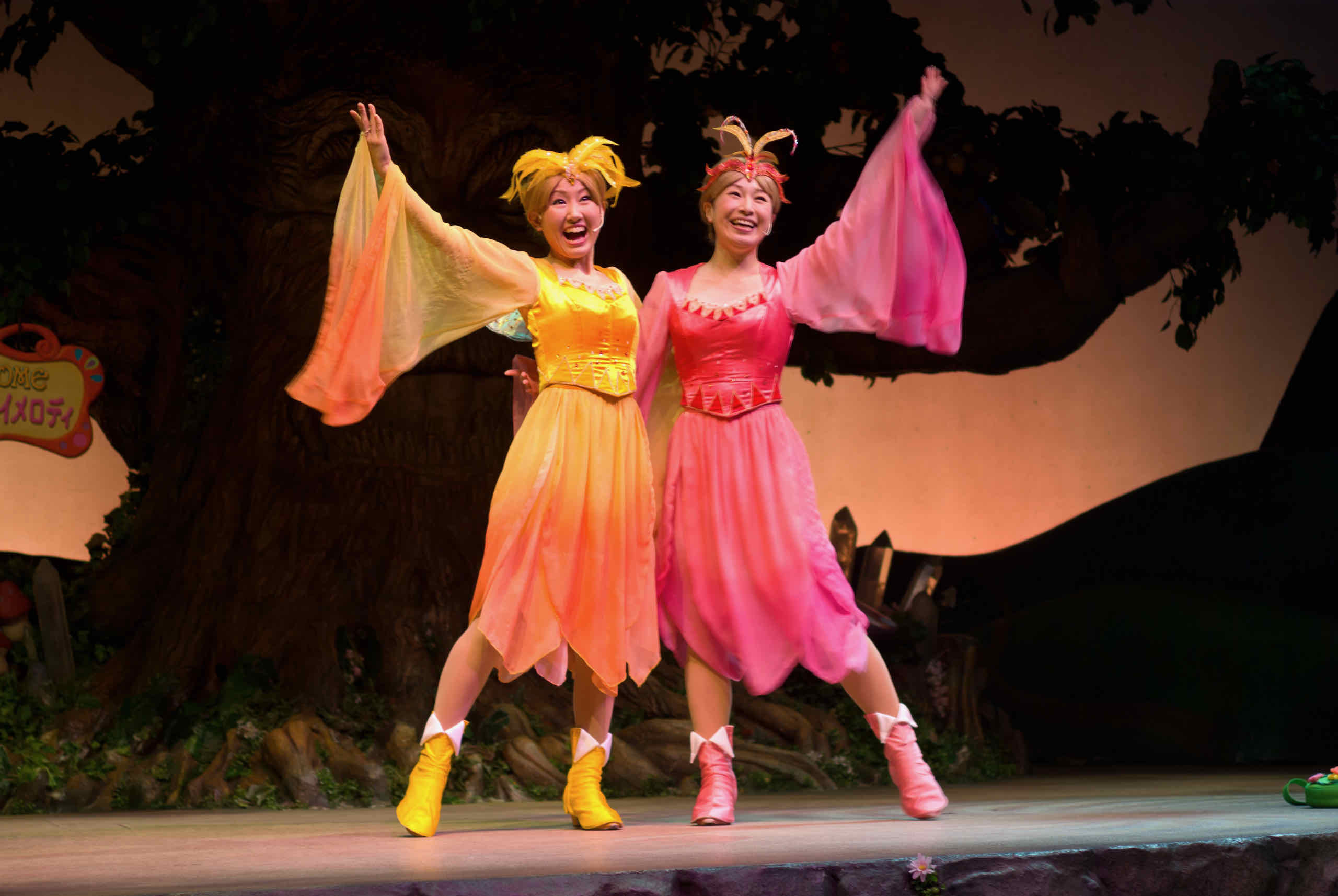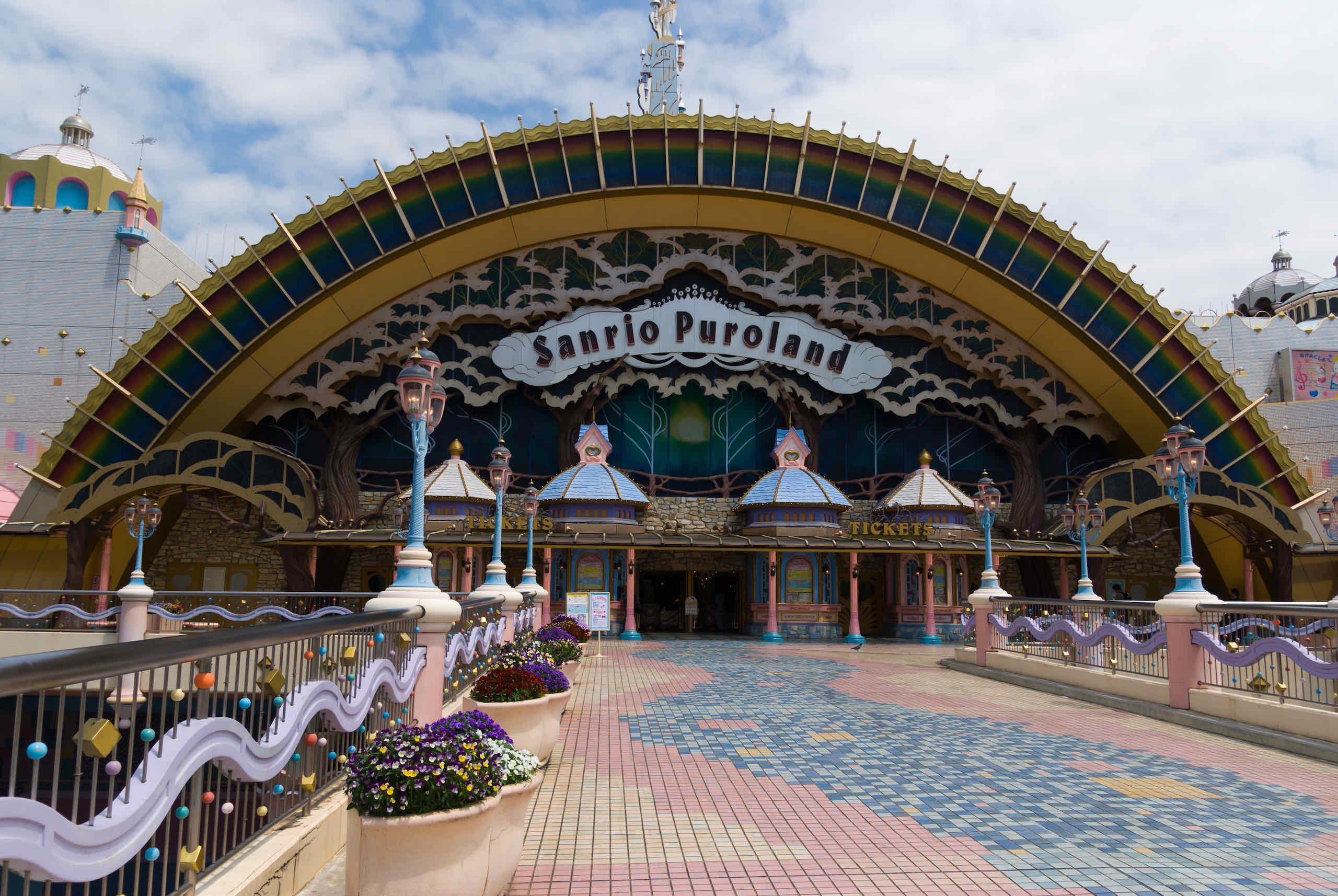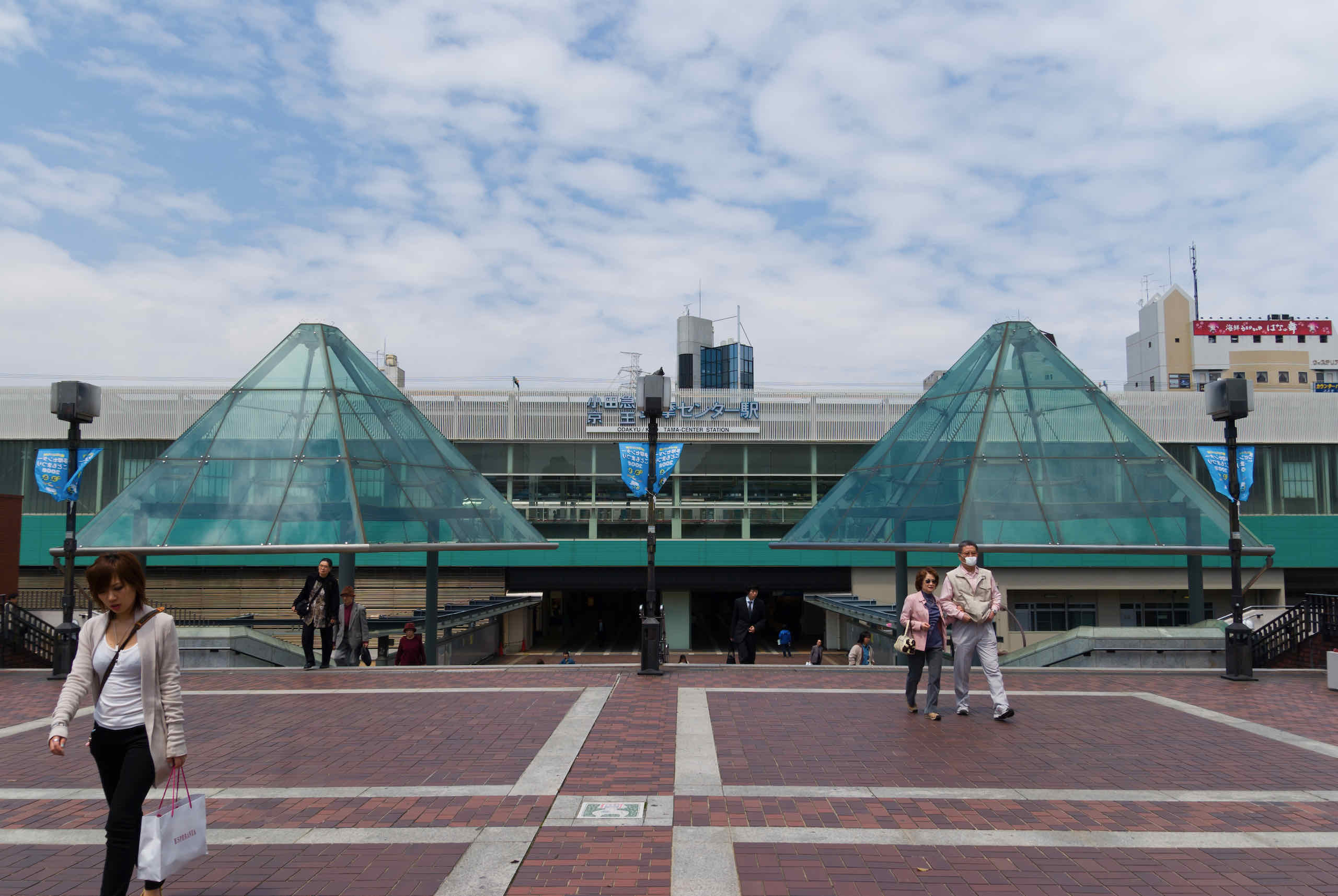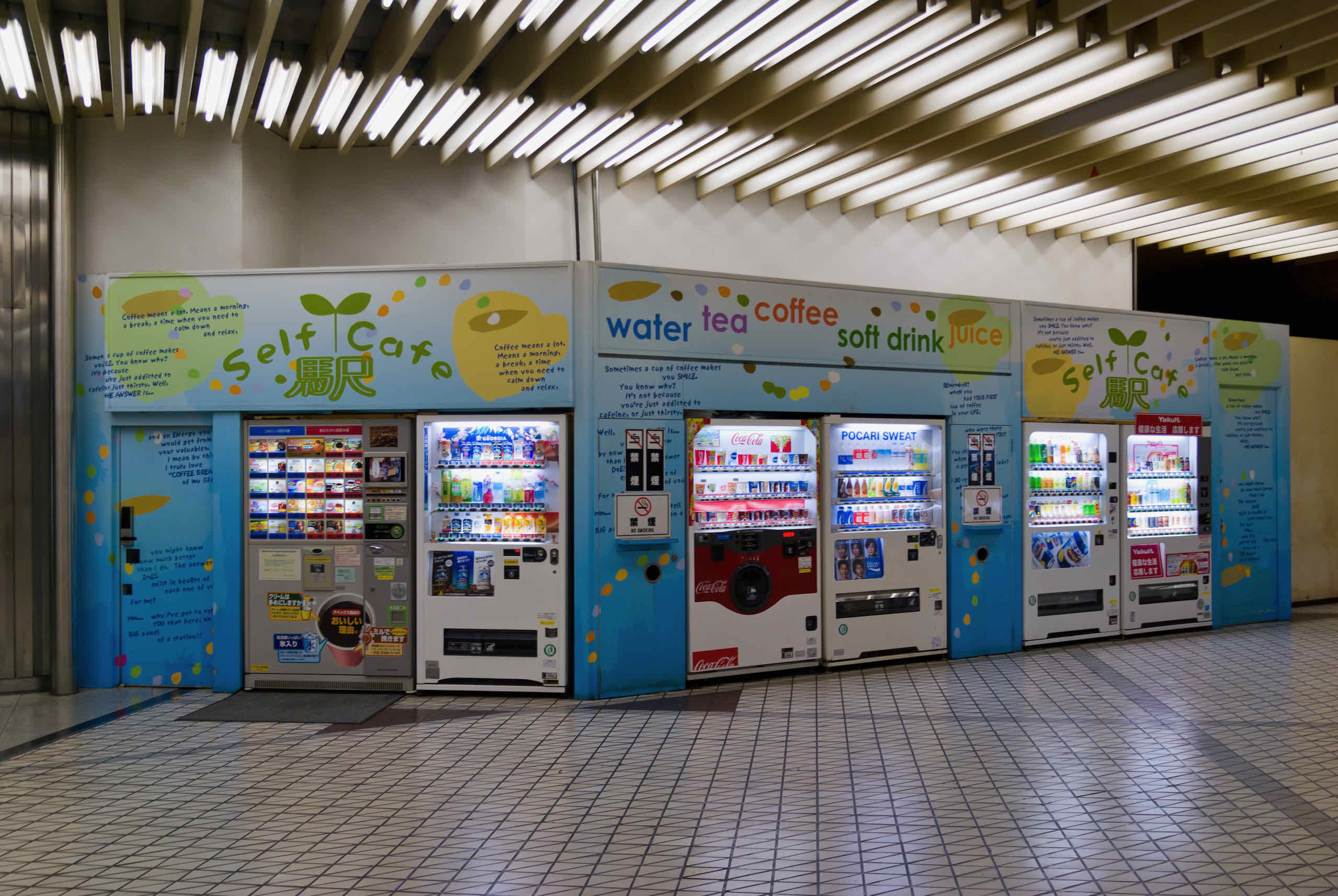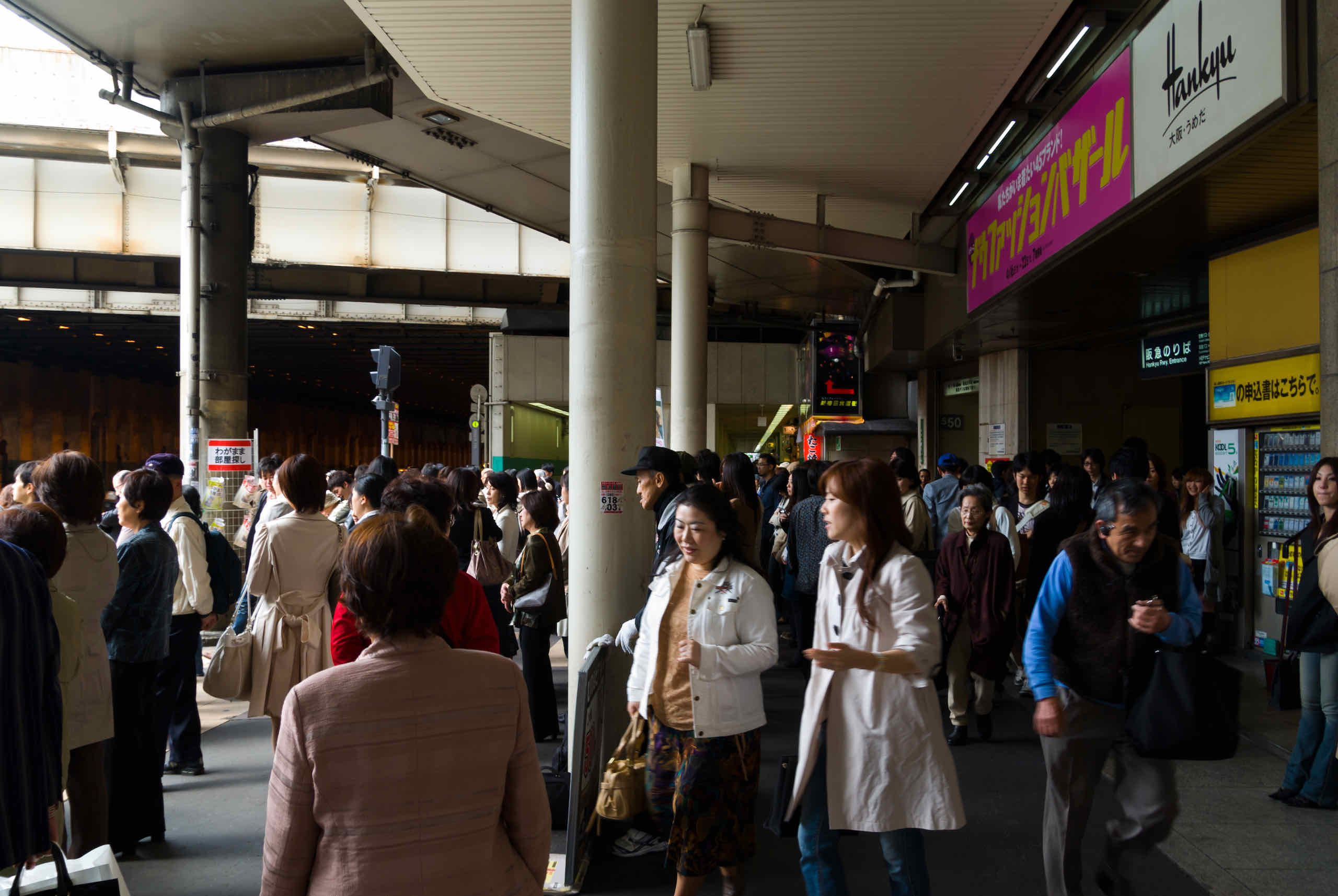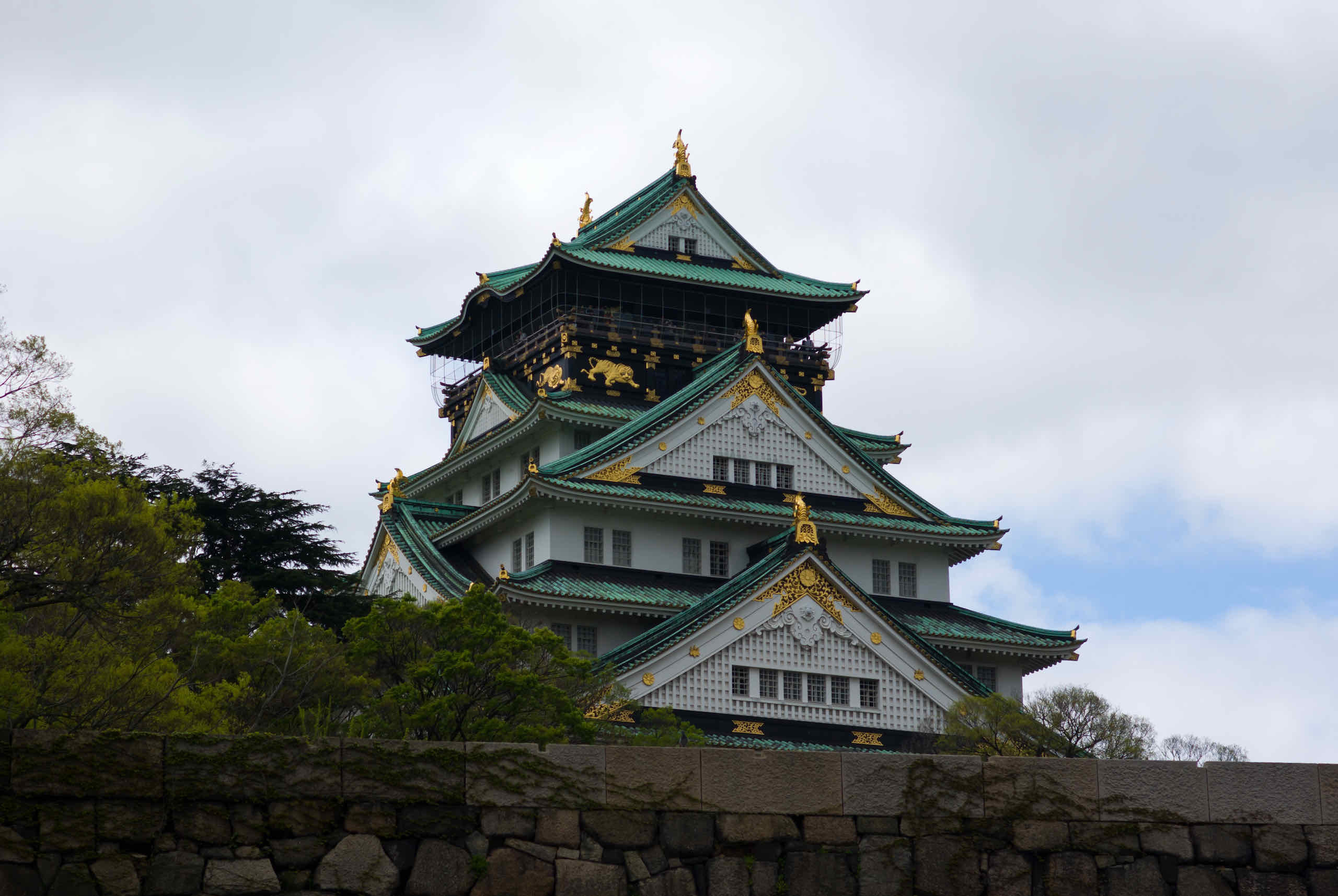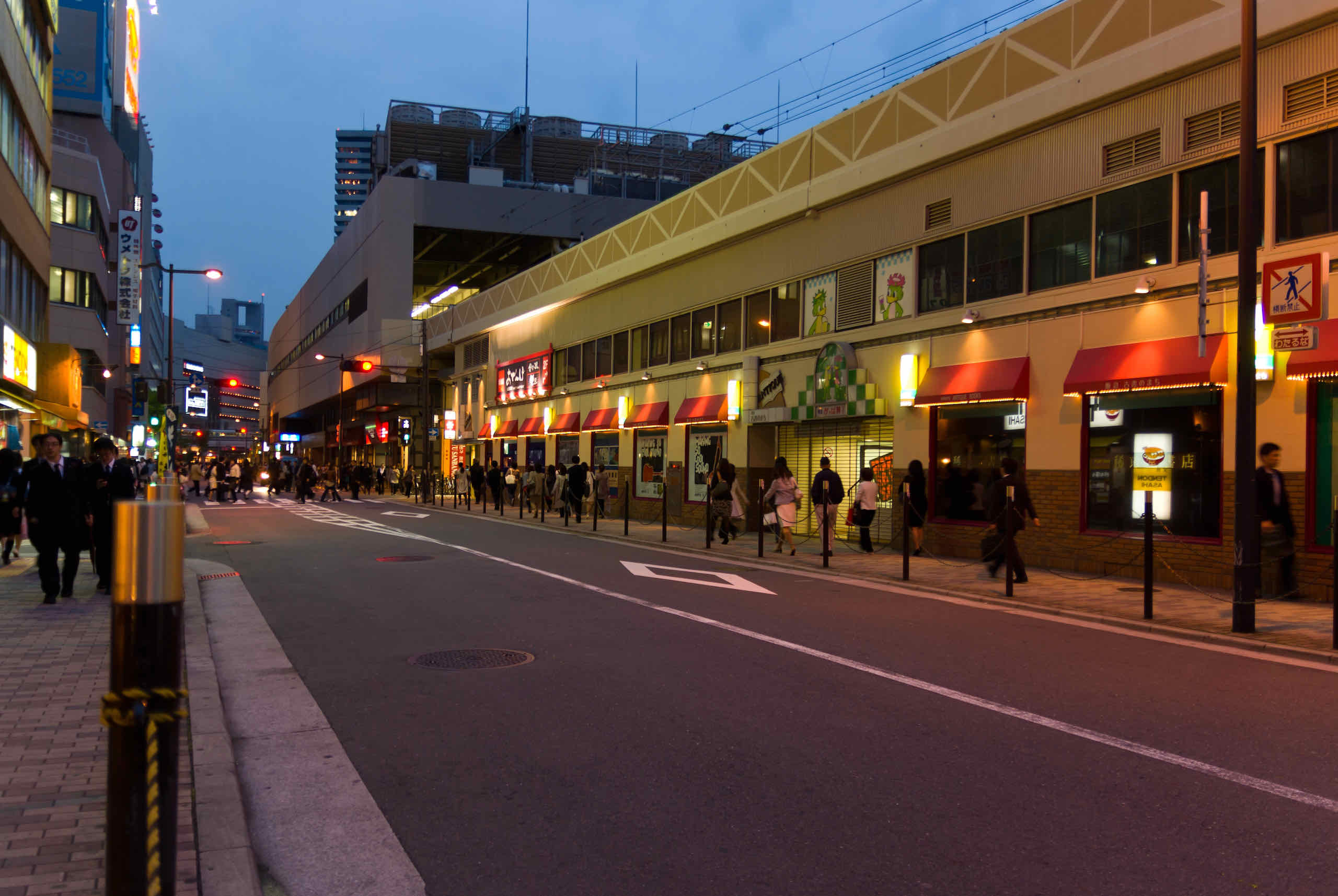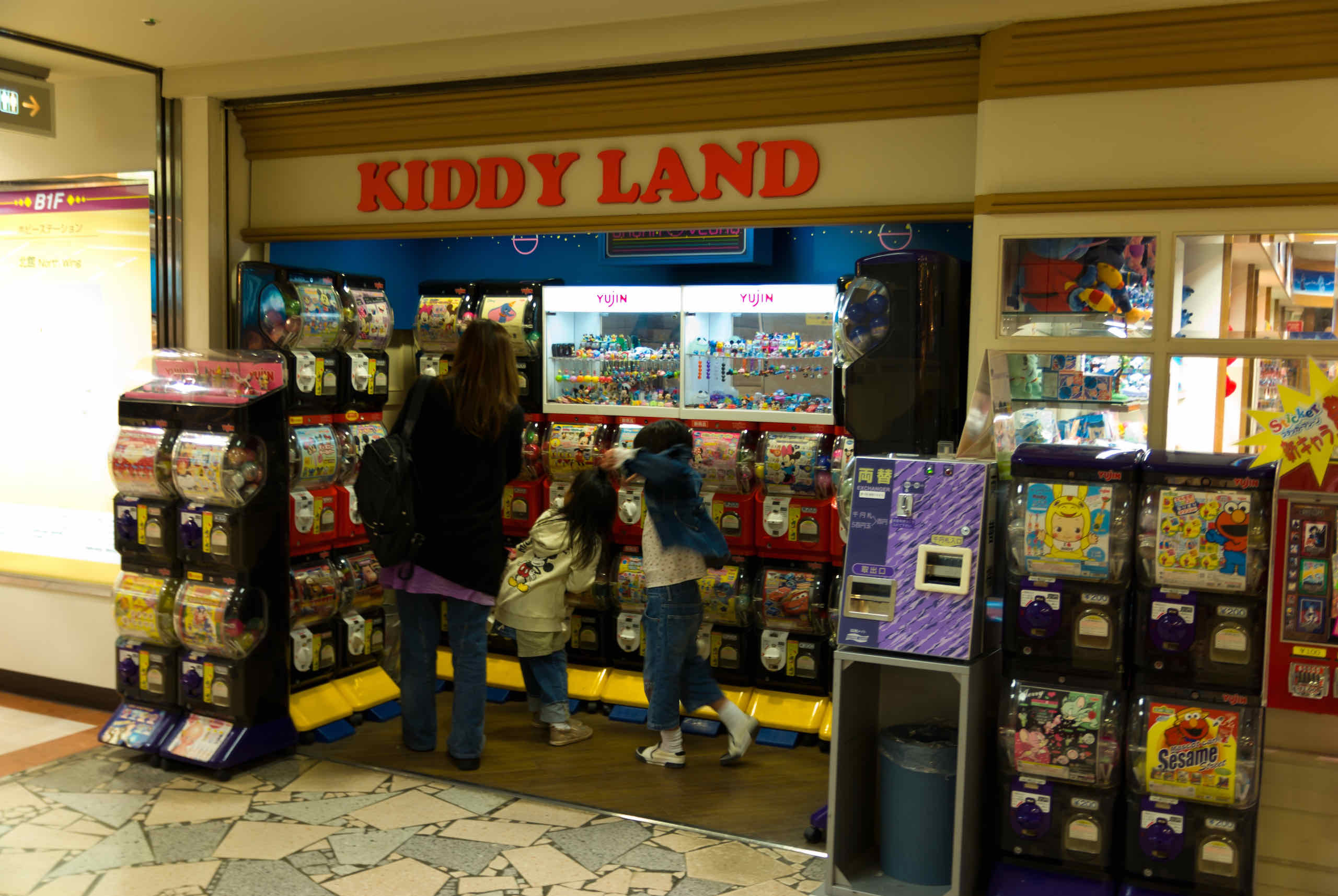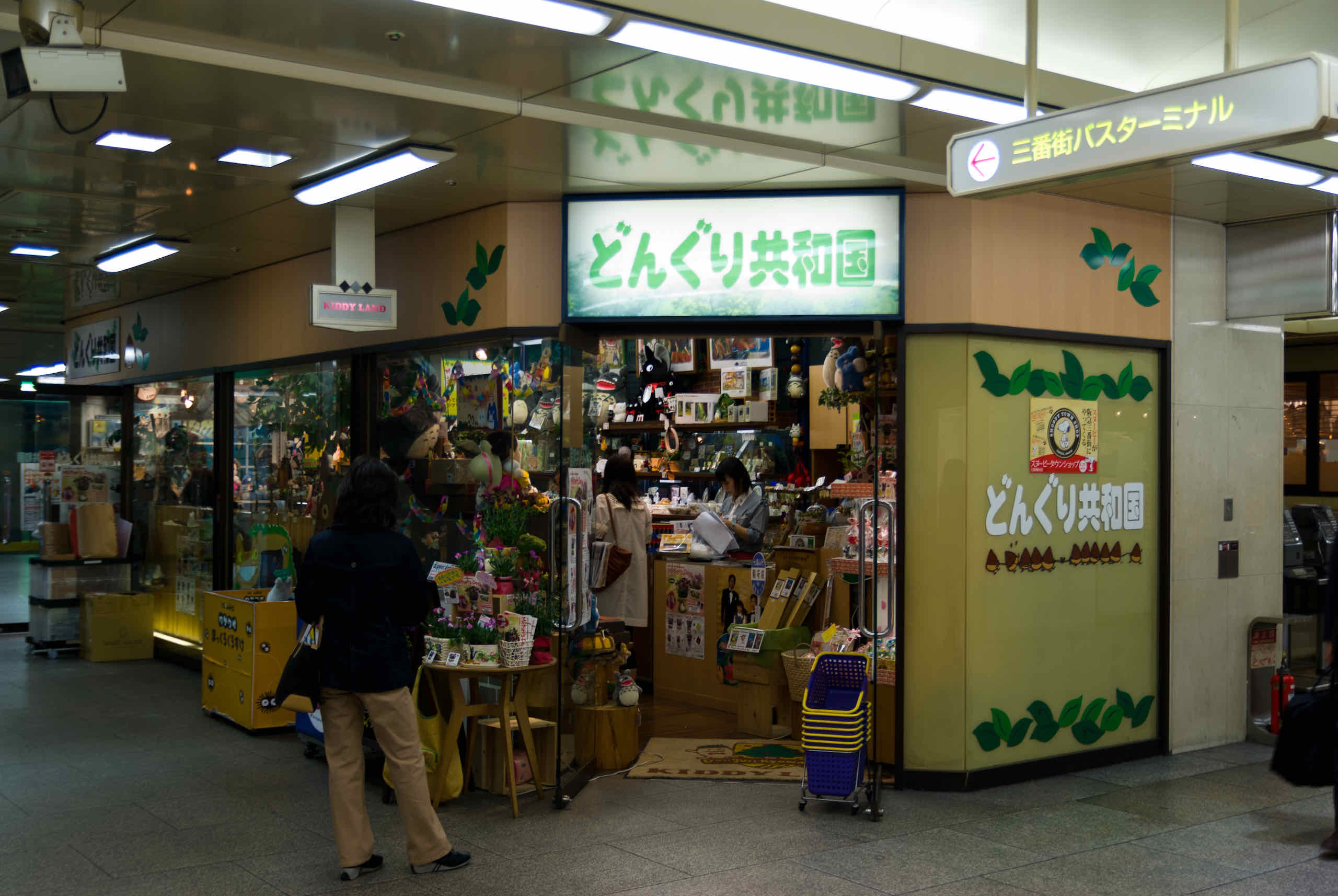Hase-dera (海光山慈照院長谷寺), commonly called the Hase-kannon (長谷観音), is a Buddhist temple in Kamakura famous for it’s giant wooden statue of Kuan Yin, or the bodhisattva associated with compassion. Sometimes referred to as the Goddess of Mercy, Kuan Yin originated from Avalokiteśvara referenced in the Lotus Sutra, and is called Kannon (観音) in Japan.
By the way, many people are used to depictions of Kannon as female, but in Japan Kannon is typically shown as a male. Buddhist literature says Avalokiteśvara can assume many forms, but many Chinese sculptures prefer to use the female form, due to the association with maternity and protection of children.
This is the main entrance to Hasedera, featuring the main gate – Sanmon – and the administration office – Jishoin. There are two statues outside Jishoin.
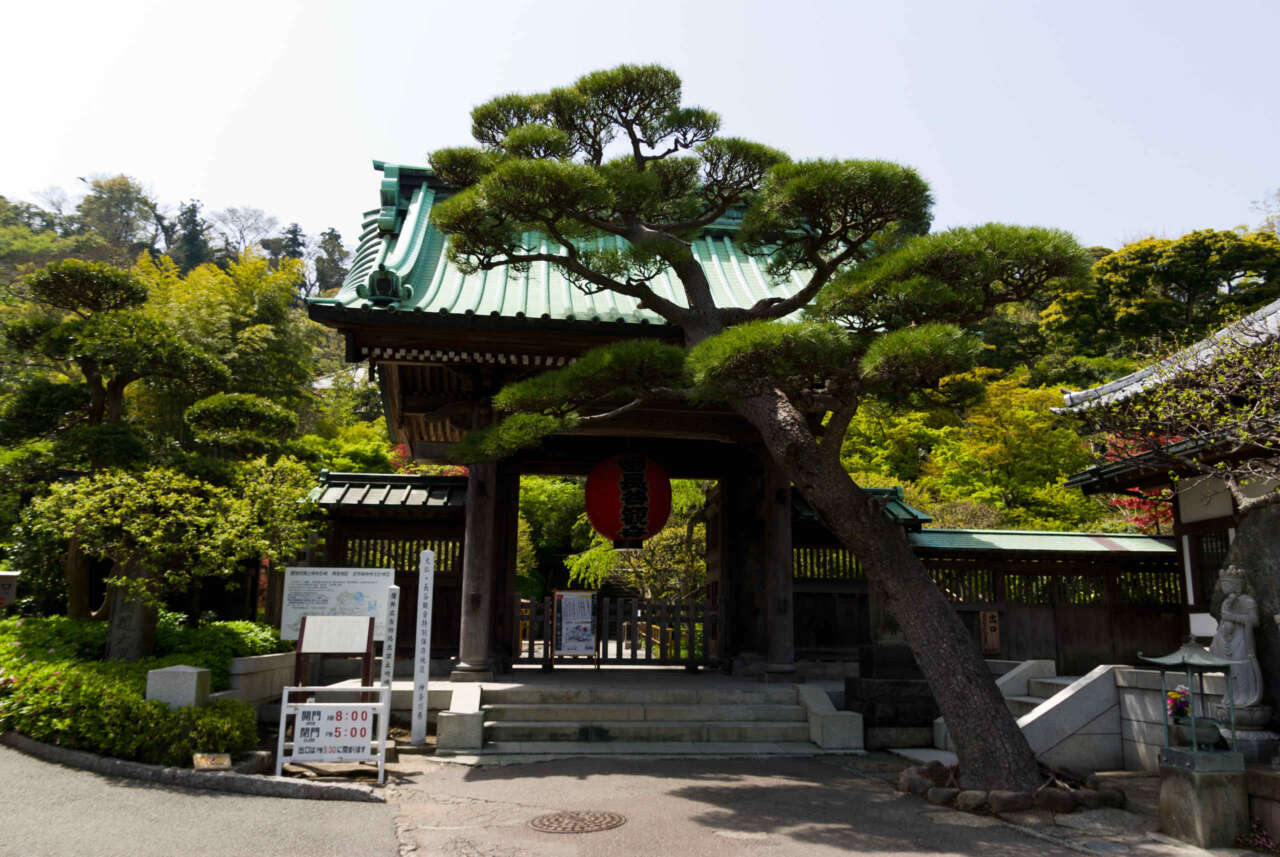
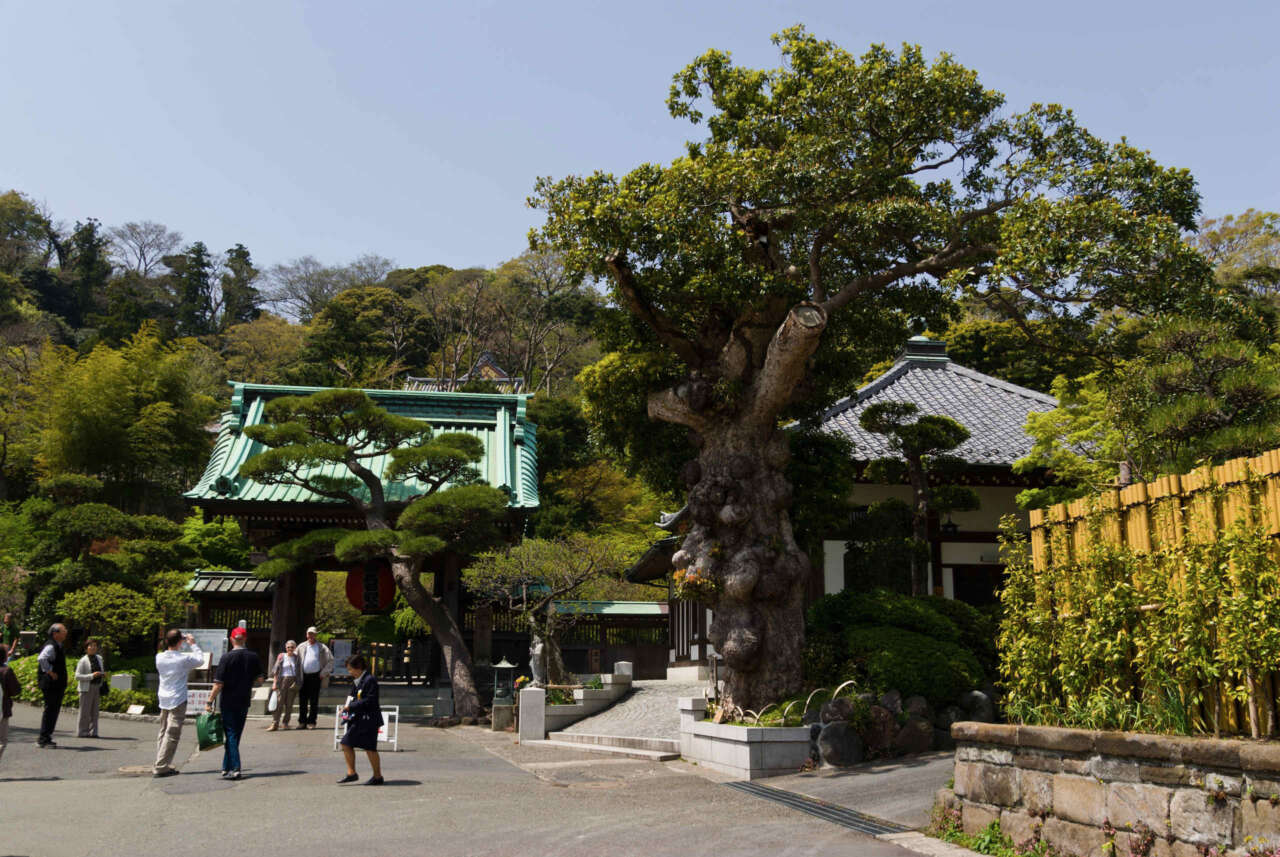
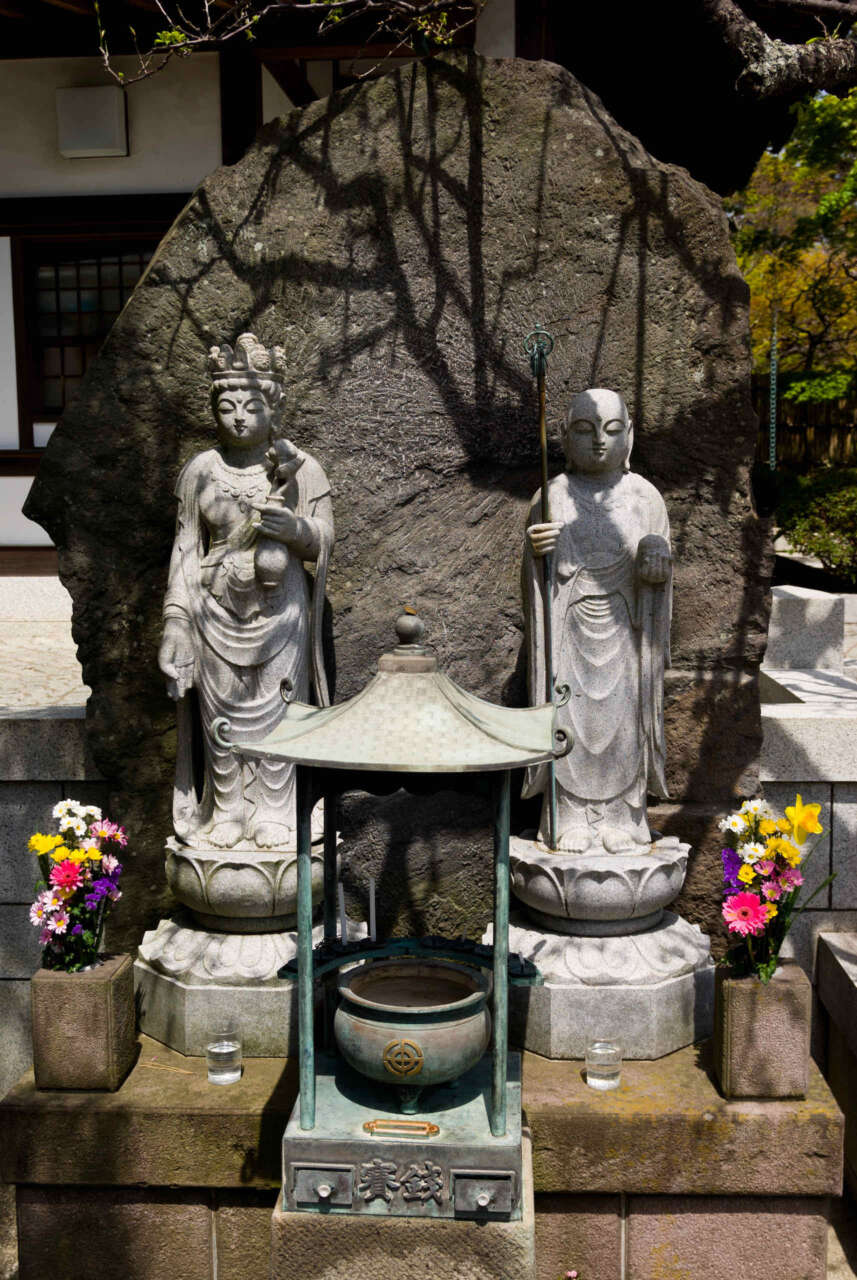
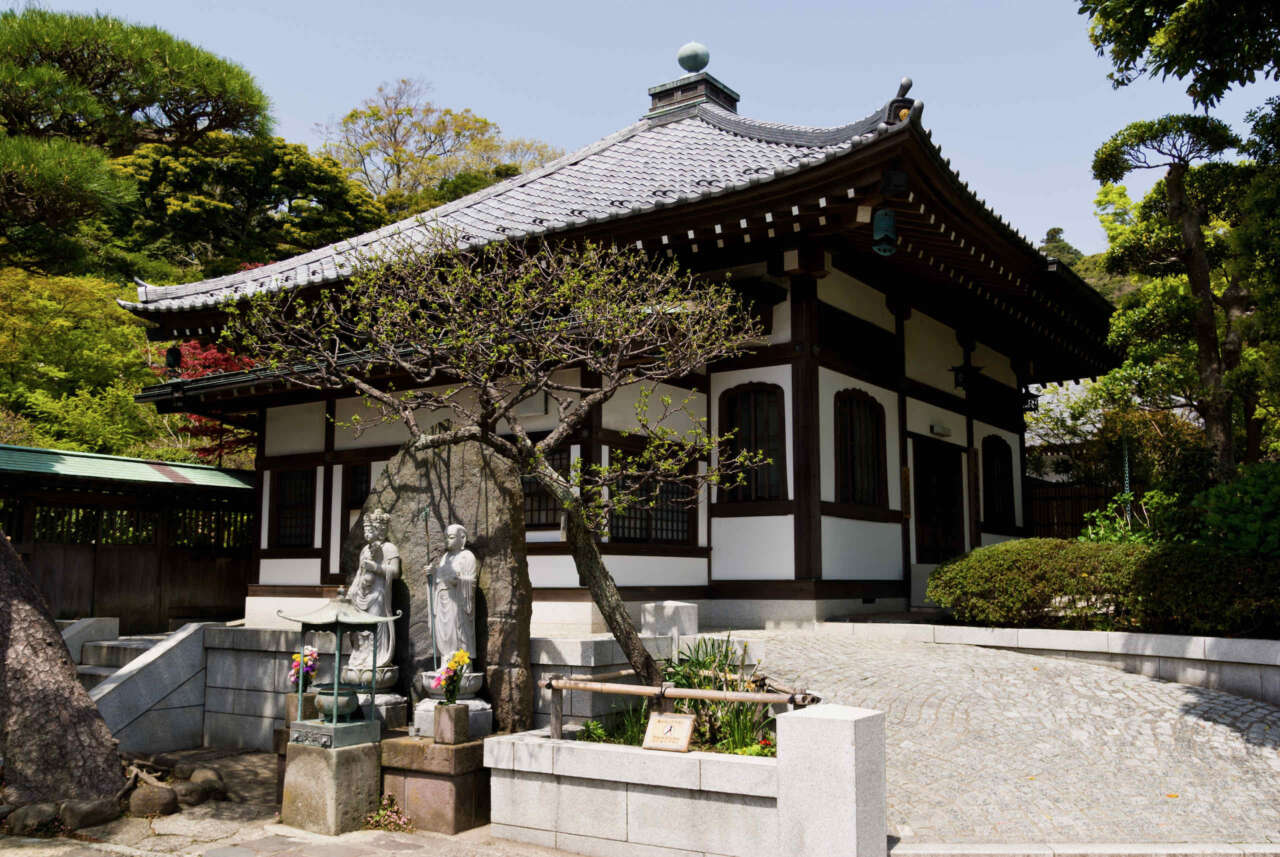
There is an exquisite garden past the main gate with turtle, a koi pond and stone lanterns.
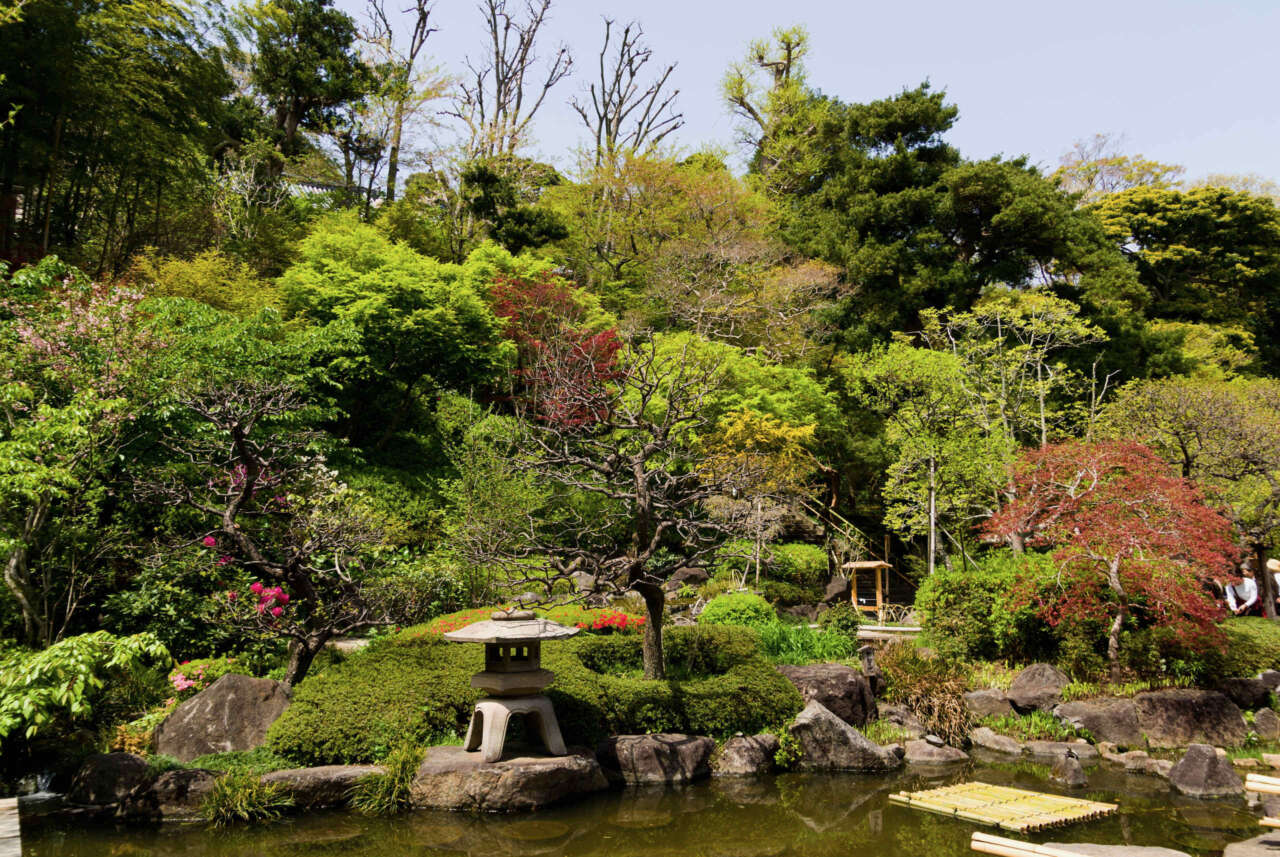
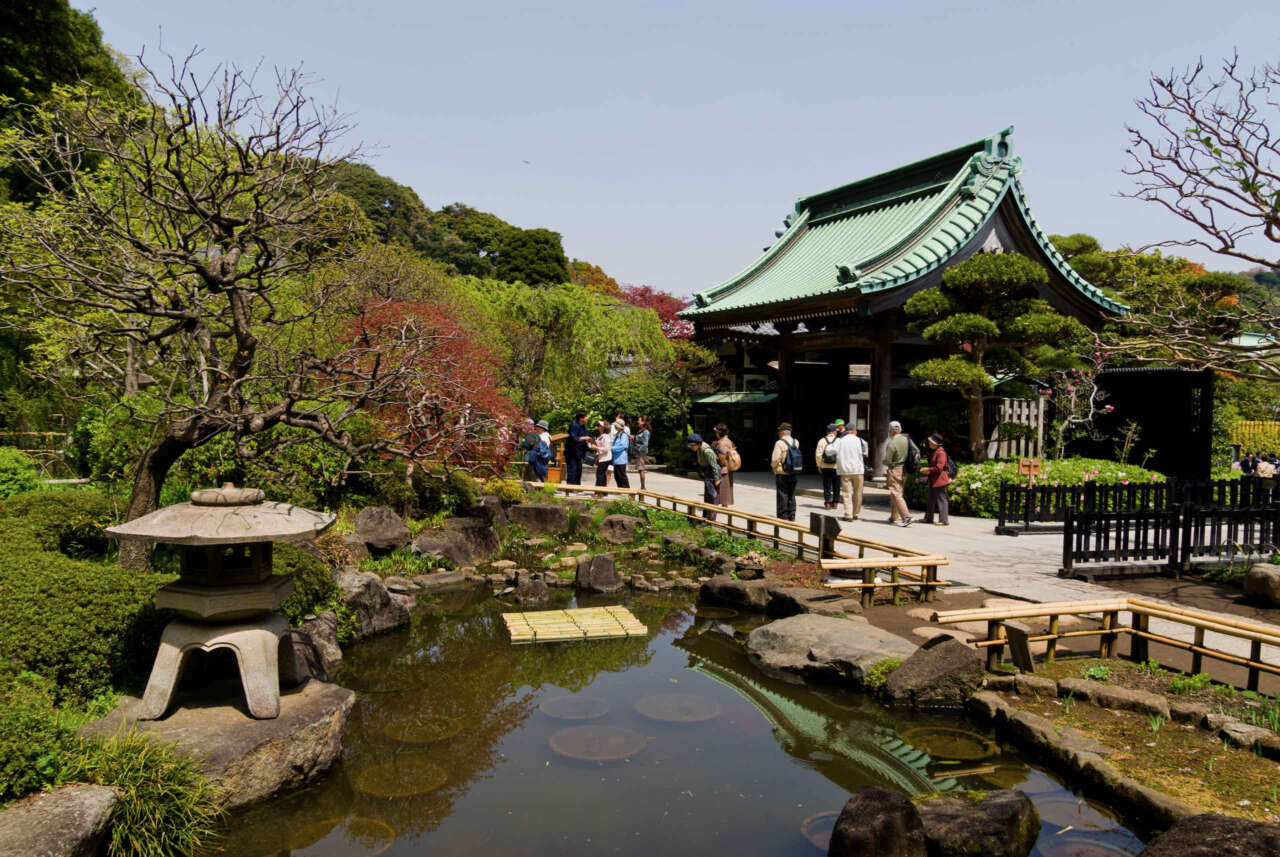
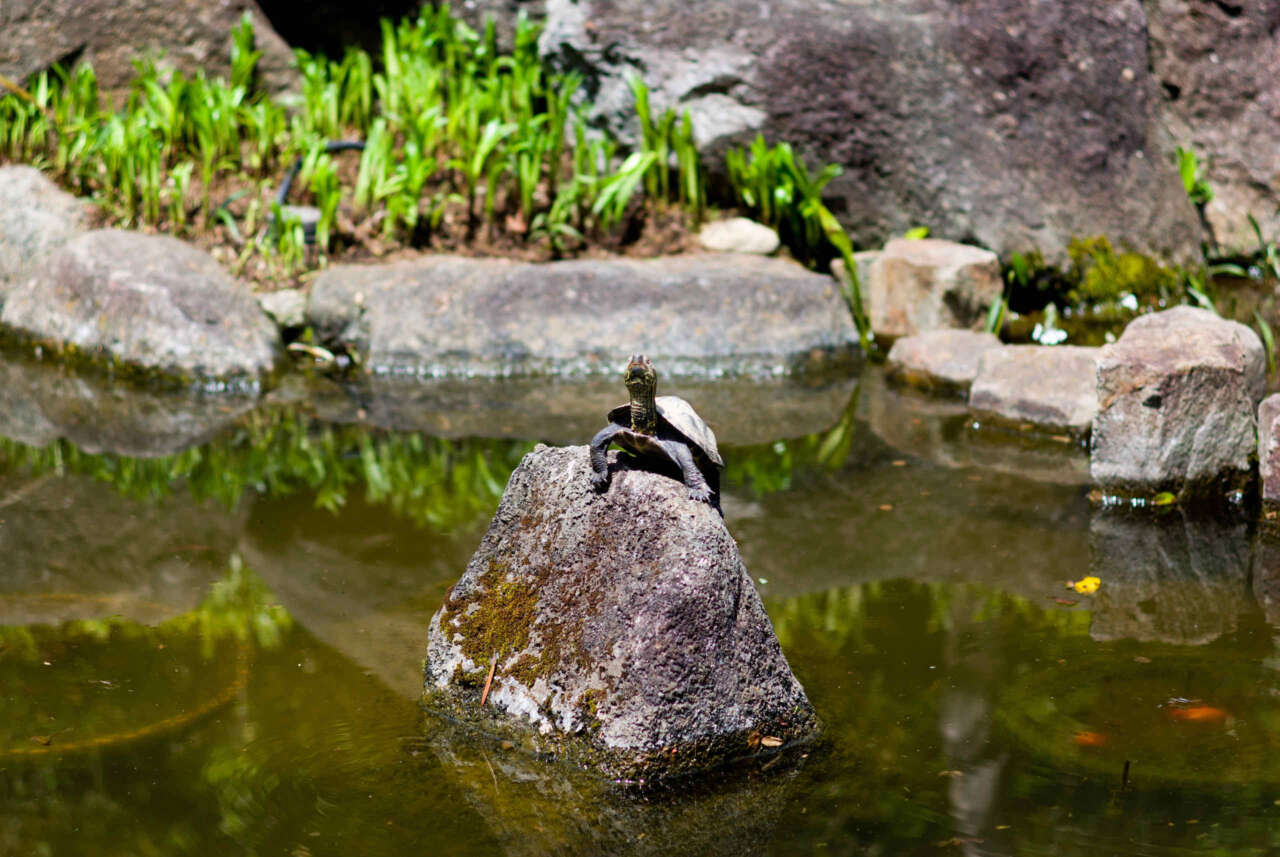
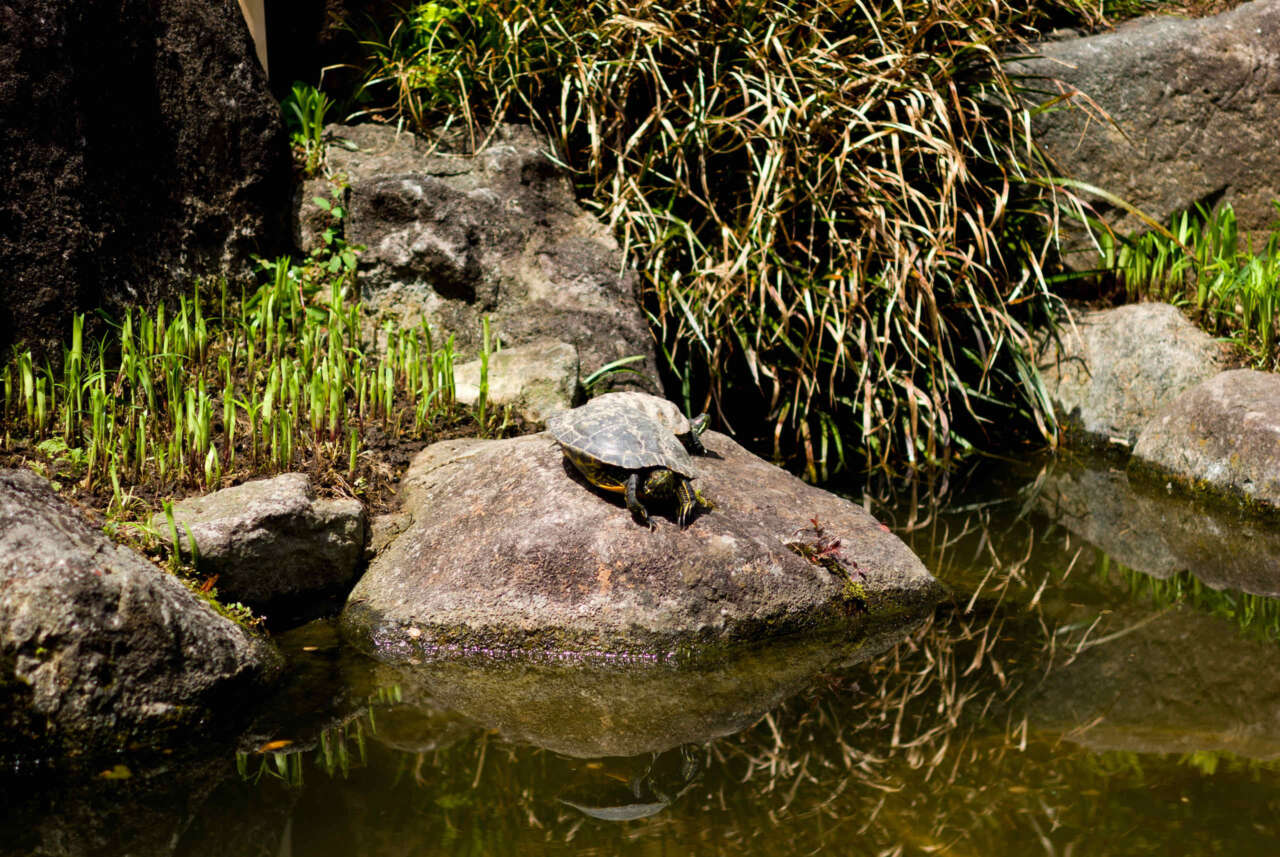
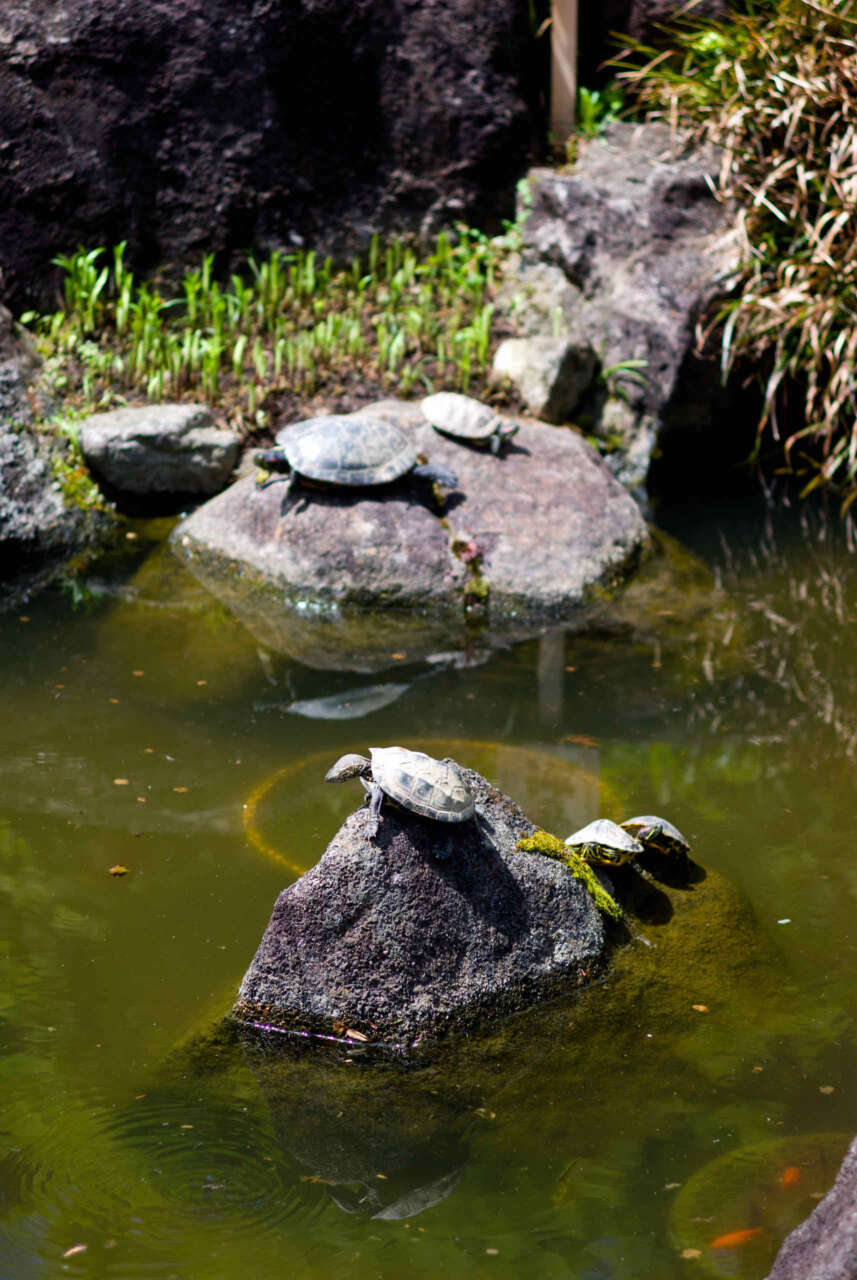
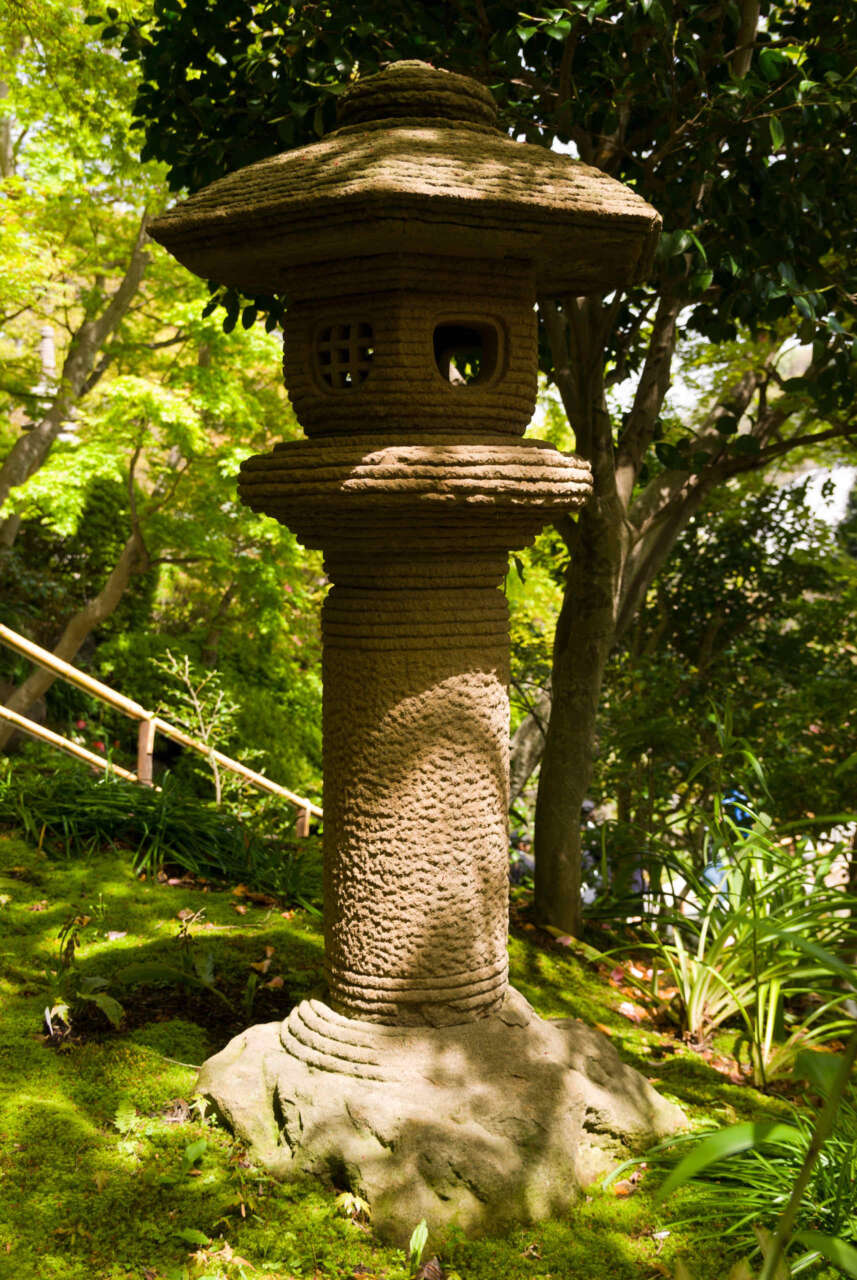
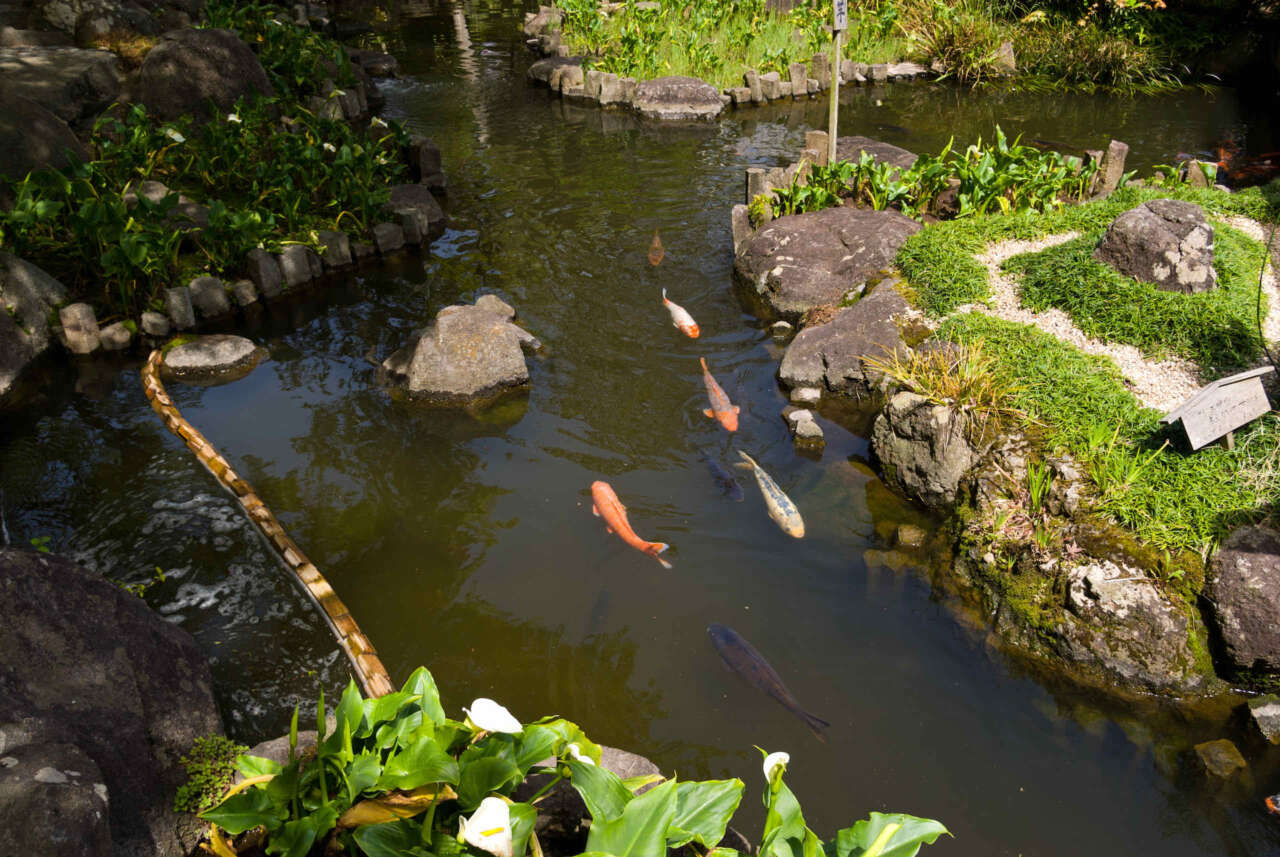
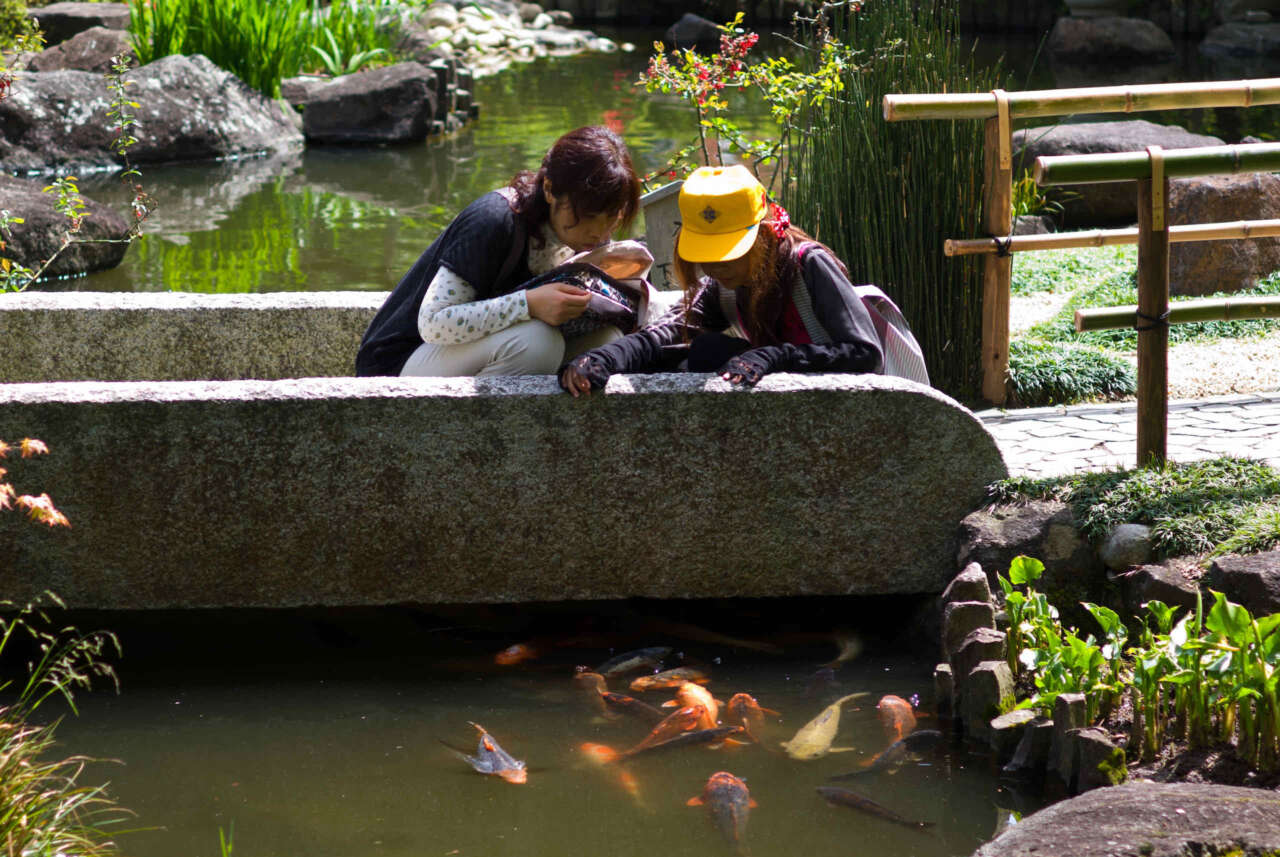
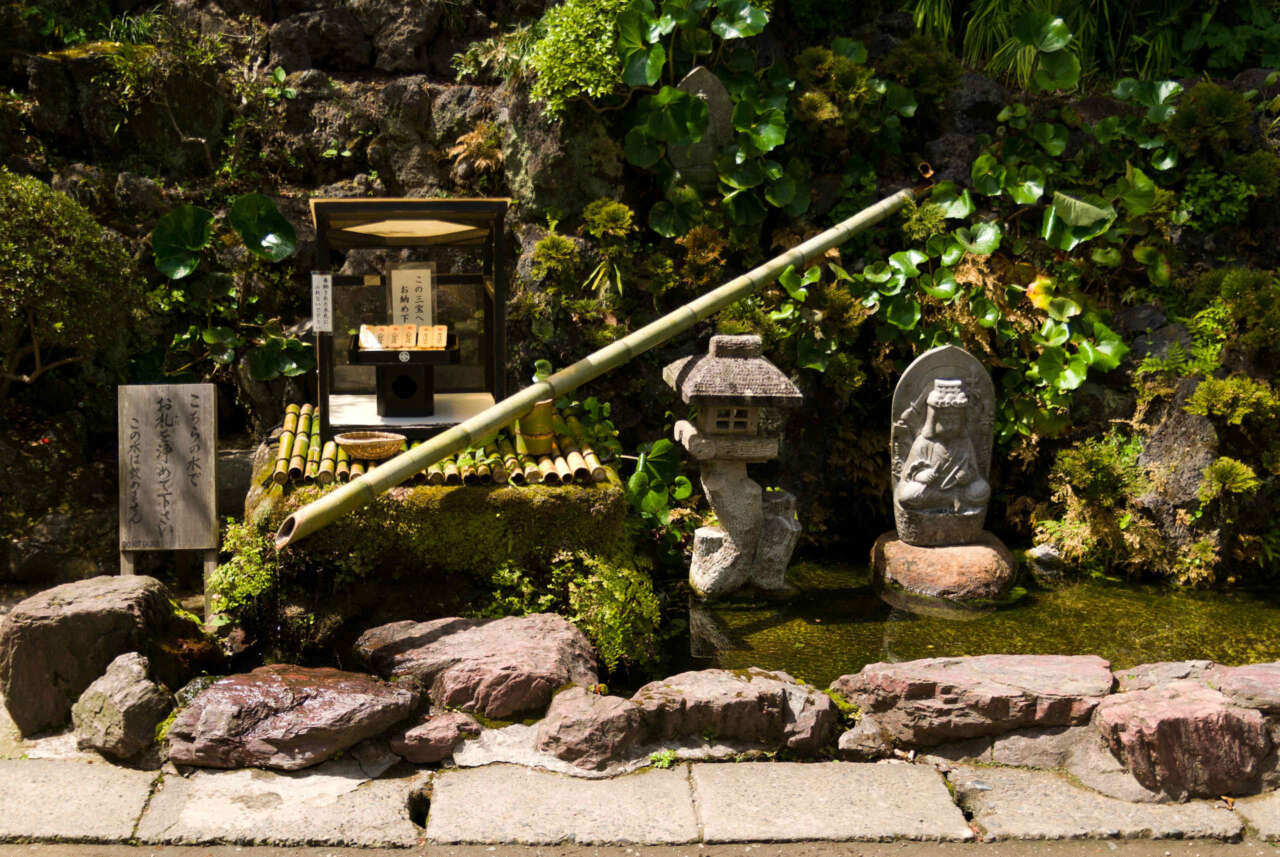
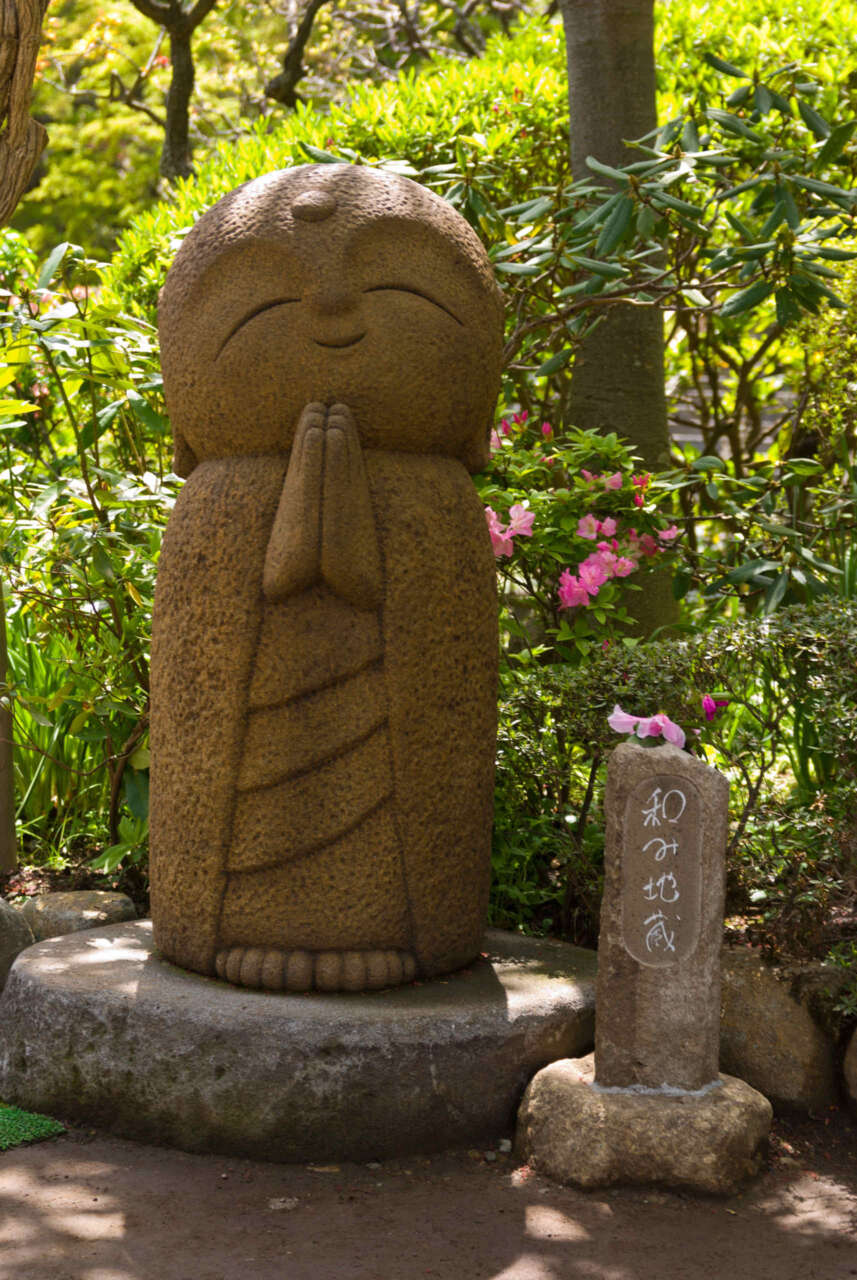
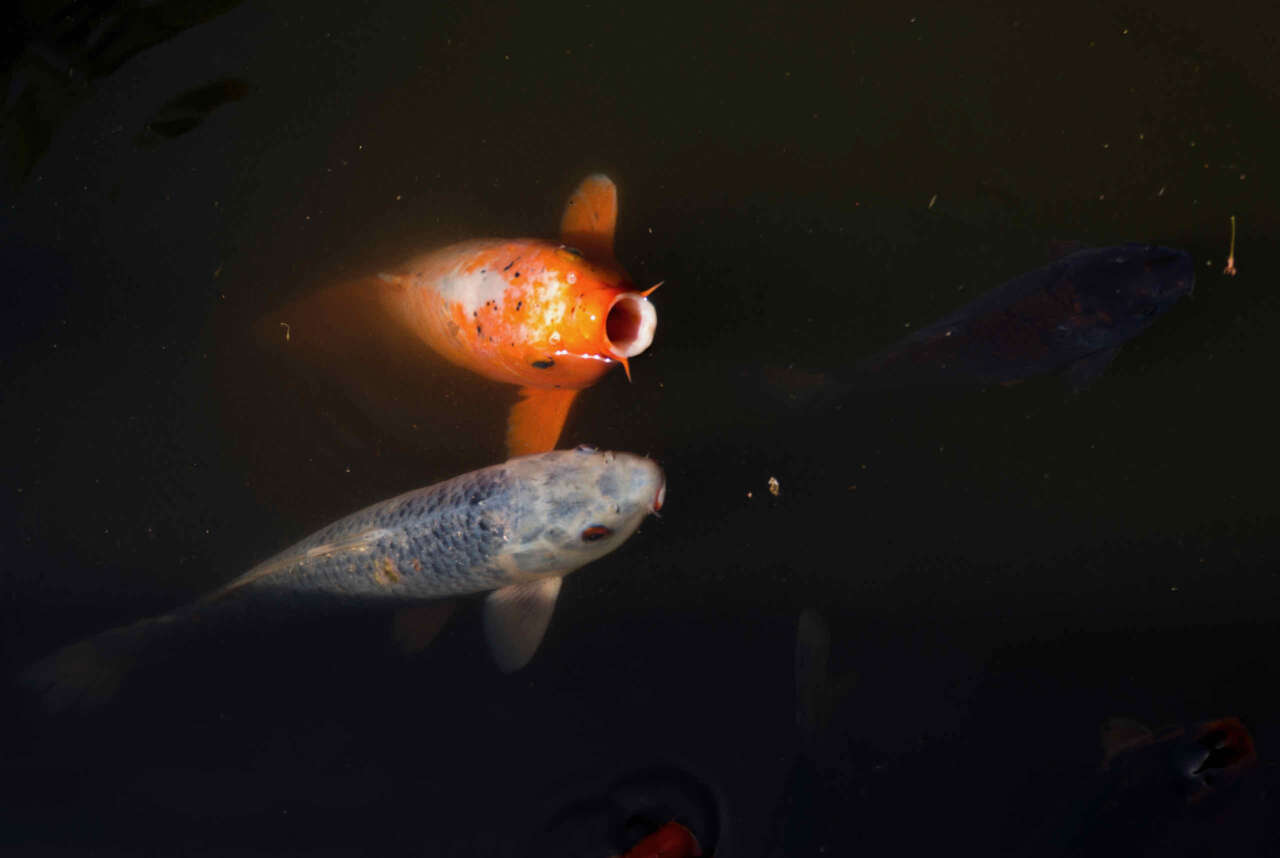
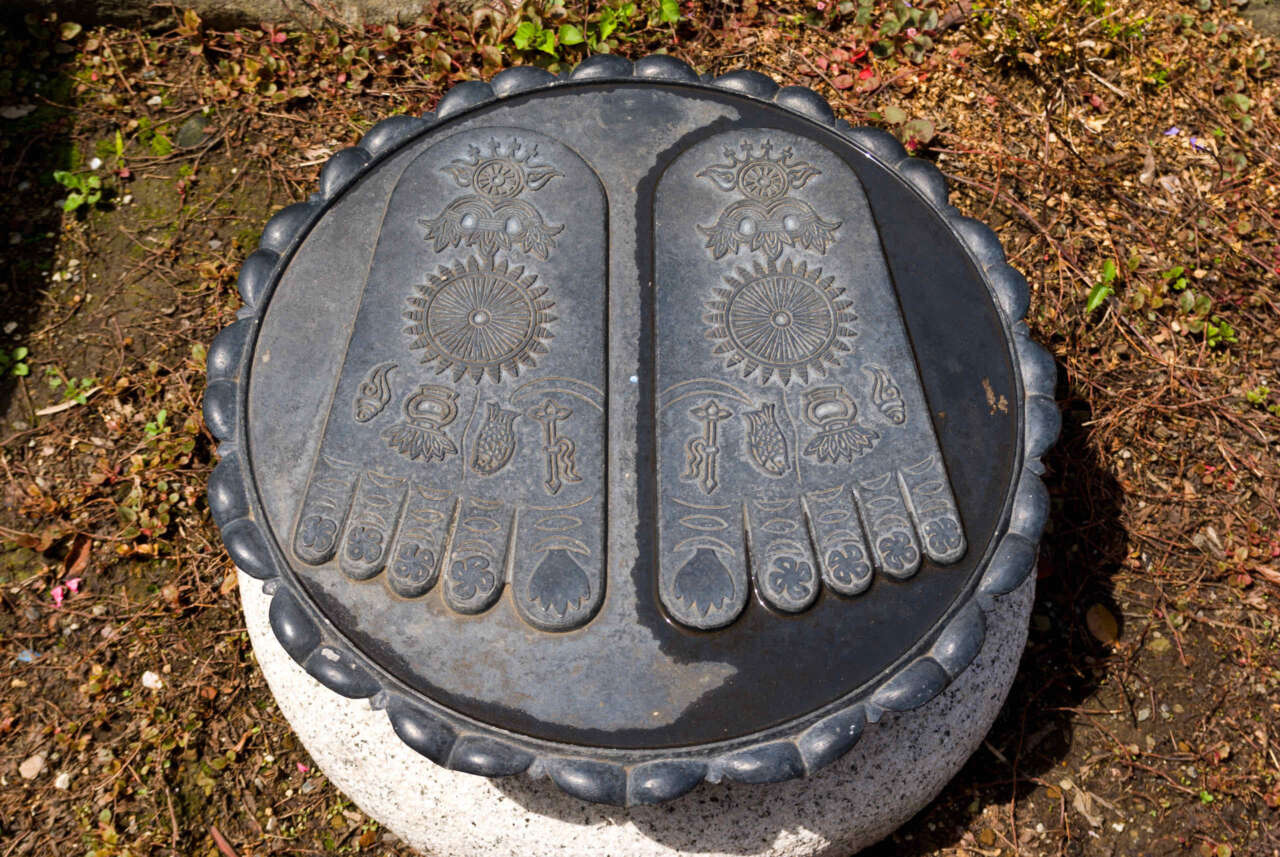
This is a sculpture of Kannon’s feet – I’m assuming it’s not true to scale.
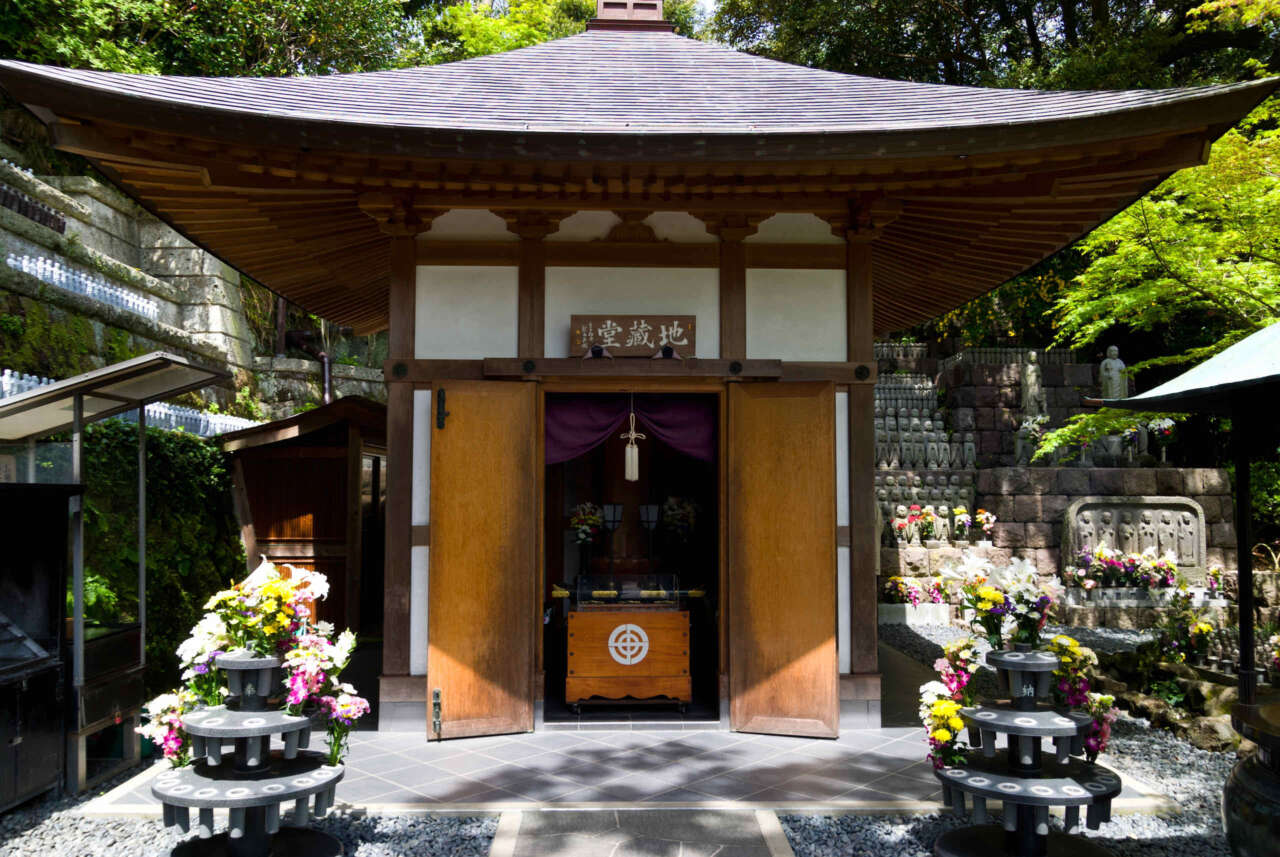
Most of the temple buildings are on a higher plateau, so we started to climb up the steps. Midway is the Jizo Hall (地蔵), which houses Fukuju-Jizo.
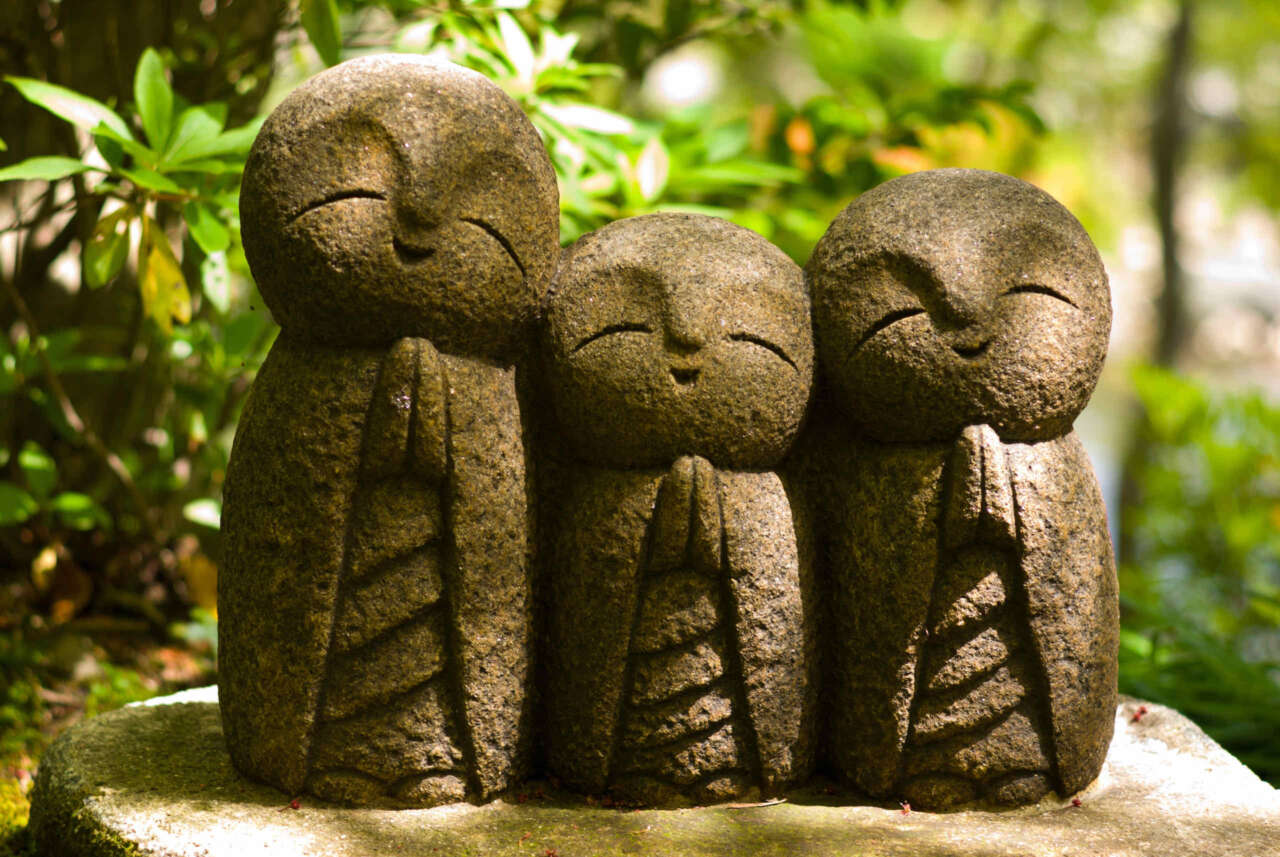
“Happy Jizo” is the Bodhisattva usually associated with the protection of children, hence the smiling face.
This section of the temple is full of tiny Jizo statues guarded by Kannon, however I was saddened by the realisation that each statue has probably been donated by parents who have lost a child, and this is their way of remembering the one that will never grow to become an adult.
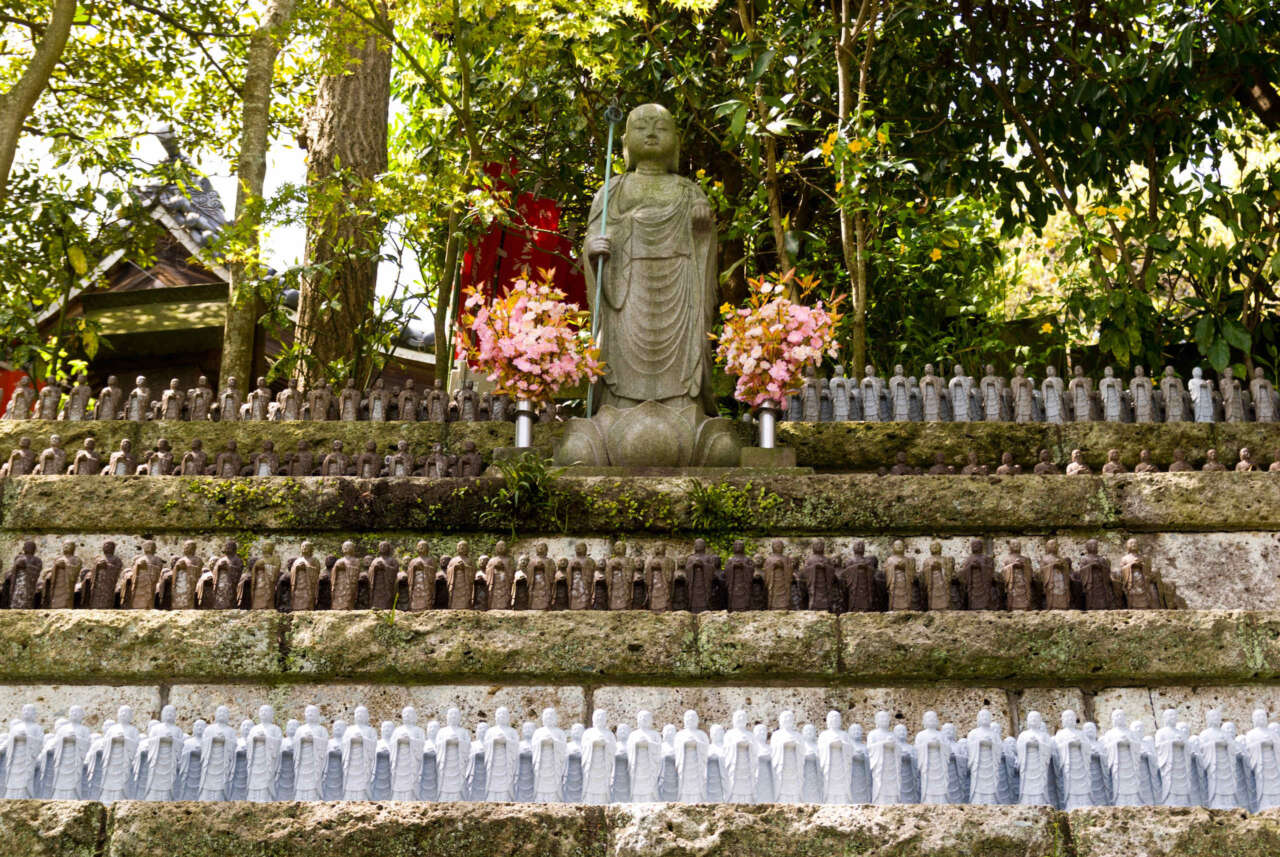
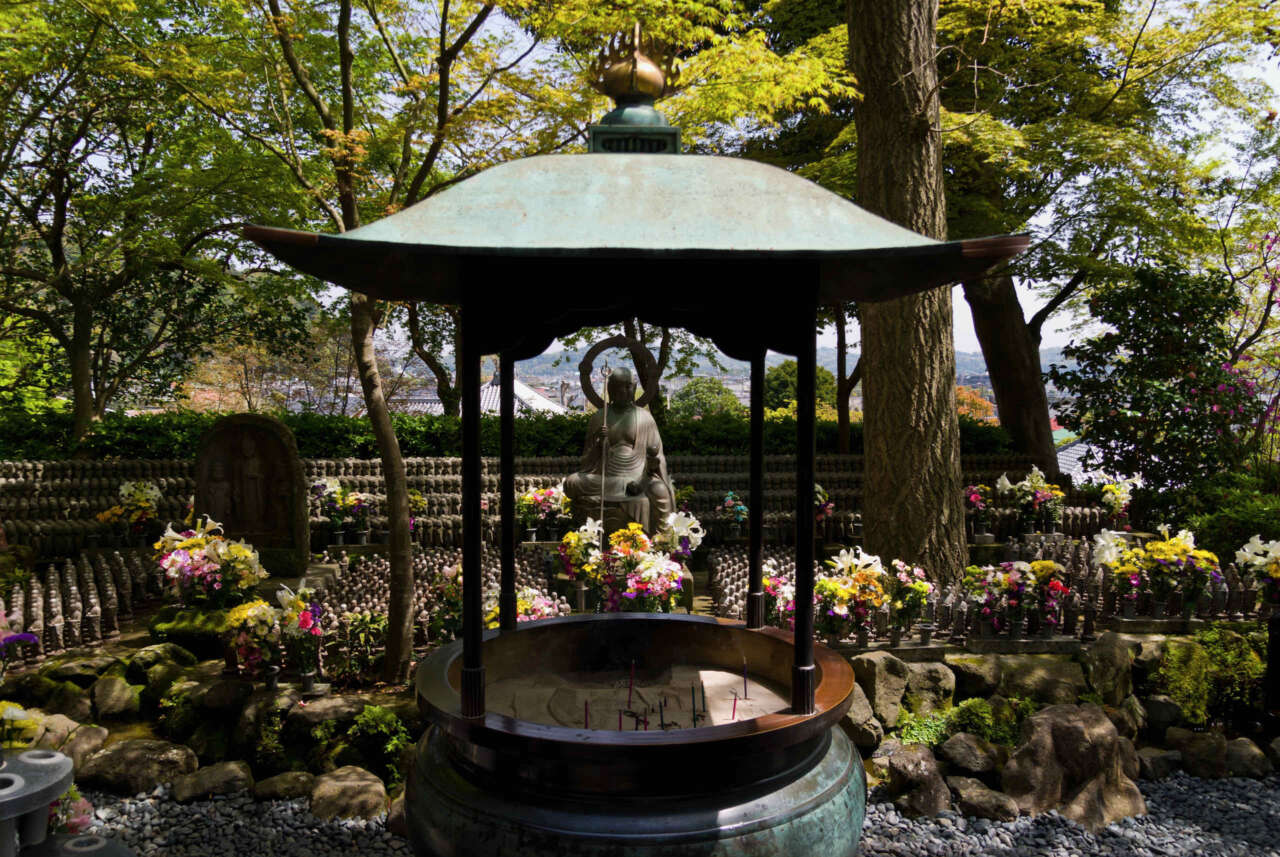
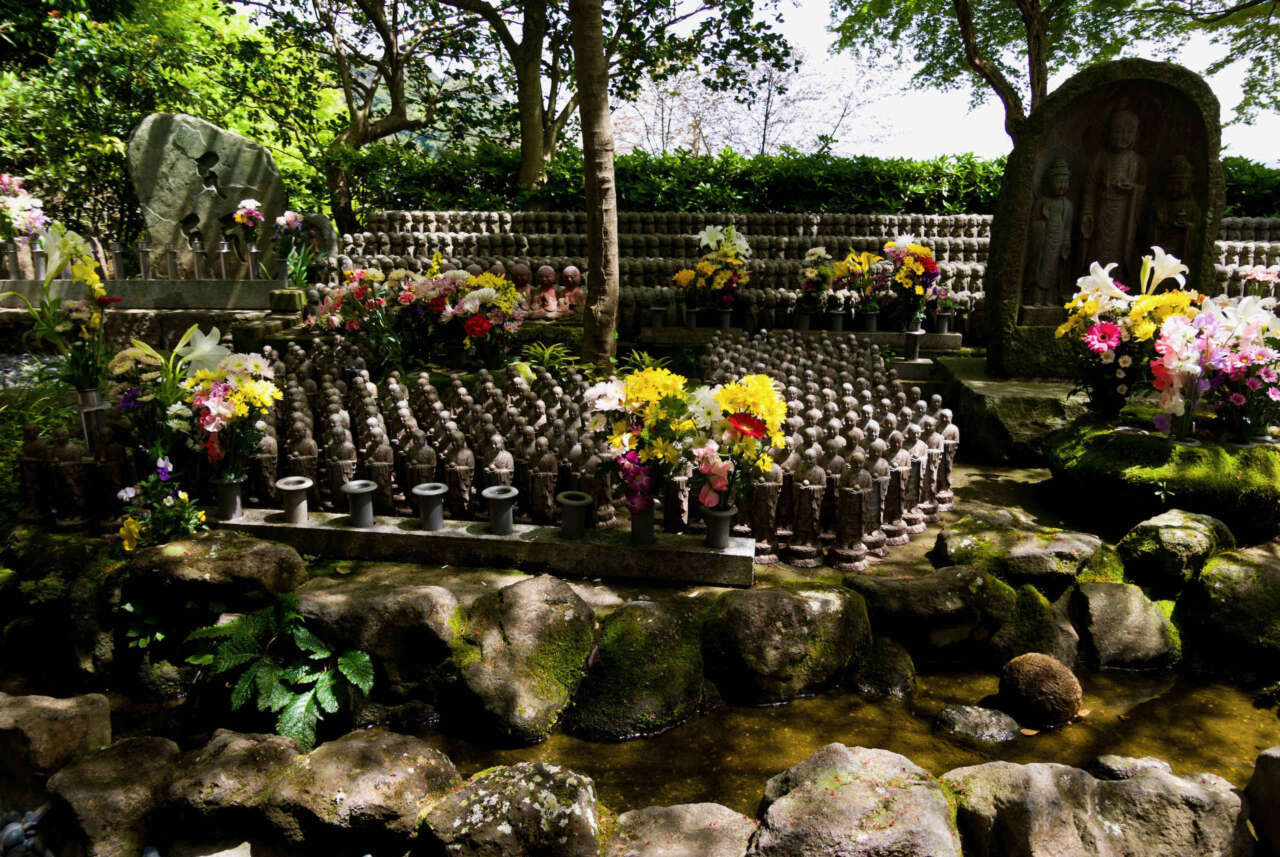
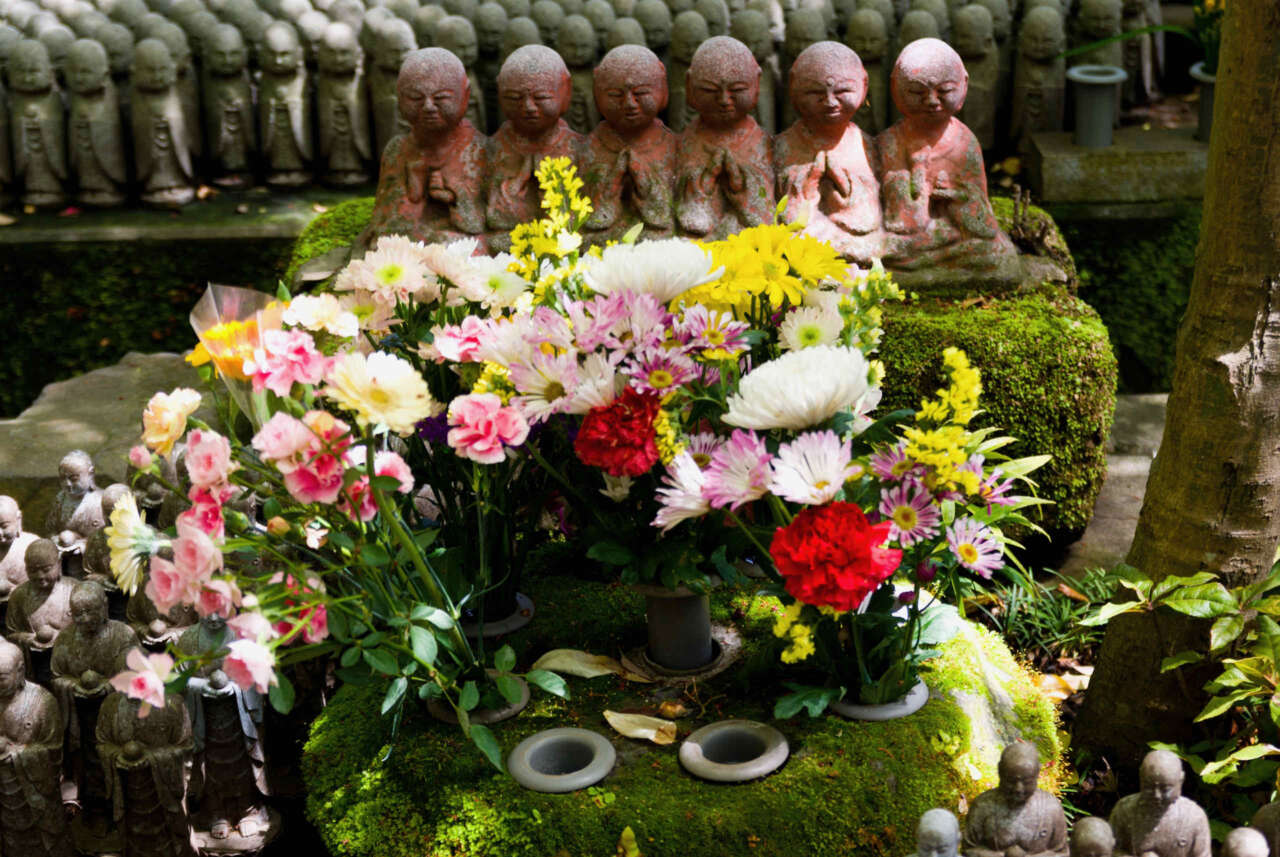
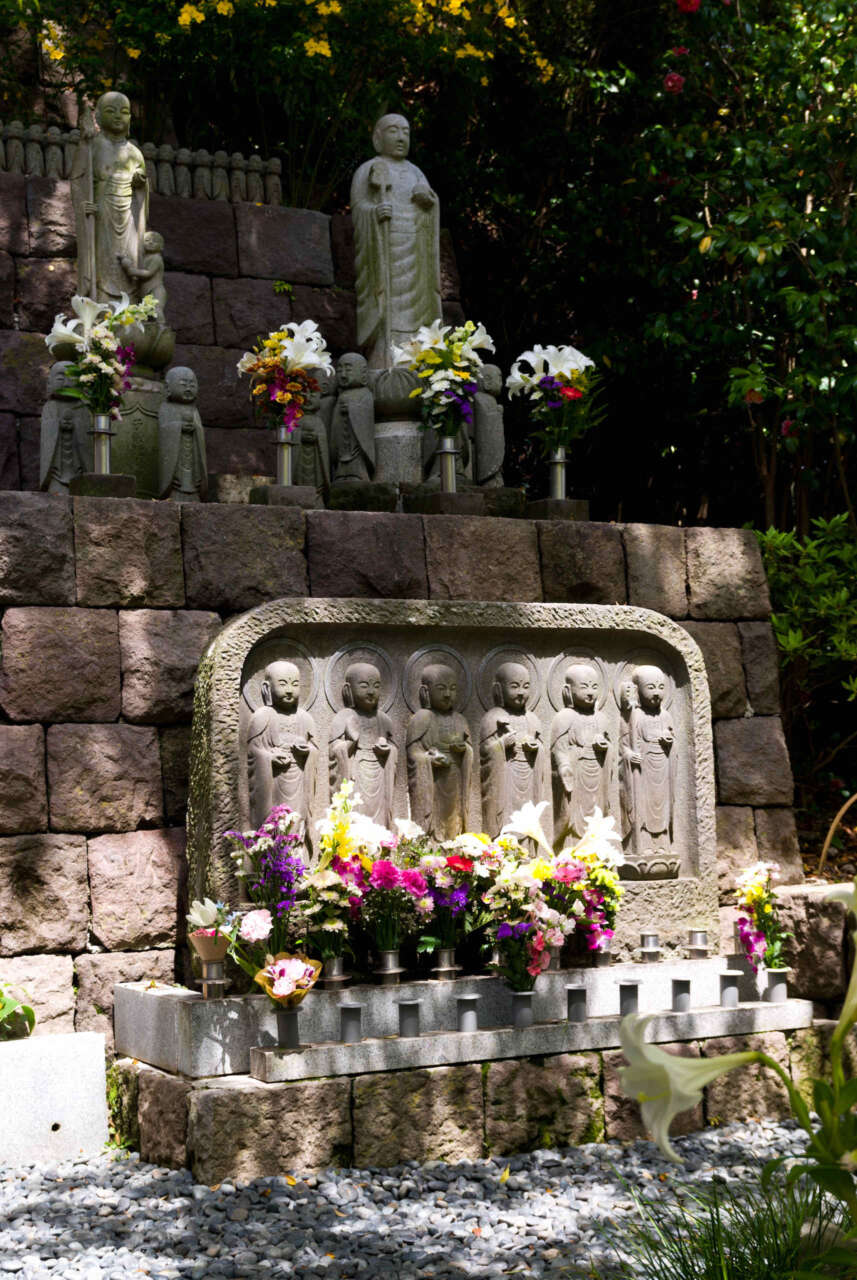
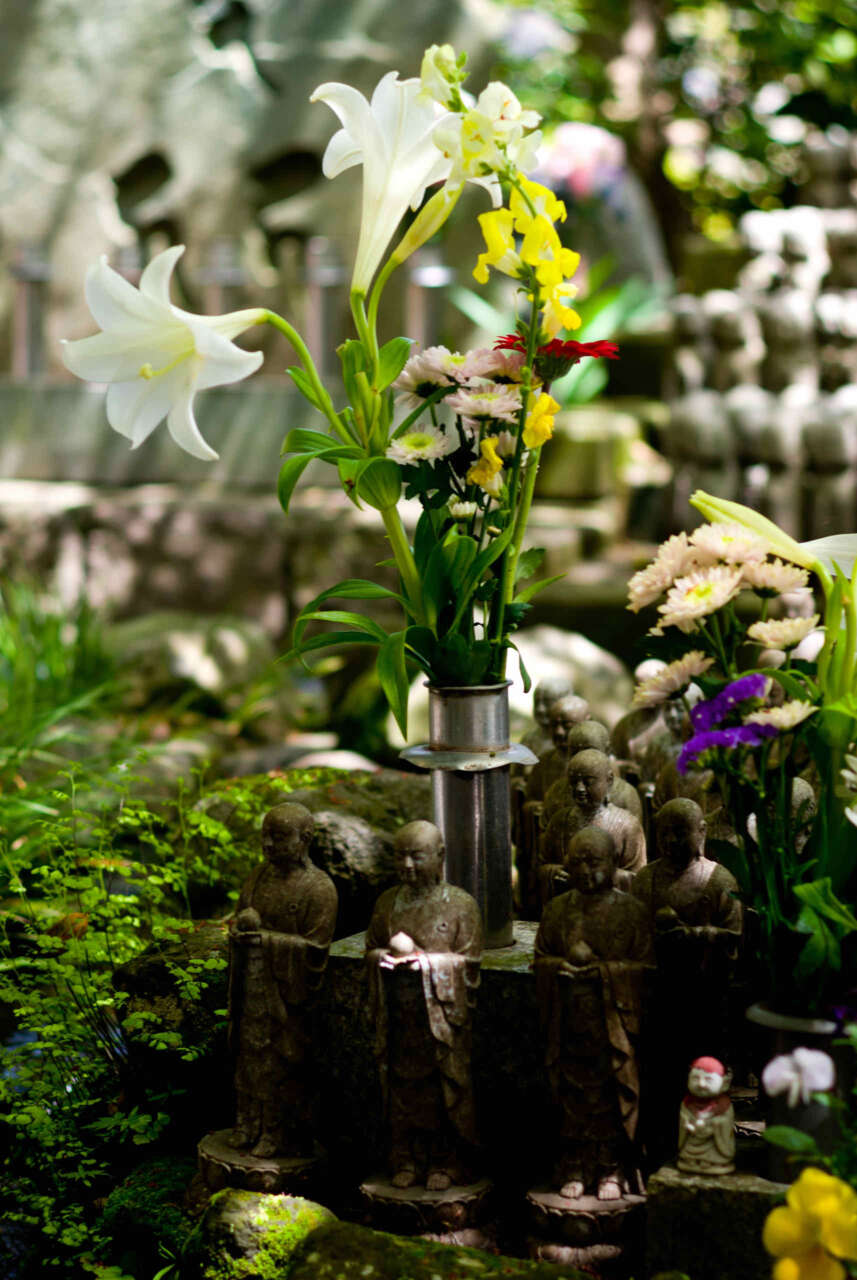
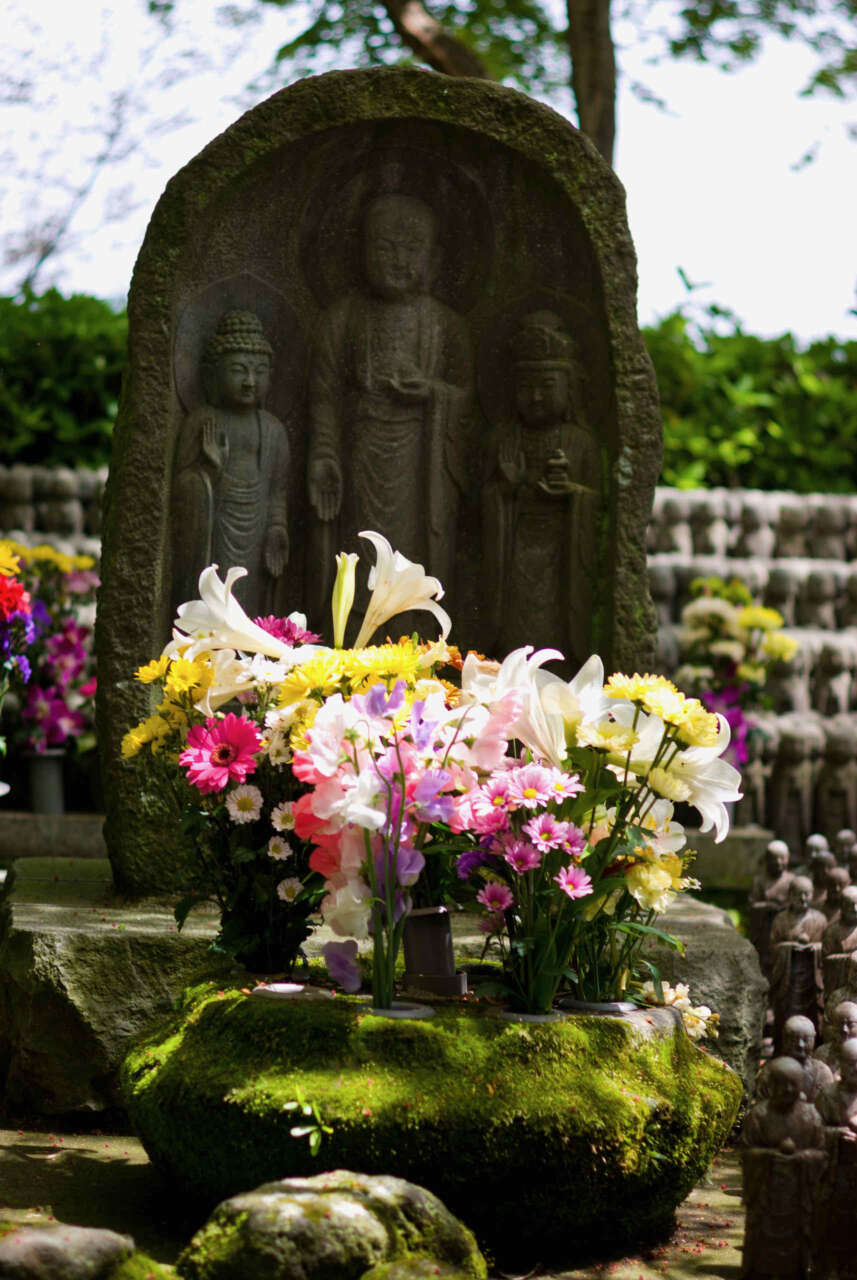
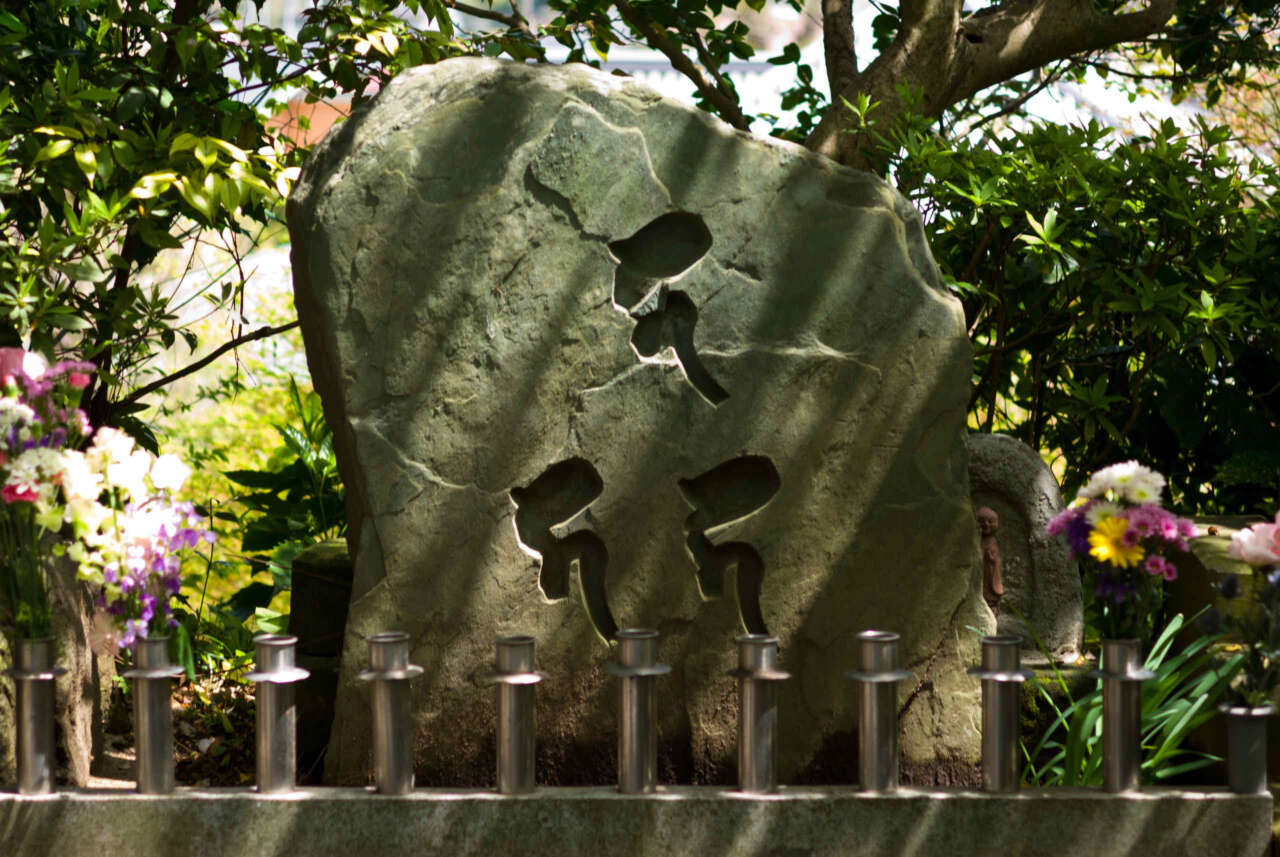
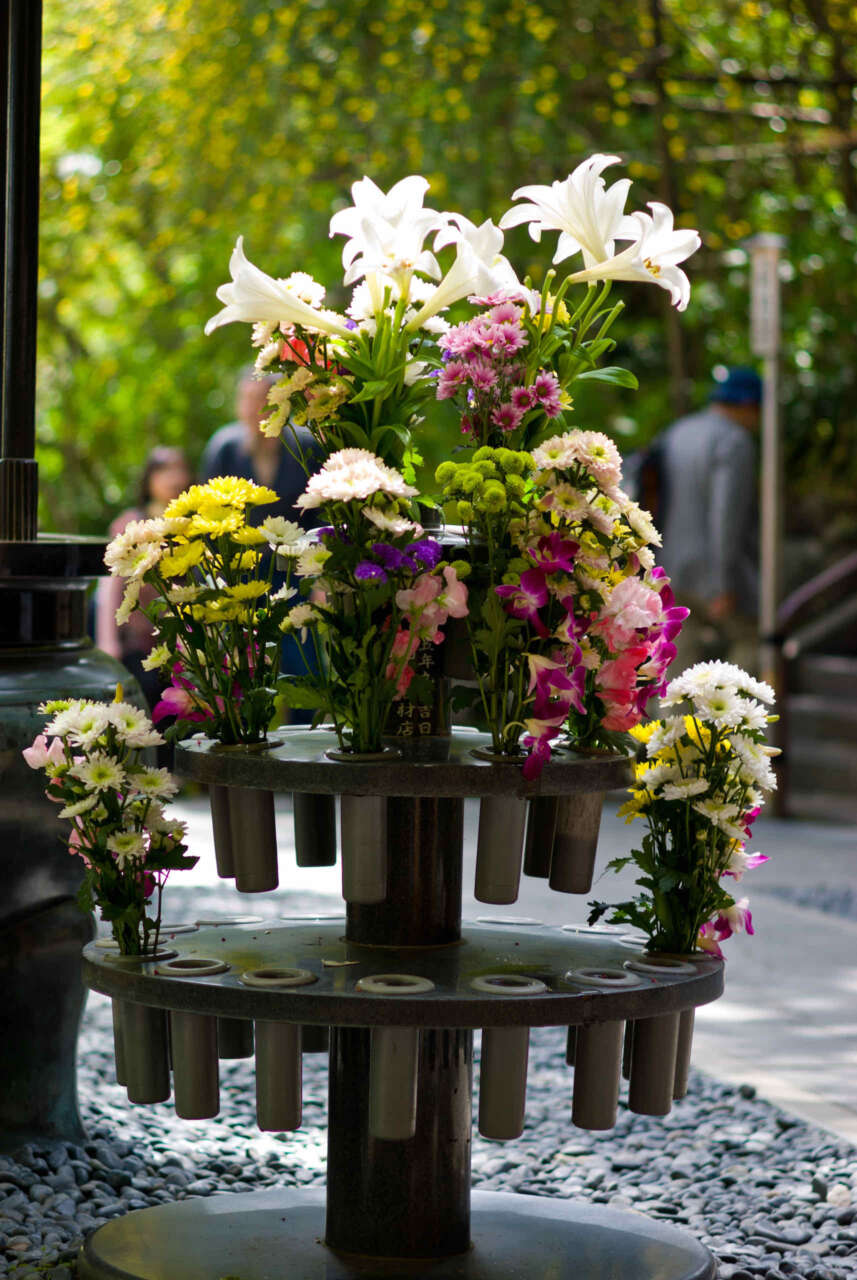
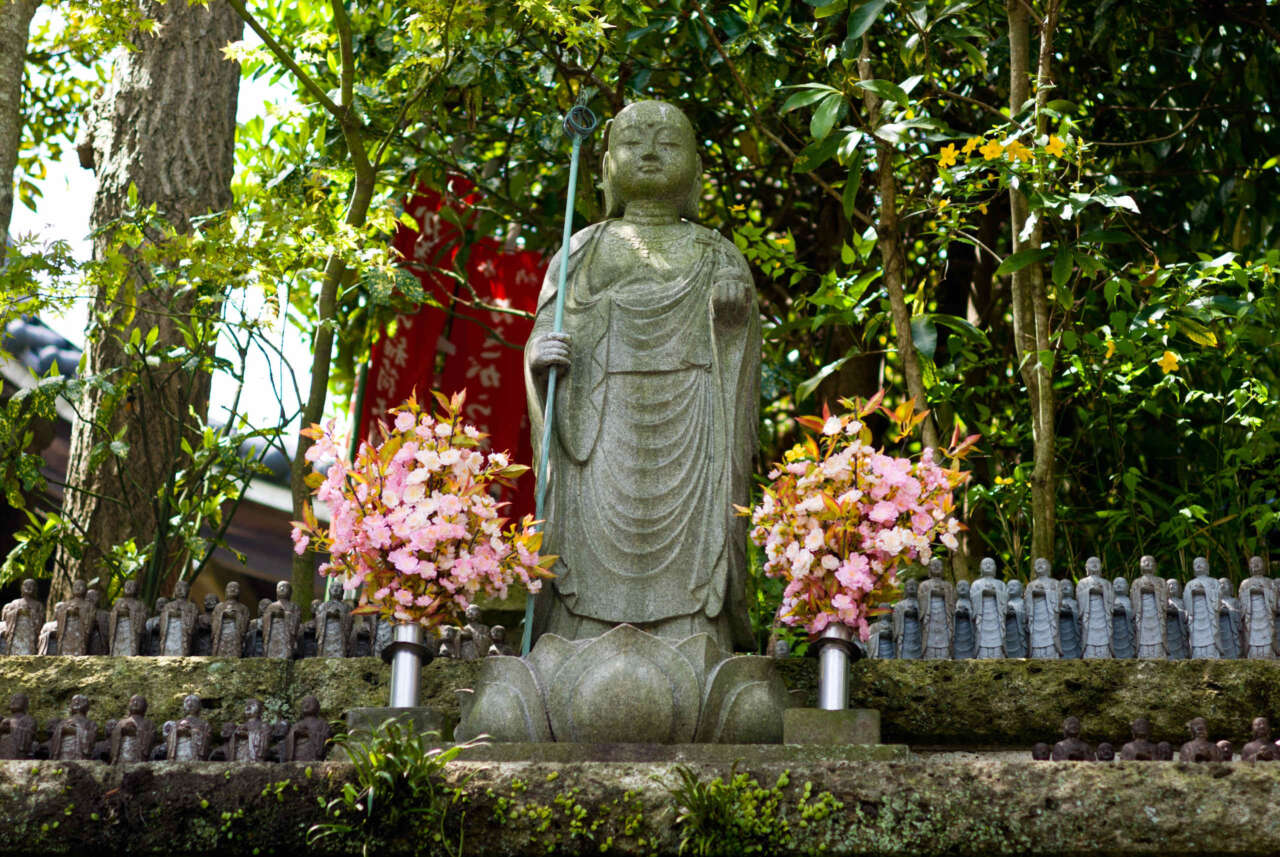
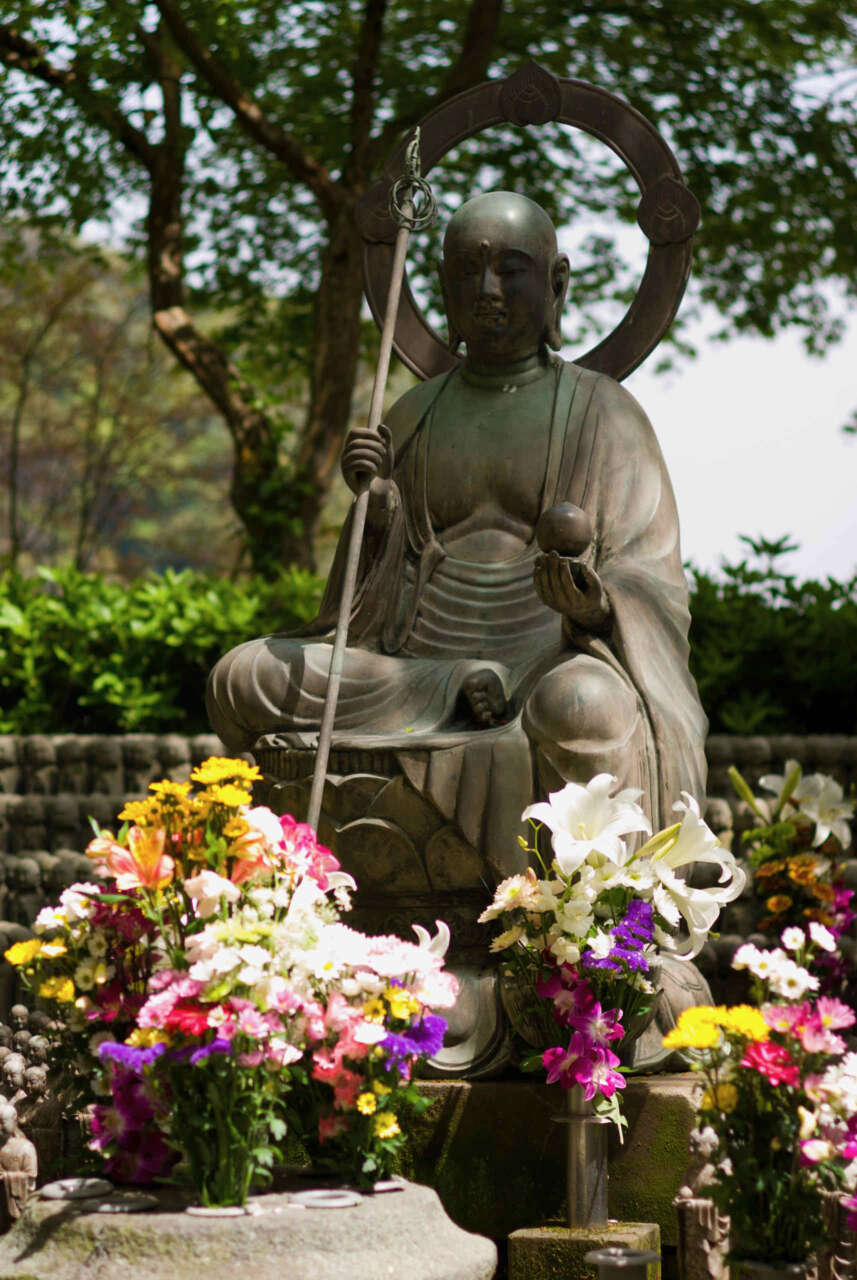
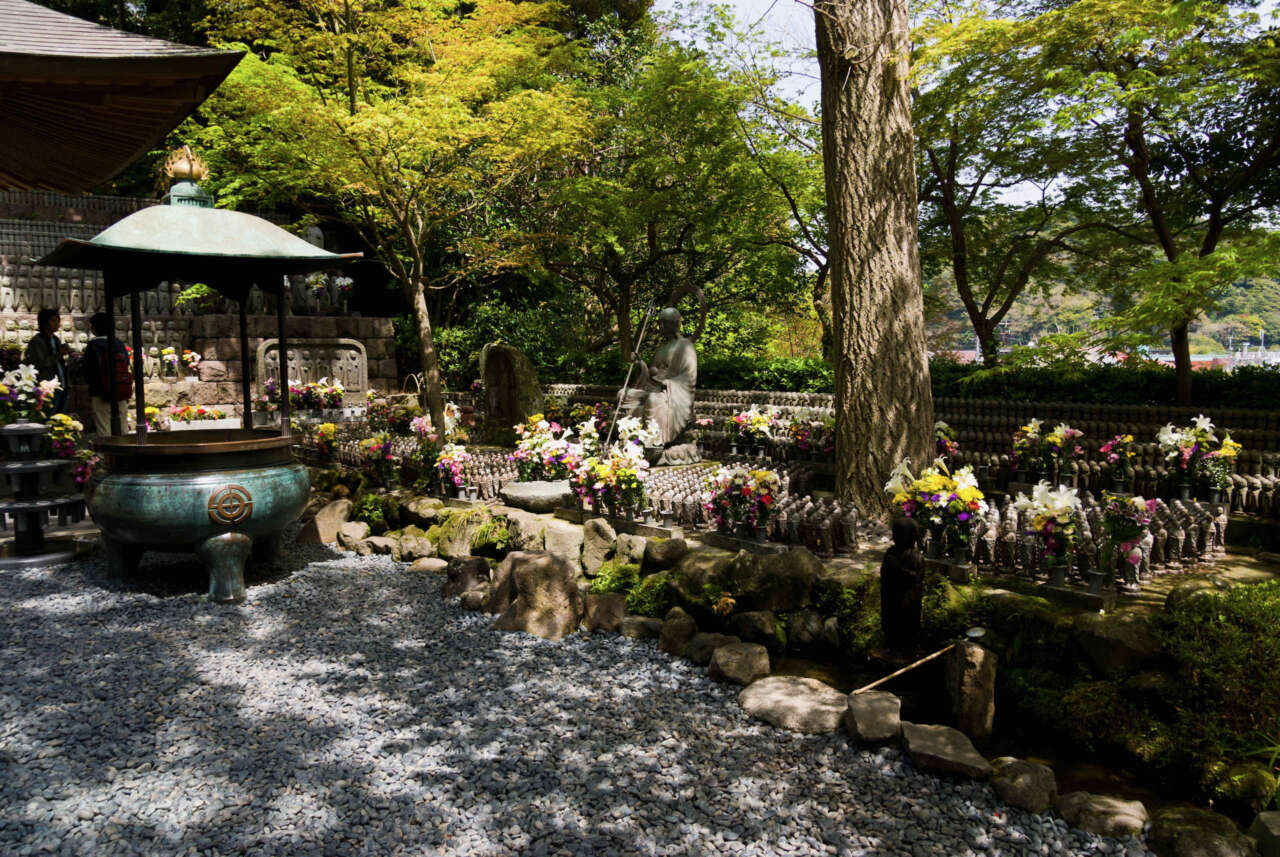
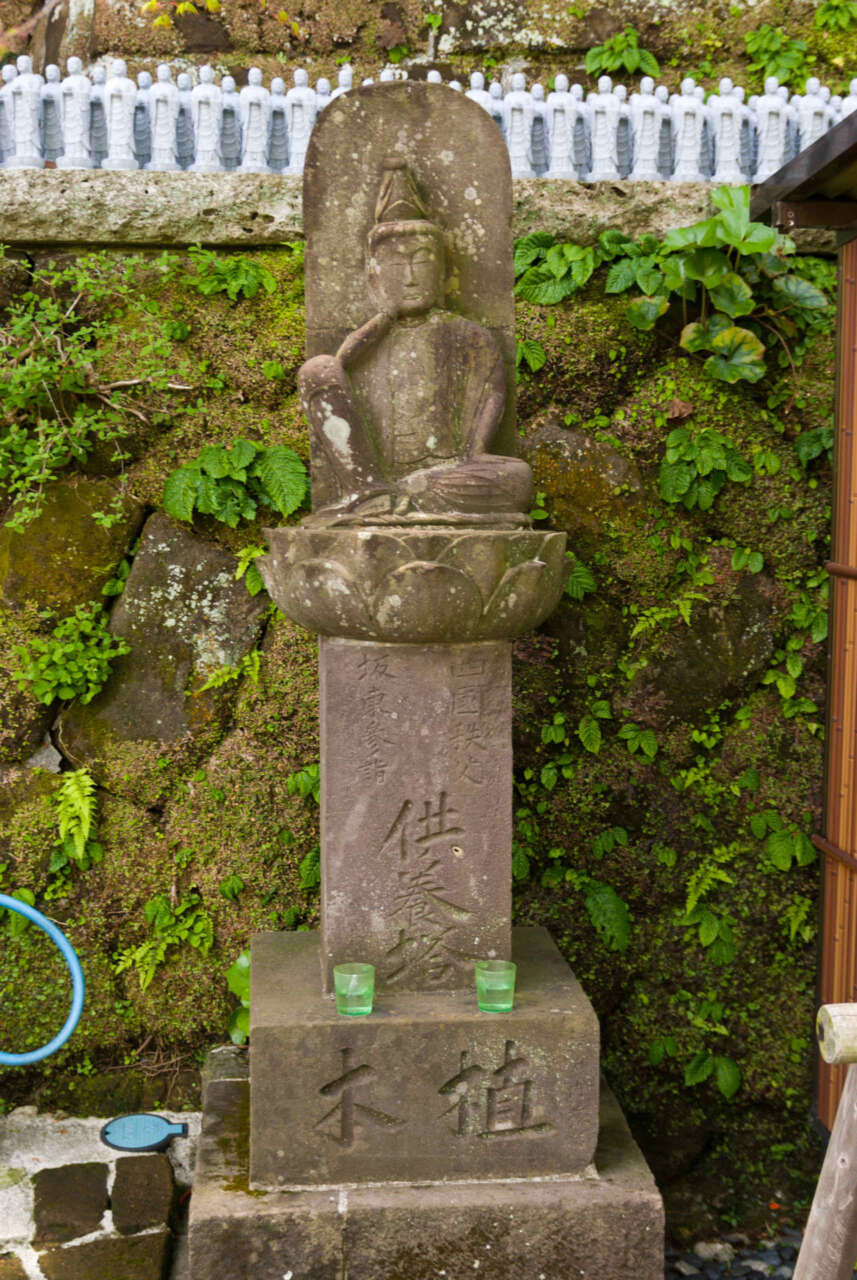
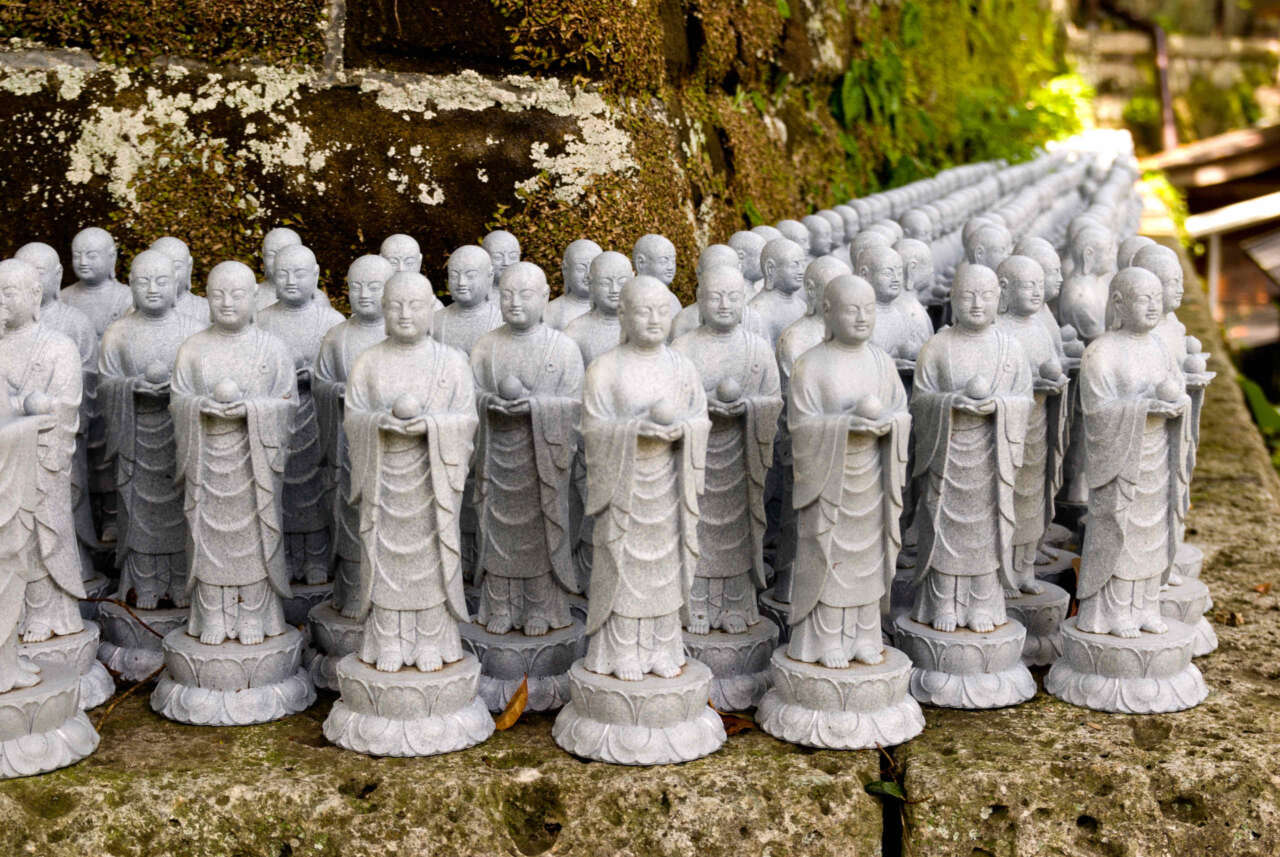

There’s also a very interesting pond in the shape of a swastika (note that the Buddhist swastika rotates clockwise and is a symbol of the sun, whereas the Nazi swastika rotates anti-clockwise and is the symbol of magic and the occult).
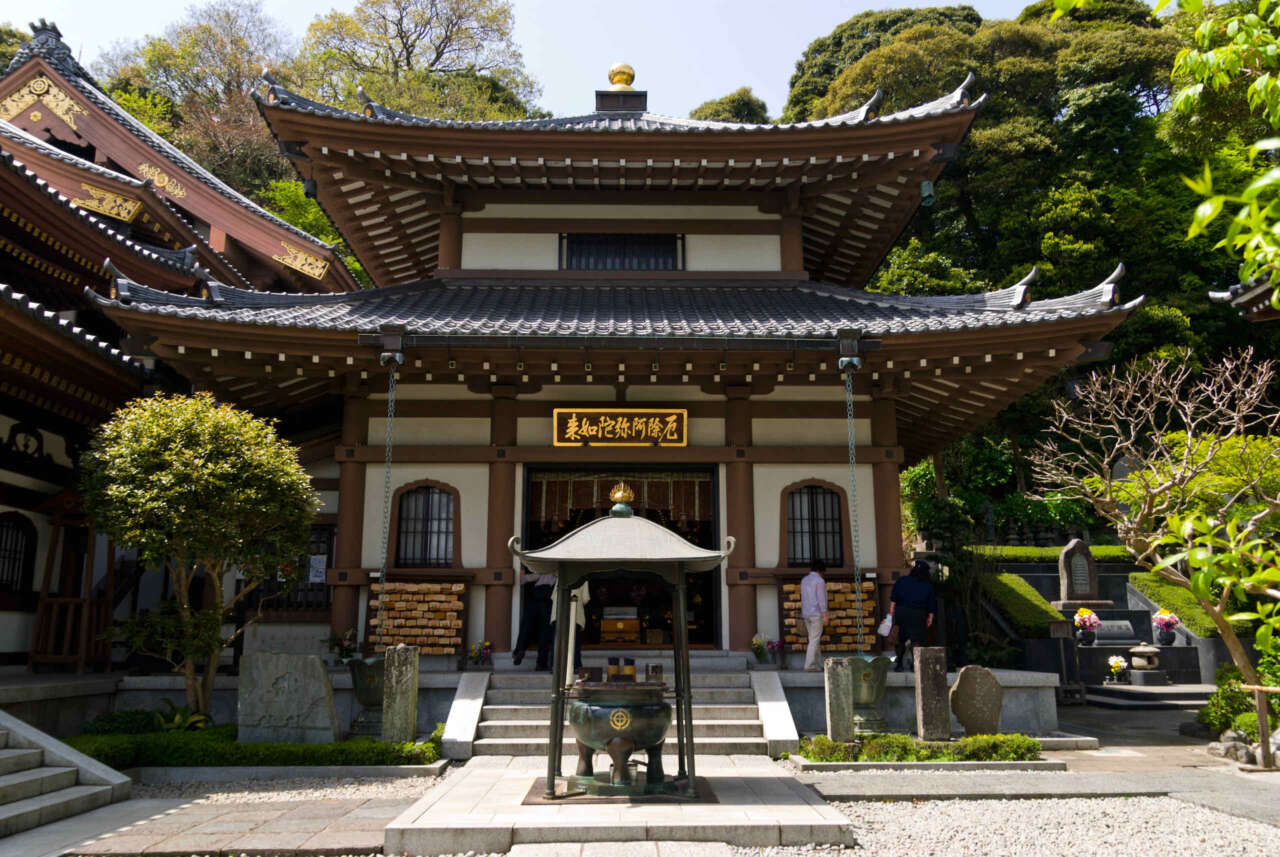
The first hall when we reached the upper plateau was Amida Hall (阿弥陀堂).
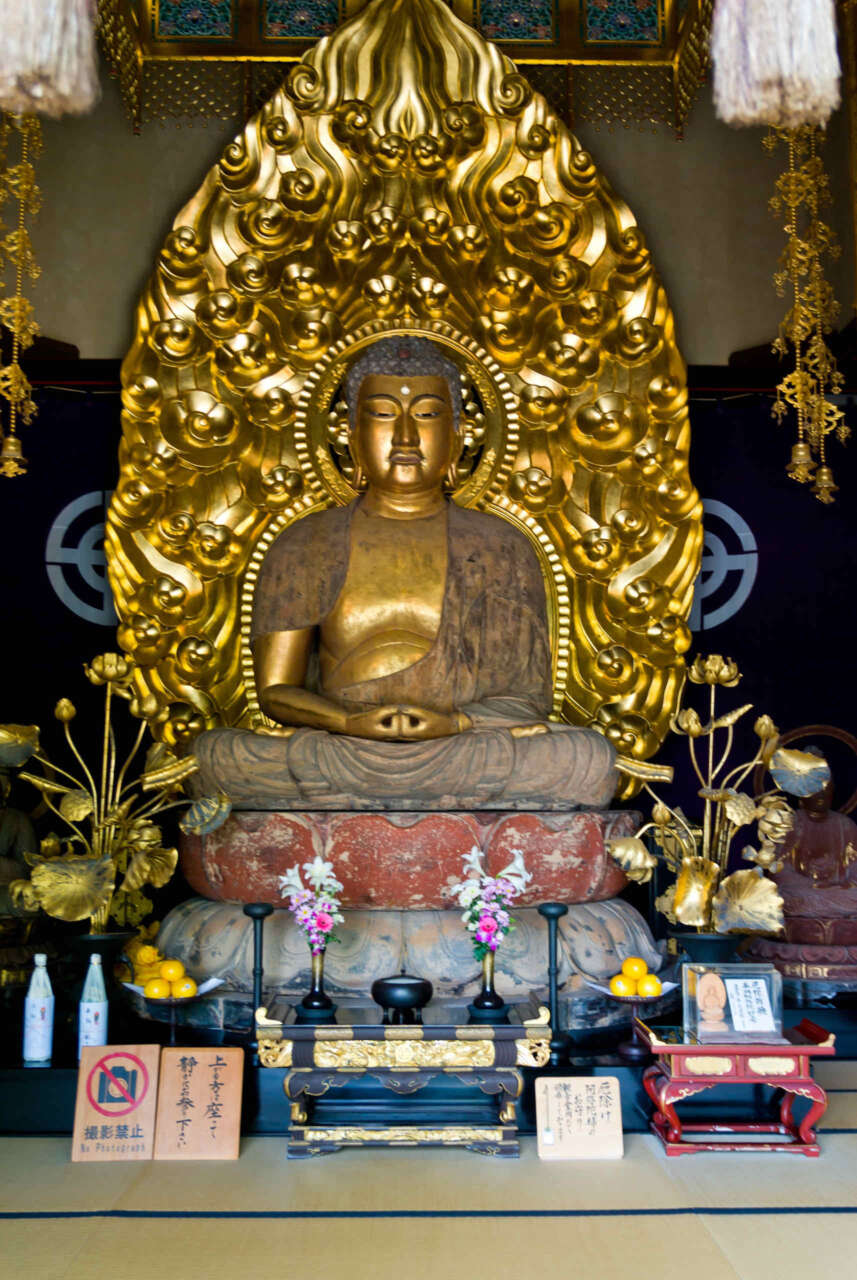
Inside is the beautiful golden statue of Amida Yakuyoke Buddha (阿弥陀如来坐). Photography is actually forbidden inside any of the halls, but I took these ones from just outside the entrance. This is one of 6 Amidas in Kamakura. It is used to ward off evil spirits and misfortune, and originated with the first shogun of Kamakura (Minamoto no Yorimoto).
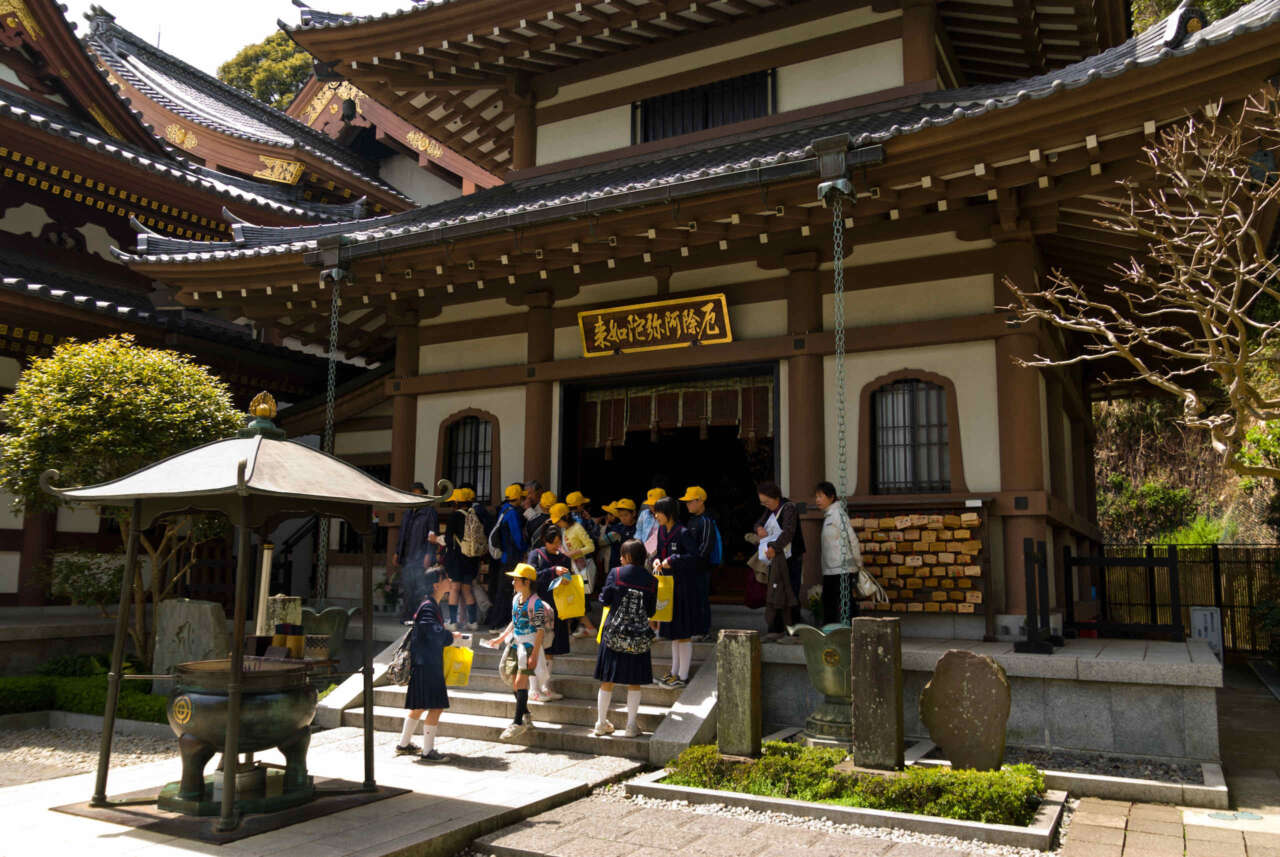
Some schoolkids on an excursion visiting this hall.
There’s also a very small Inari shrine here, called the Kagikara Inari (かぎから稲荷).
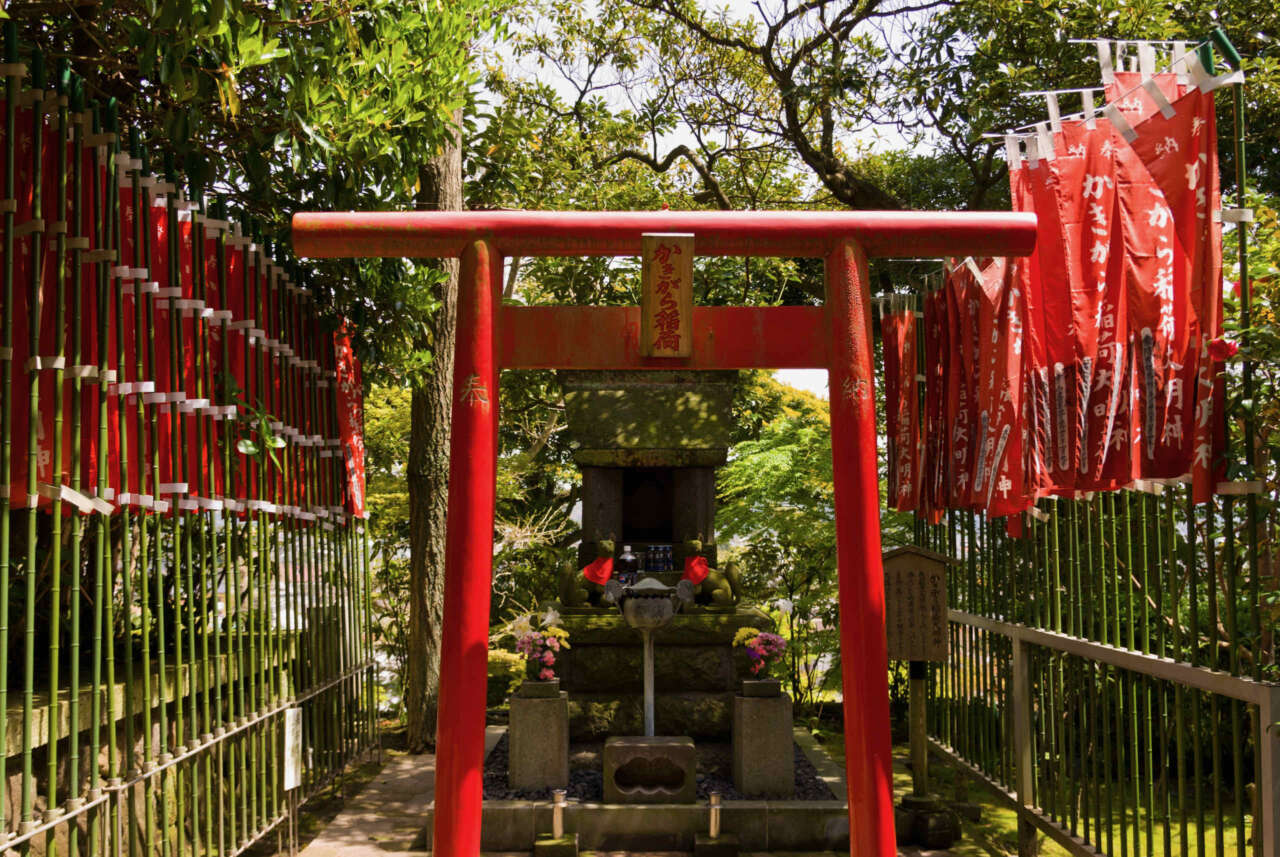
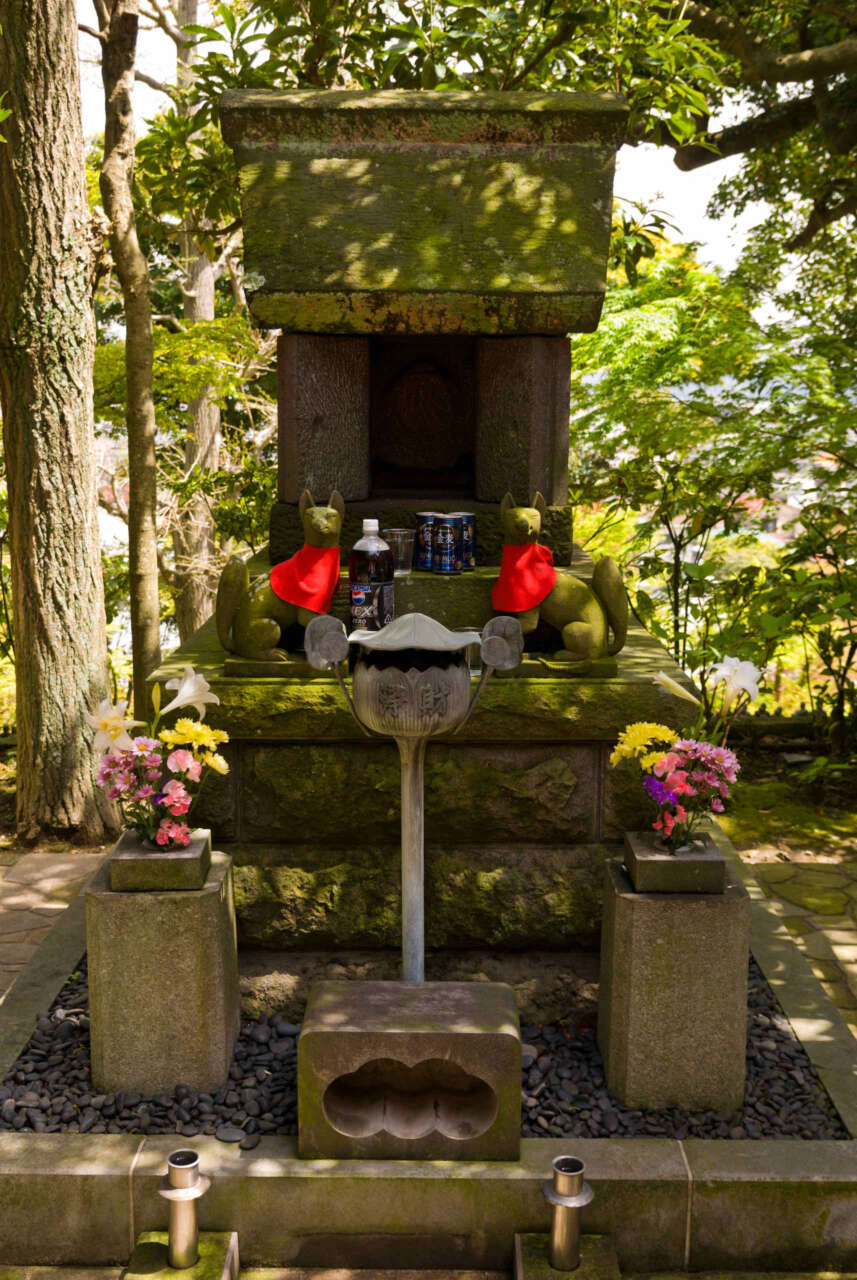
And a graveyard on top of a flight of stairs.
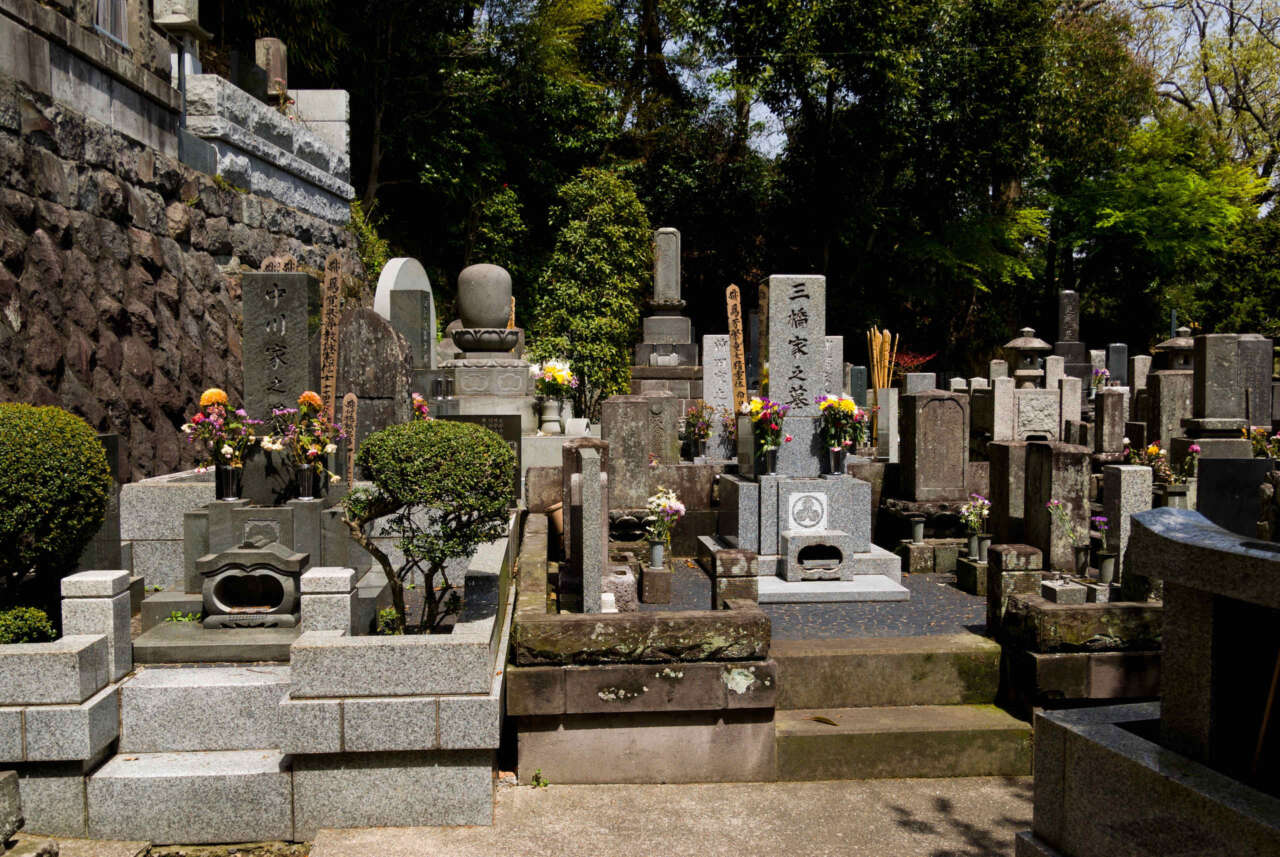
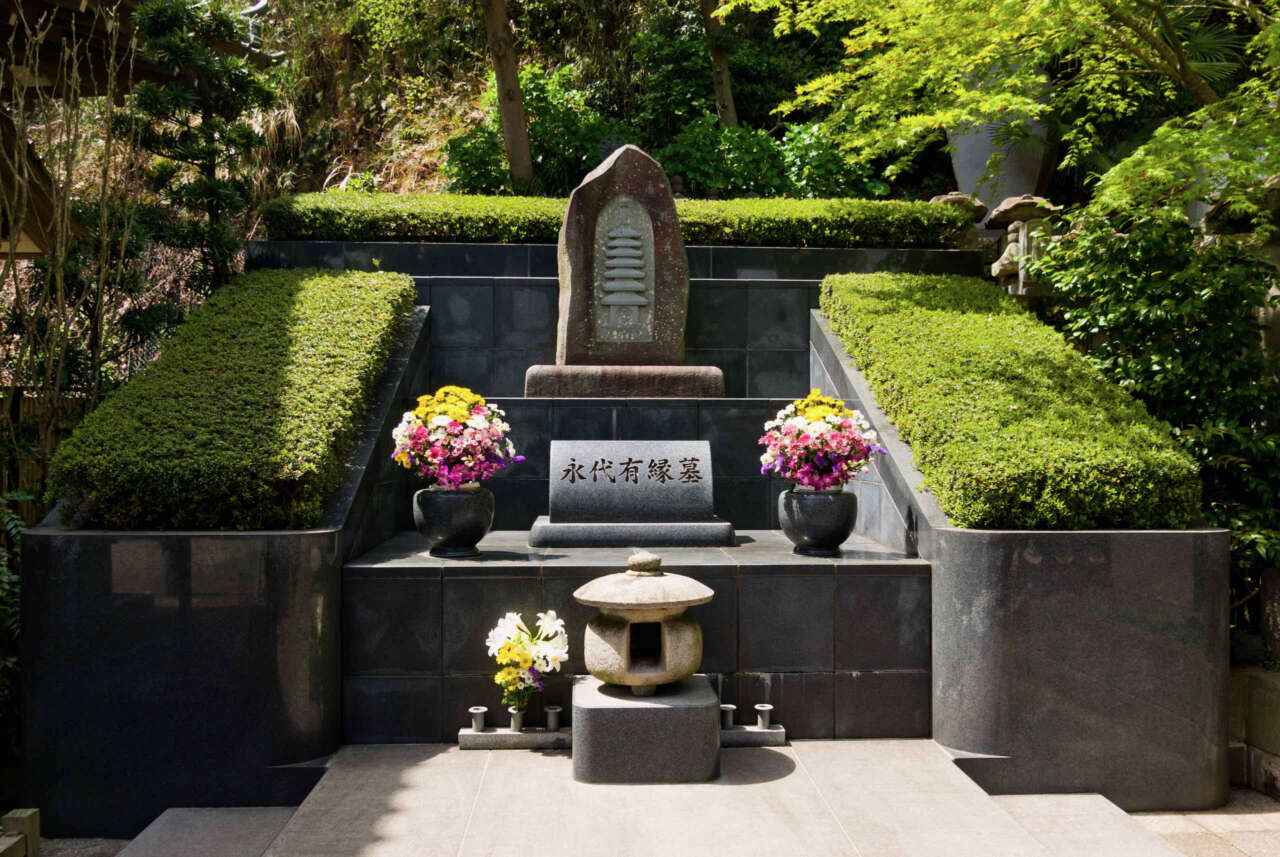
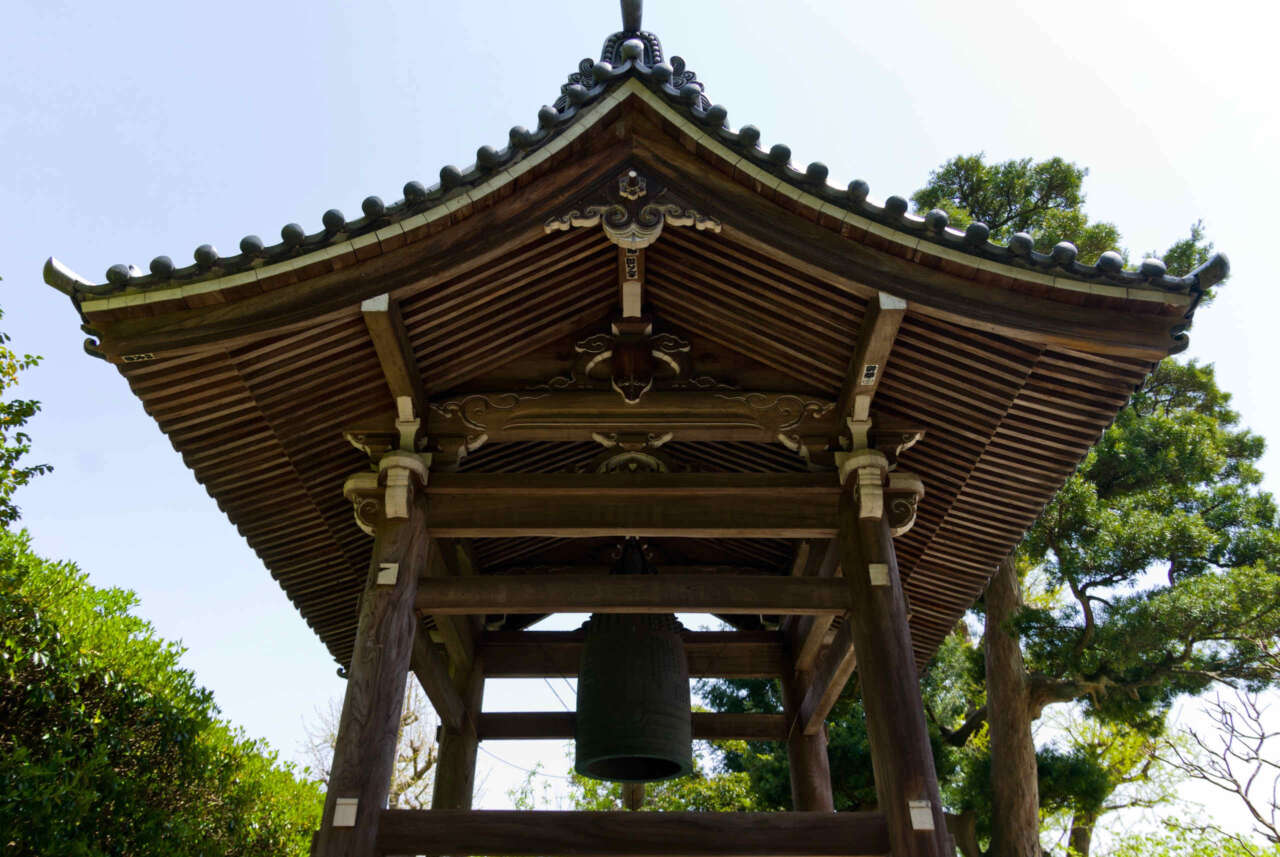
This is the Shourou (鐘楼) bellfry.
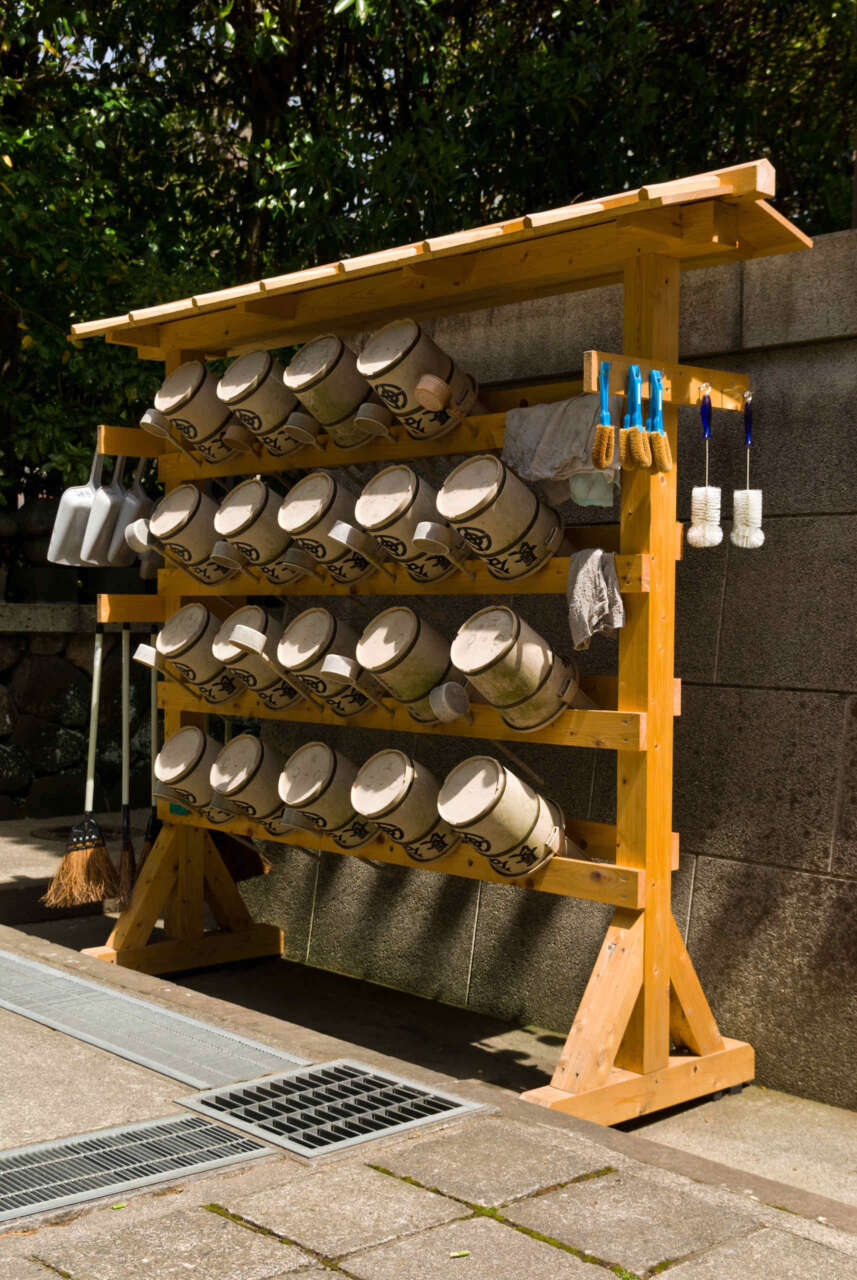
Not quite sure what this is – something to do with cleaning the Jizo statues?
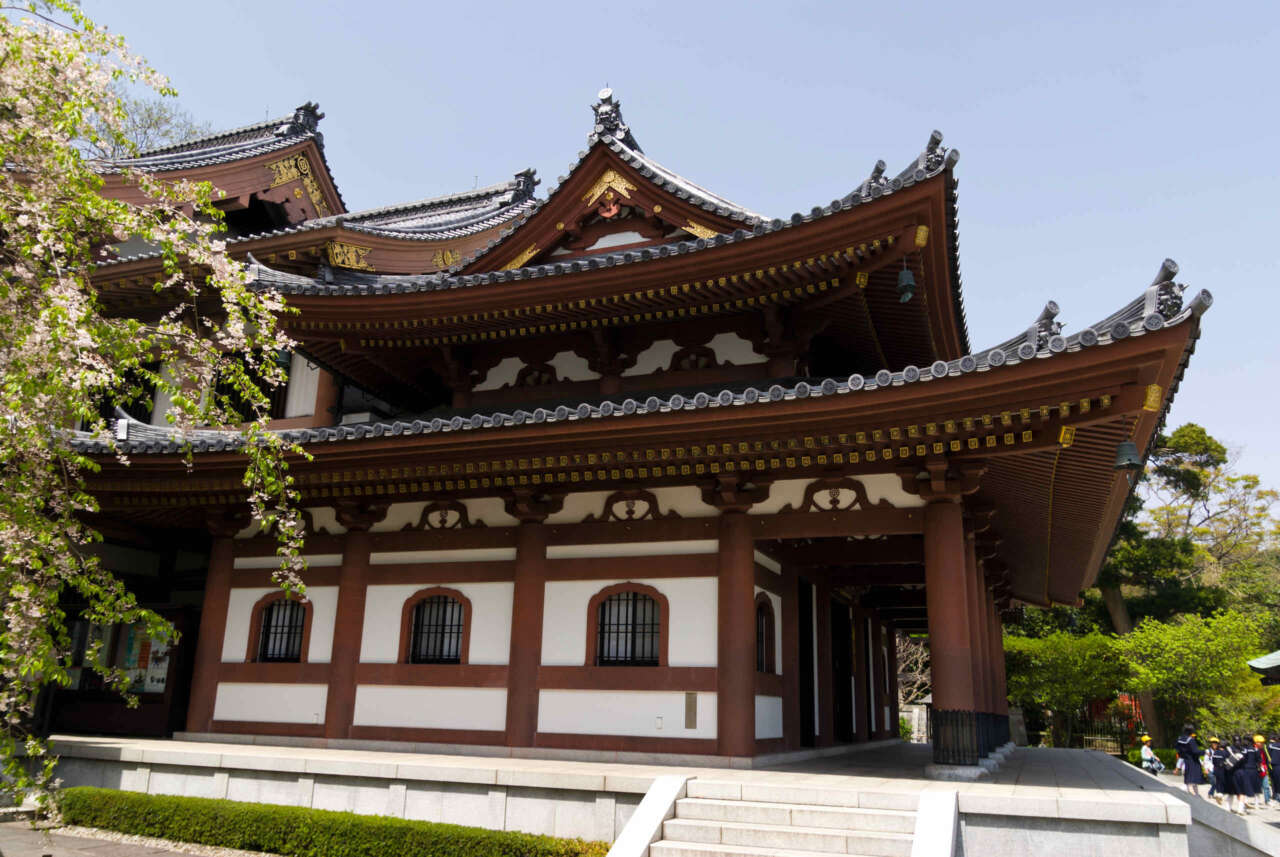
Outside the Kannon Hall (観音堂) – this contains the magnificent Hase Kannon statue of the Avalokitesvara Bodhisattva (Goddess of Mercy) with 11 heads carved out of a huge camphor tree (unfortunately, we were not allowed to take photographs of this statue).
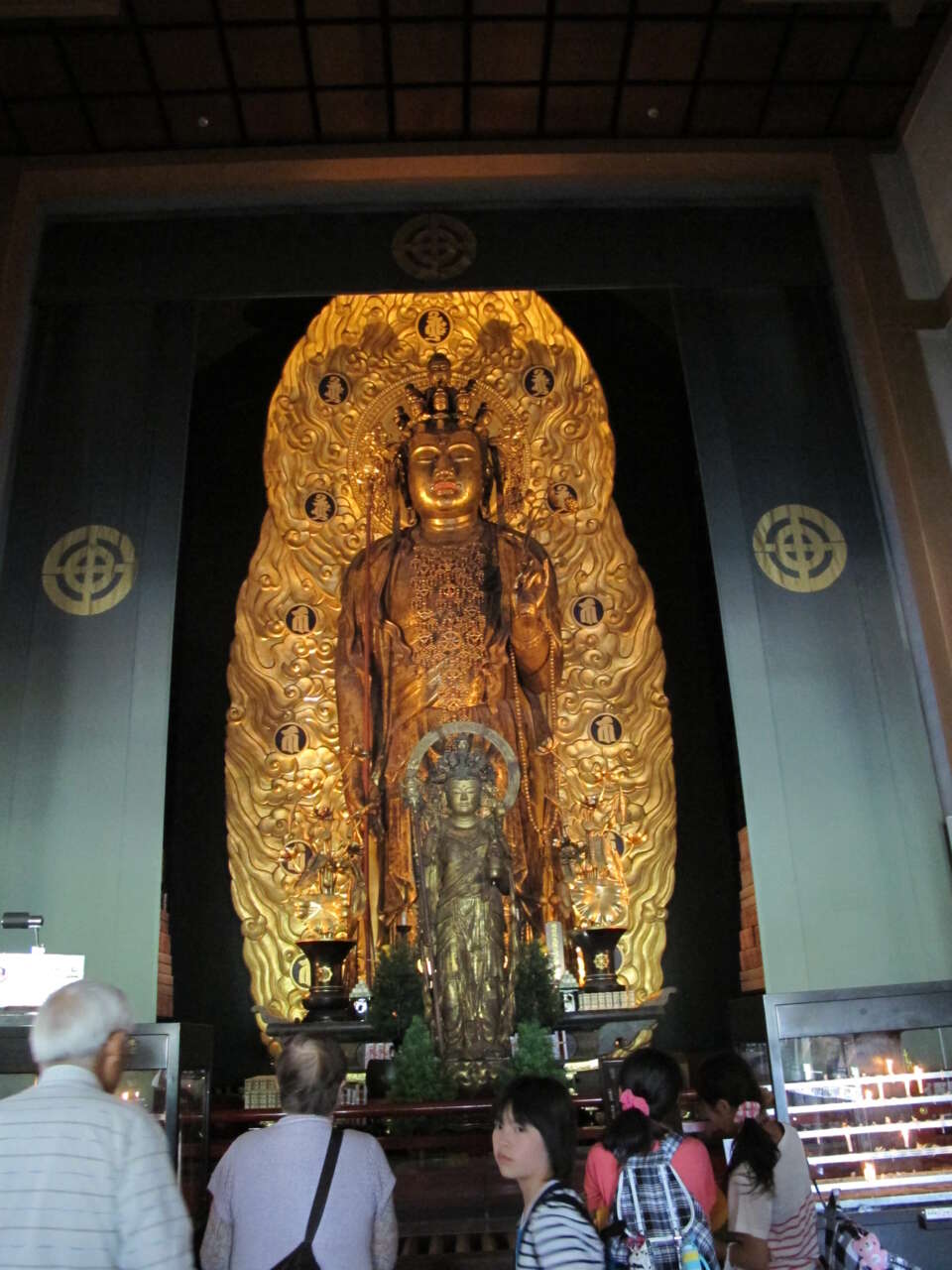
This photograph of the famous Kannon wooden statue with 11 heads, each representing a stage towards enlightenment, is courtesy of Wikimedia Commons (Attribution: Sailko, CC BY-SA 3.0)
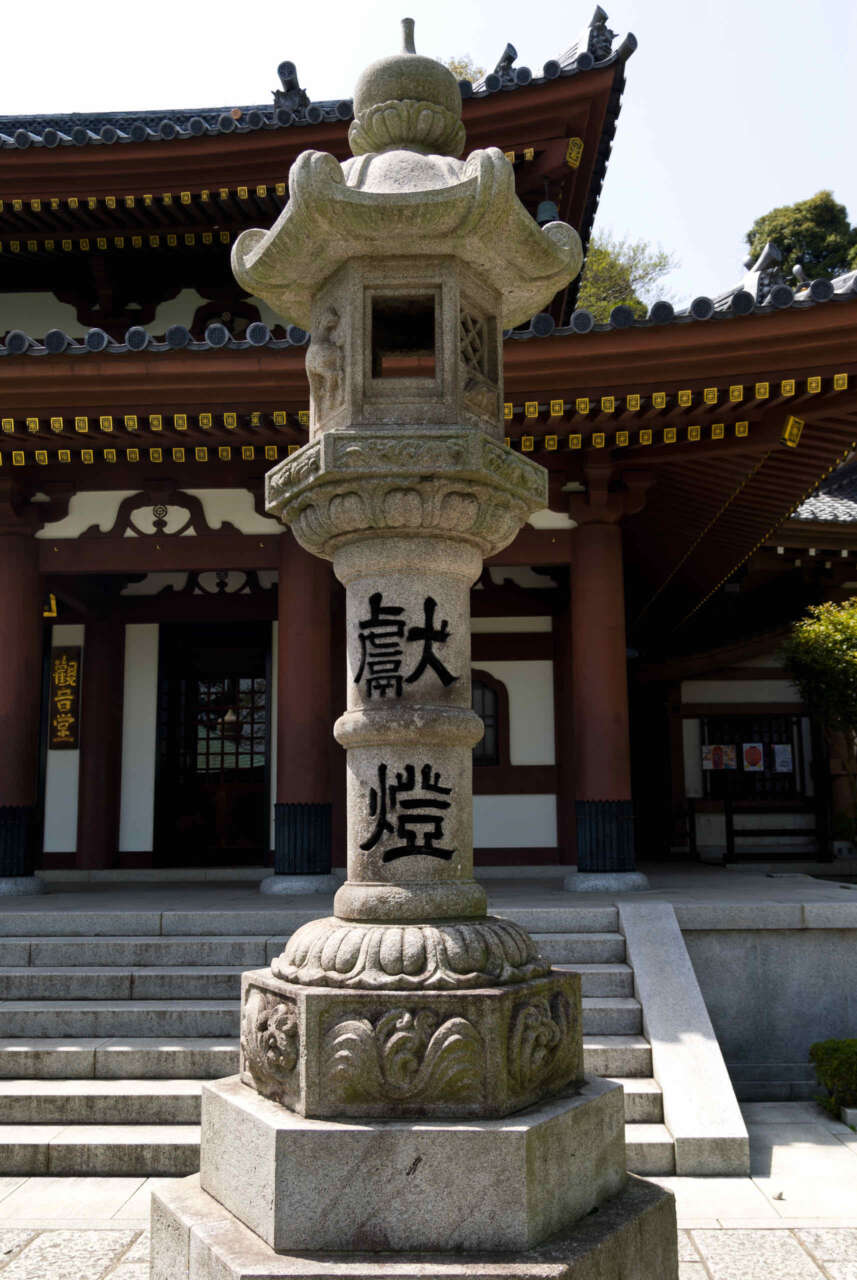
Stone lanterns outside the Kannondou.
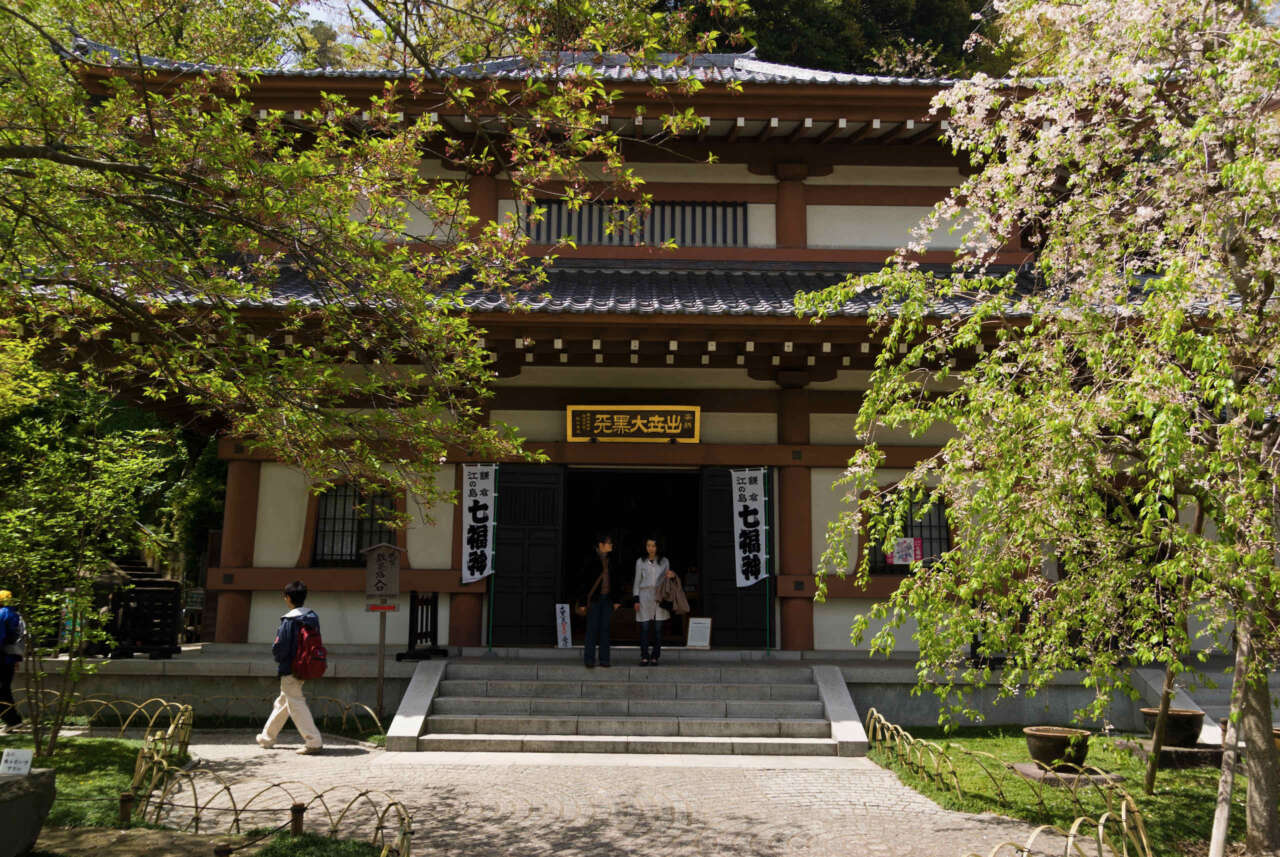
Daikoku Hall (大黒堂) contains a statue of Daikokuten – the Japanese God of Wealth (Harvest) or Household (Kitchen). [This has now been converted to the Kannon Museum]
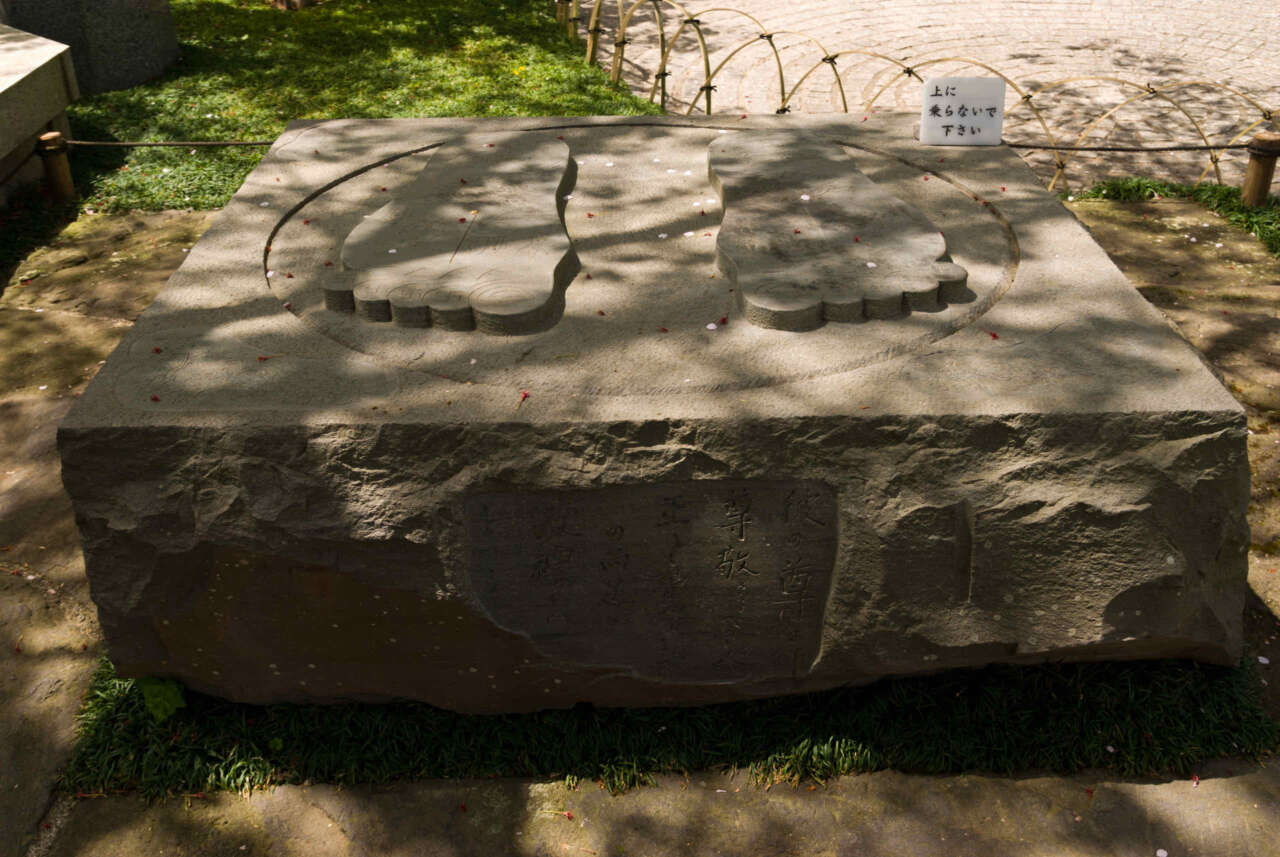
Another giant feet sculpture – this one is even bigger (the warning sign next to the sculpture says please don’t step on the feet).
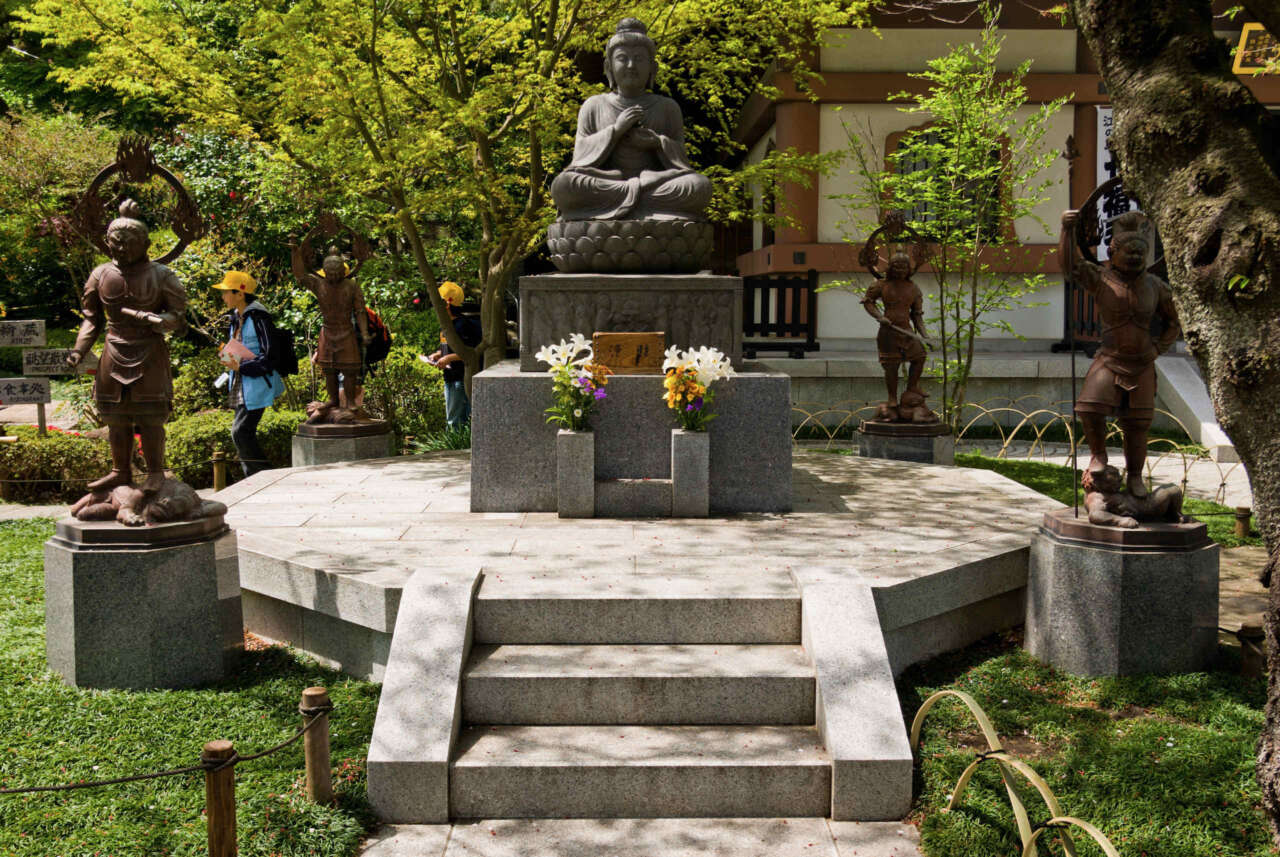
And these are are interesting copper sculptures arranged around a stone sculpture of the Buddha.
This is a rinzou or revolving bookshelf for storing sutras (if you recall, on Day 3 we visited a hall full of these bookshelves at the Toushouguu shrine in Kamakura). Members of the public are allowed to rotate this one.
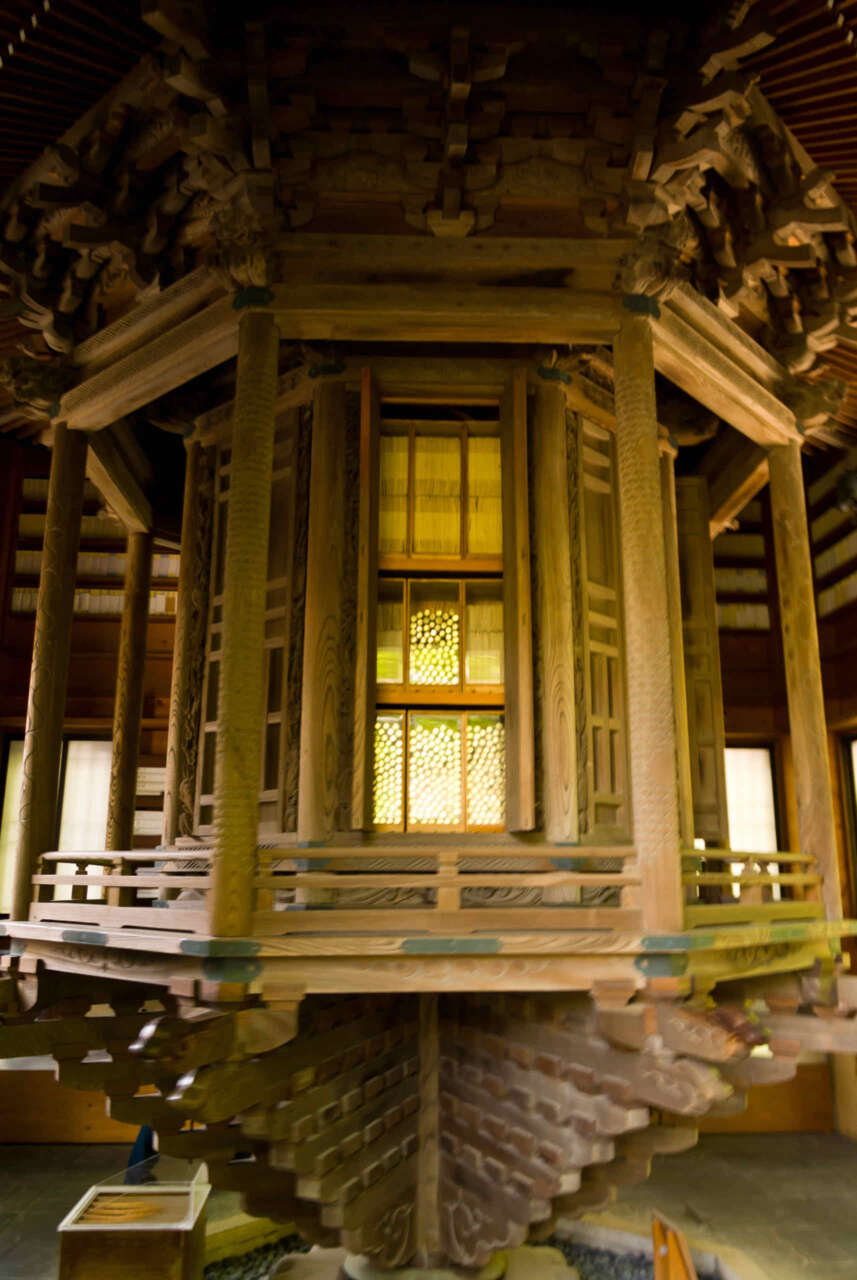
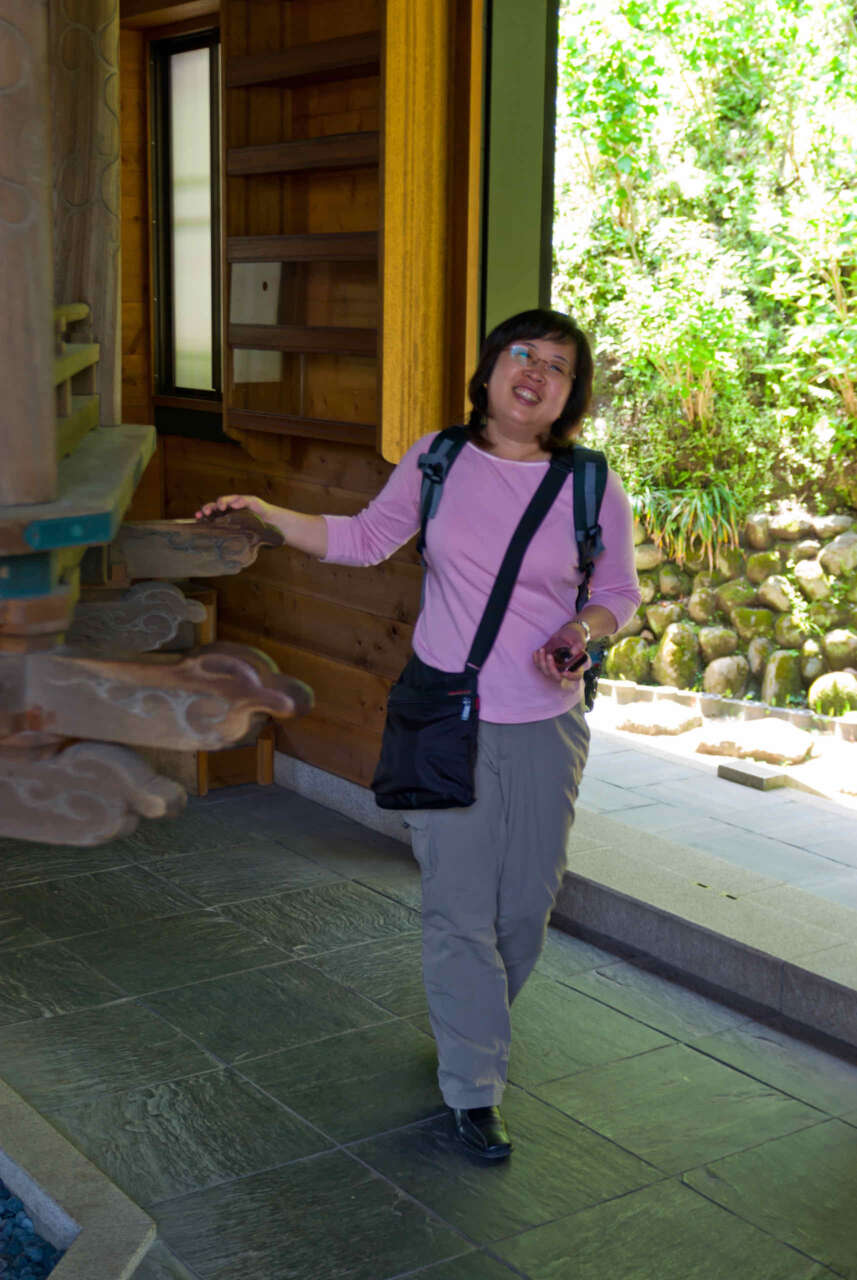
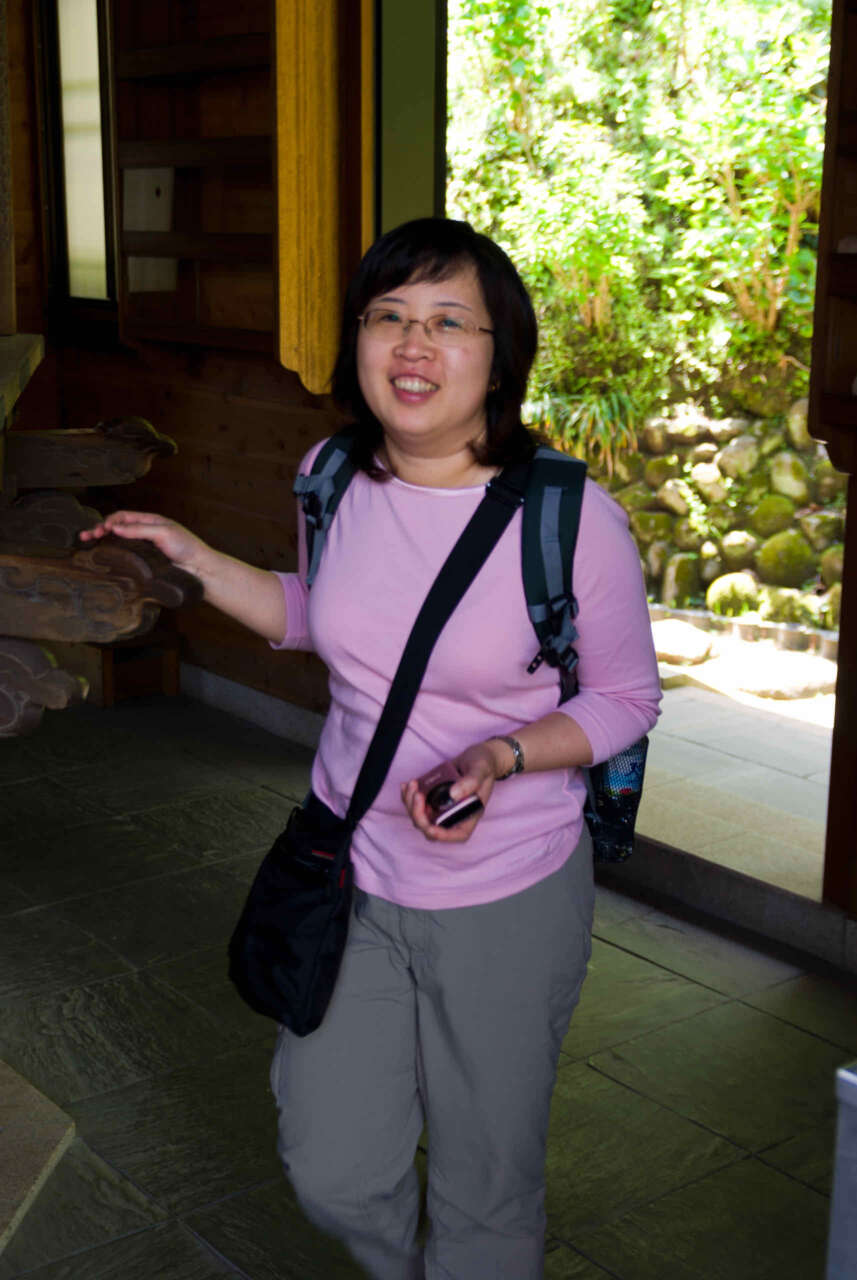
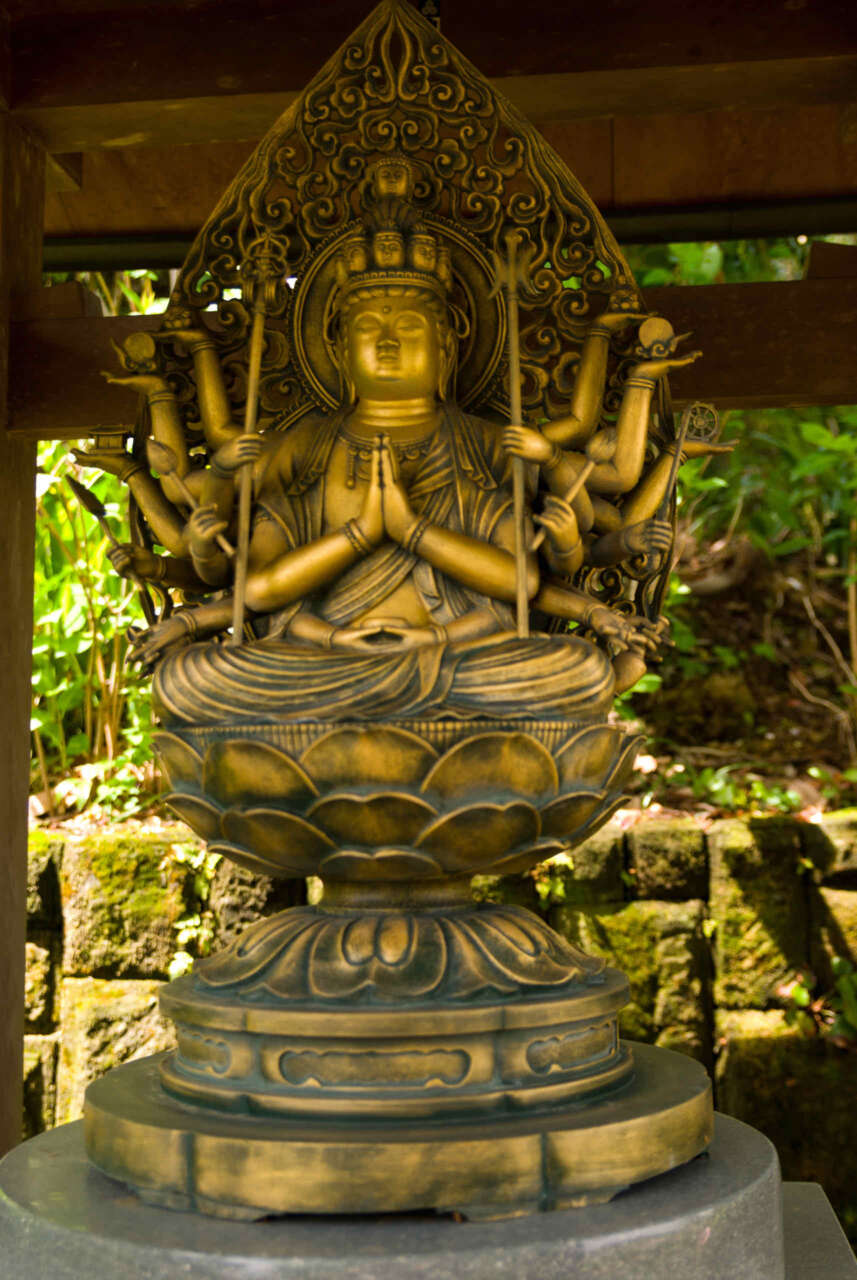
A statue of Benzaiten with eight arms (she is a sea goddess and patron the arts and music).
After this, we walked along a steep path from which there were several vantage points where we saw wonderful views of Kamakura town, including the Yuigahama/Zaimokuza Beaches, Sagami Bay and Miura Peninsula.
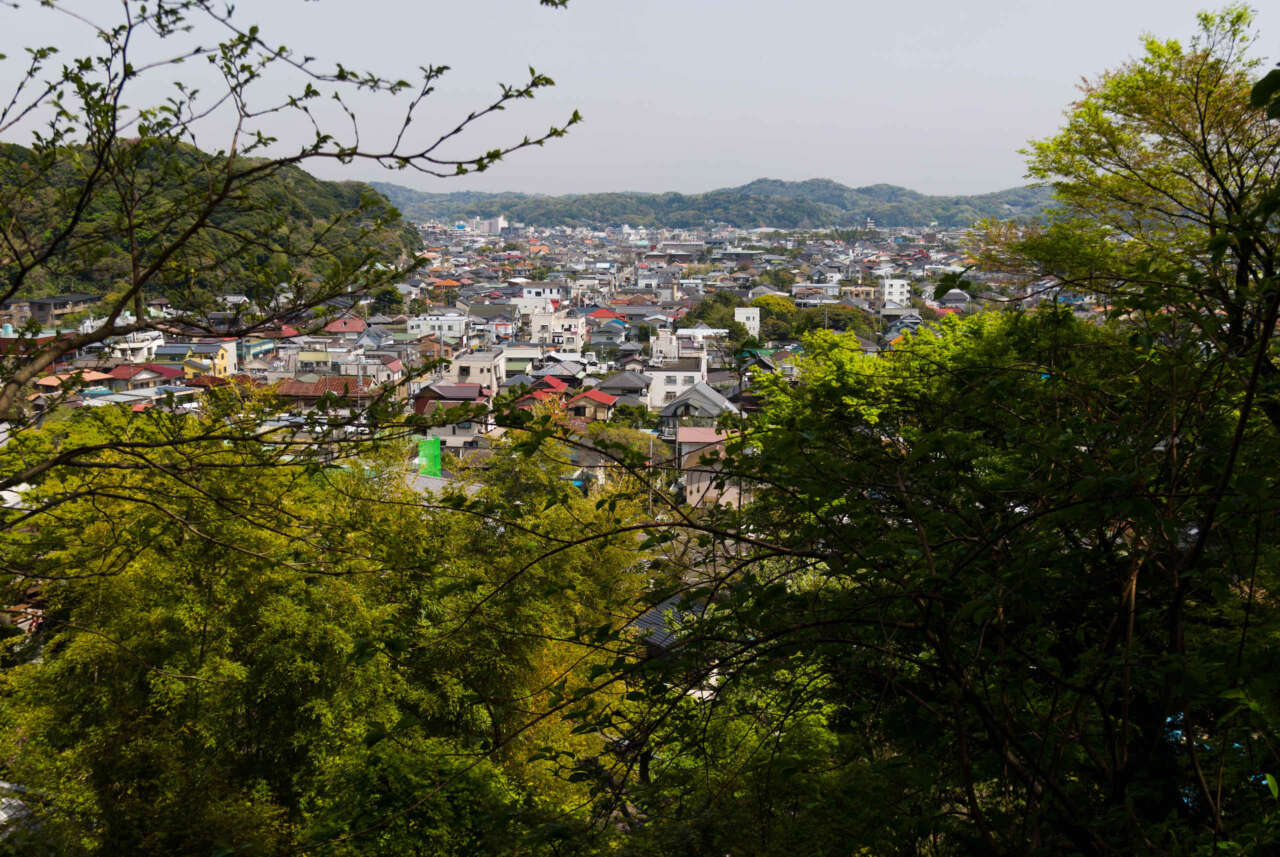
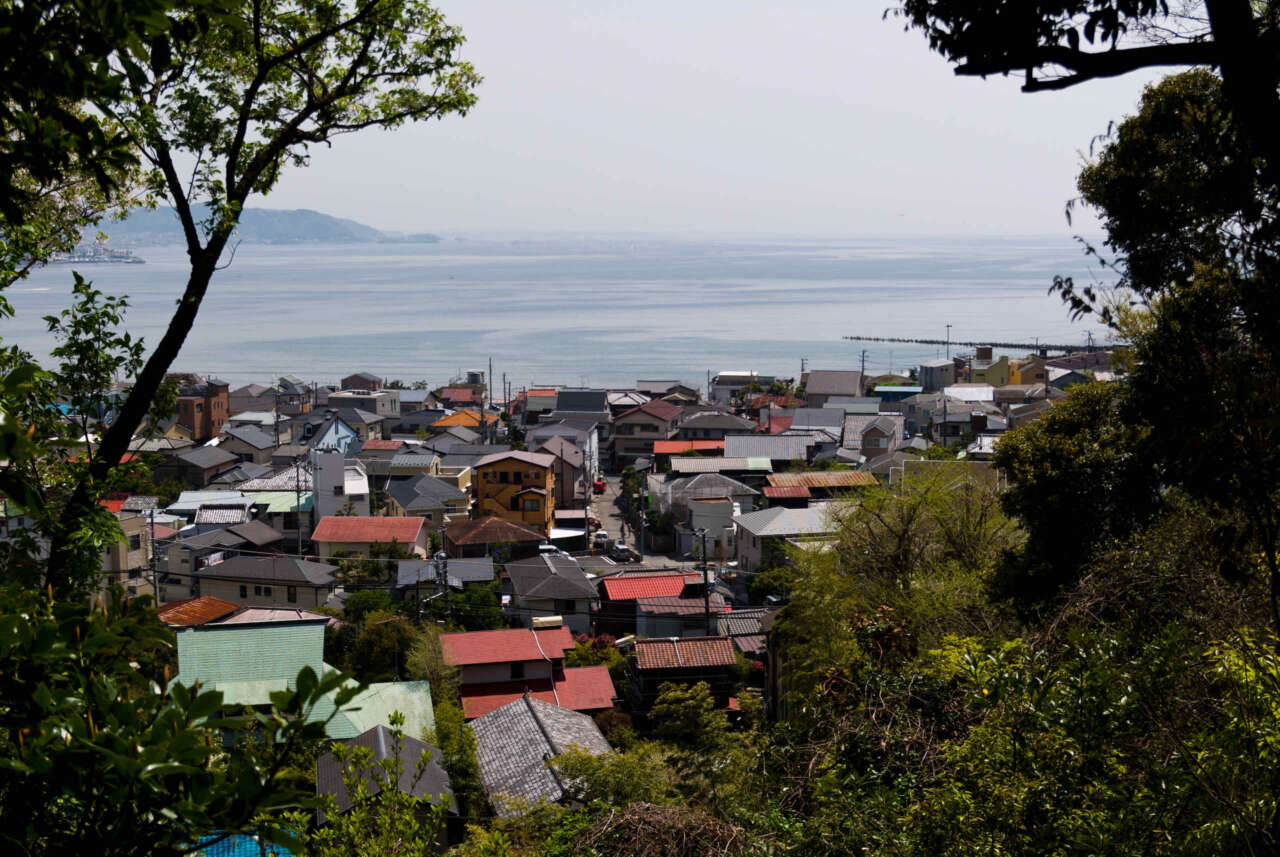
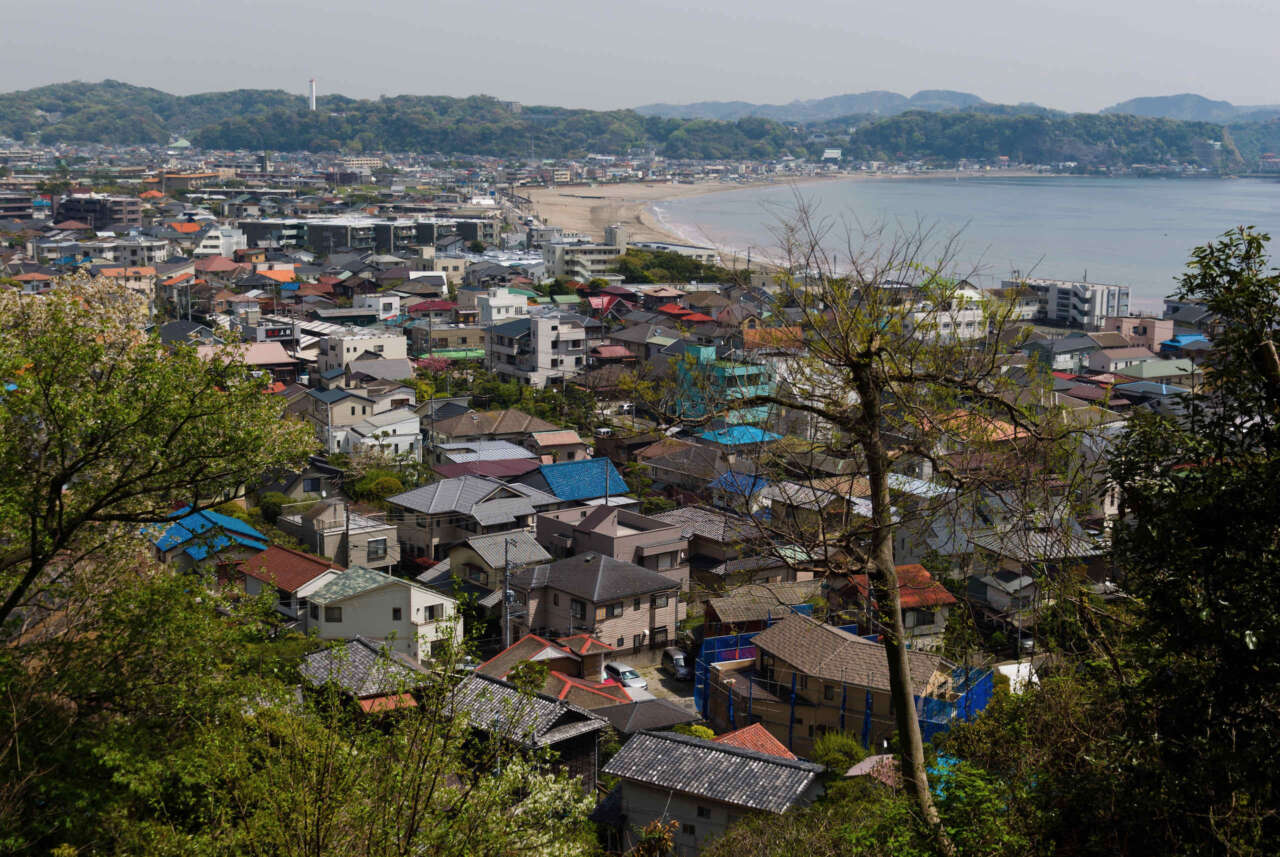
Some beautiful jizo statues set next to a statue of the Buddha with a great view of Kamakura surroundings.
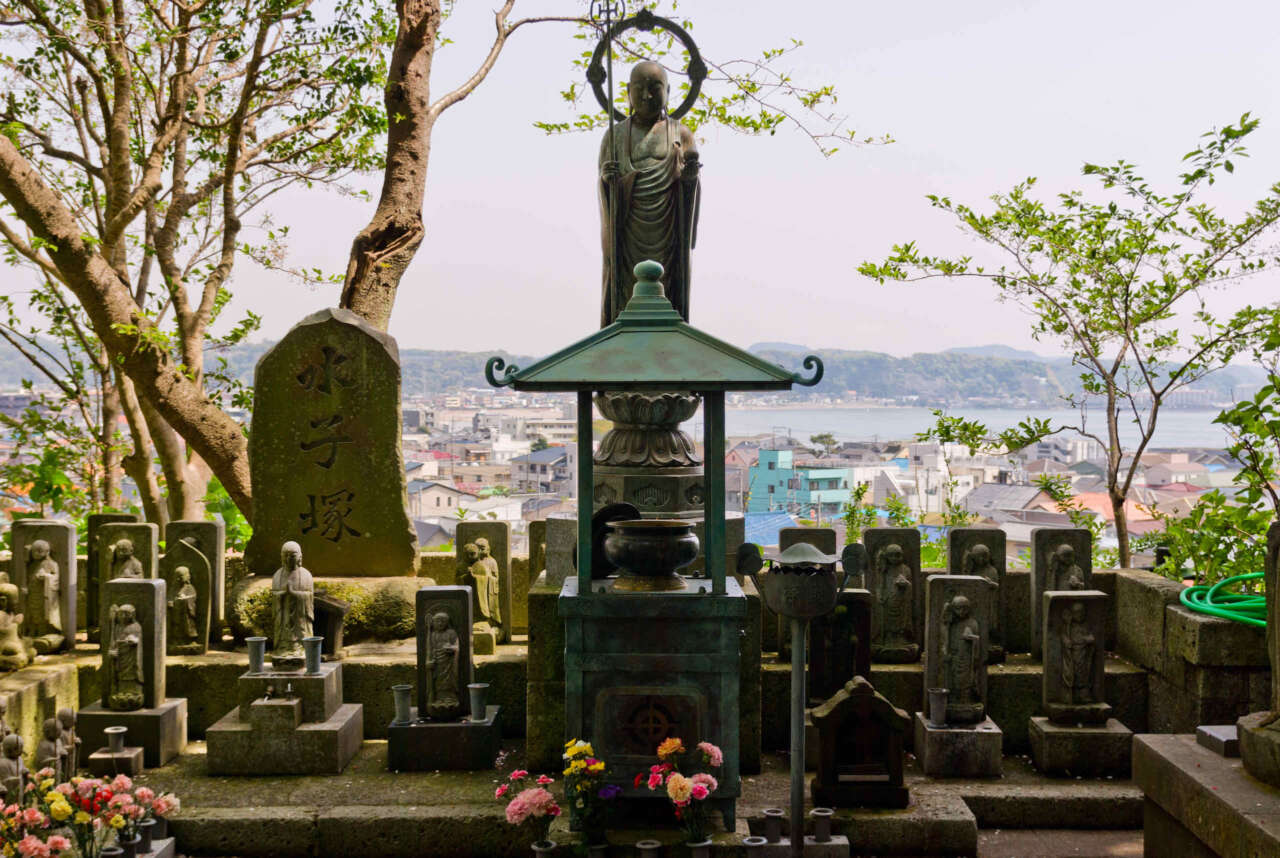
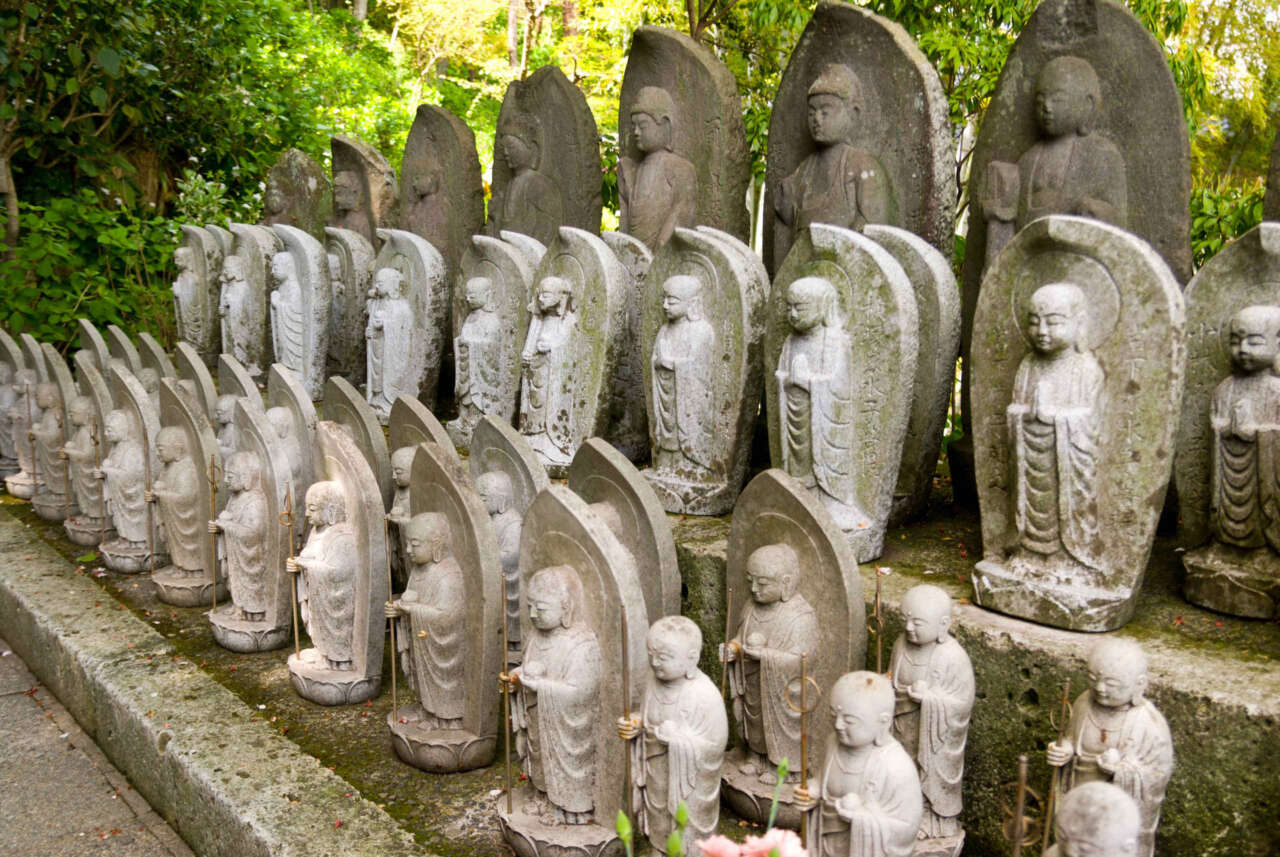
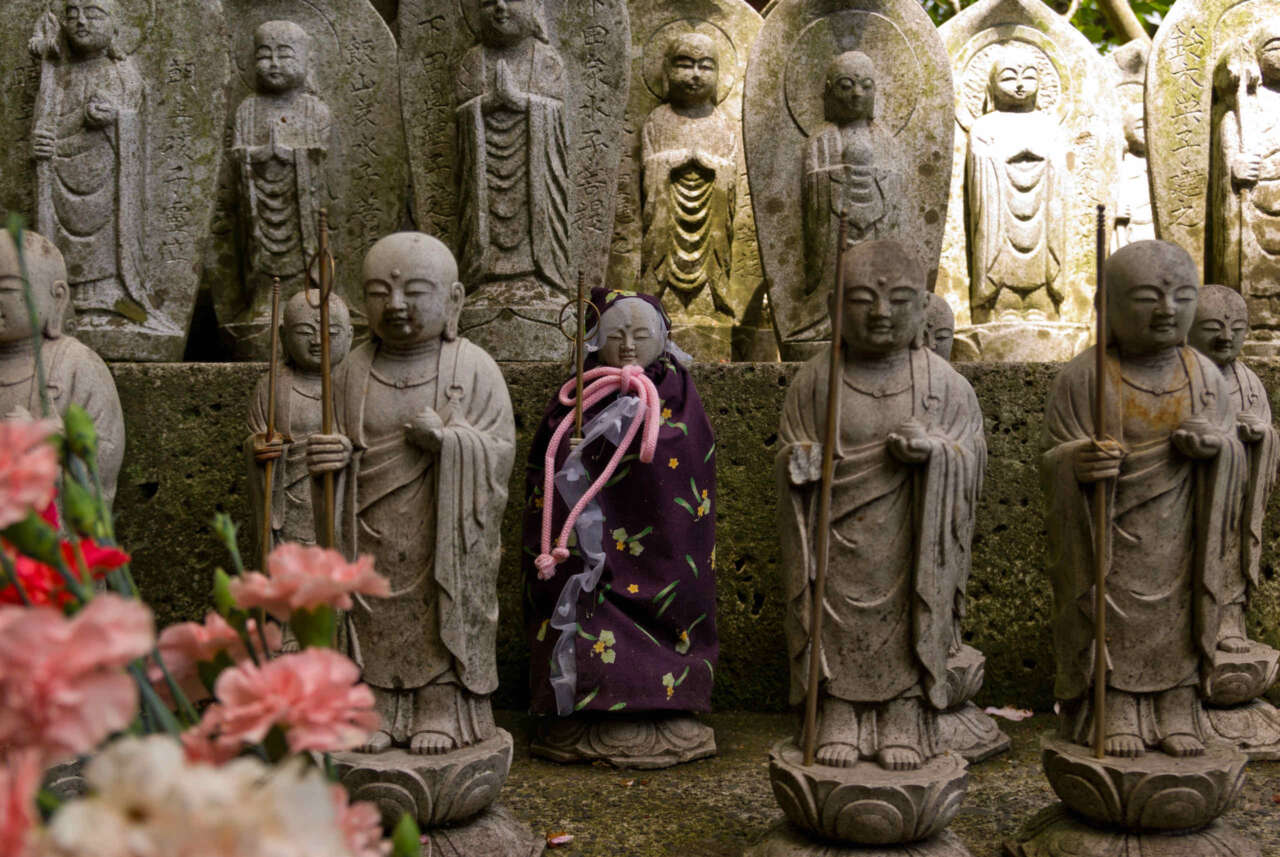
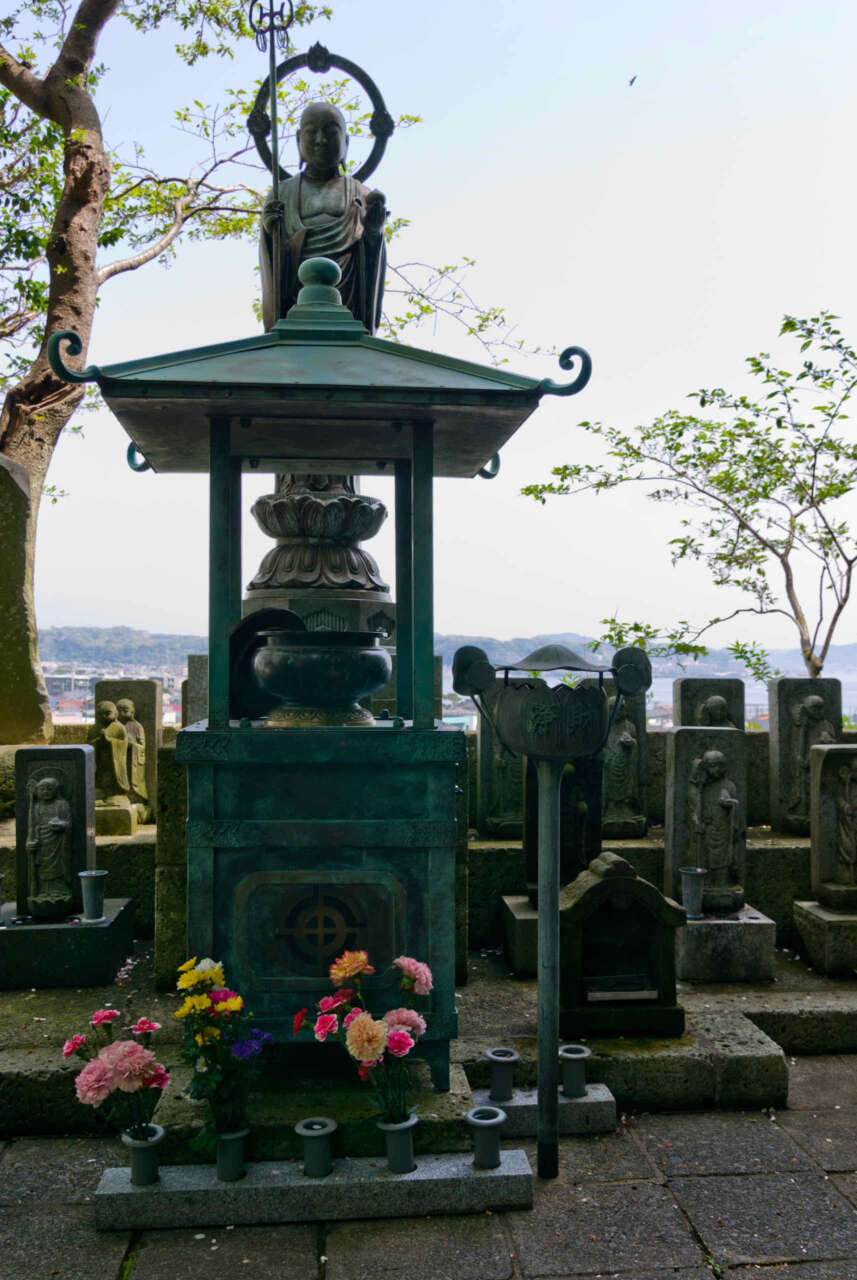
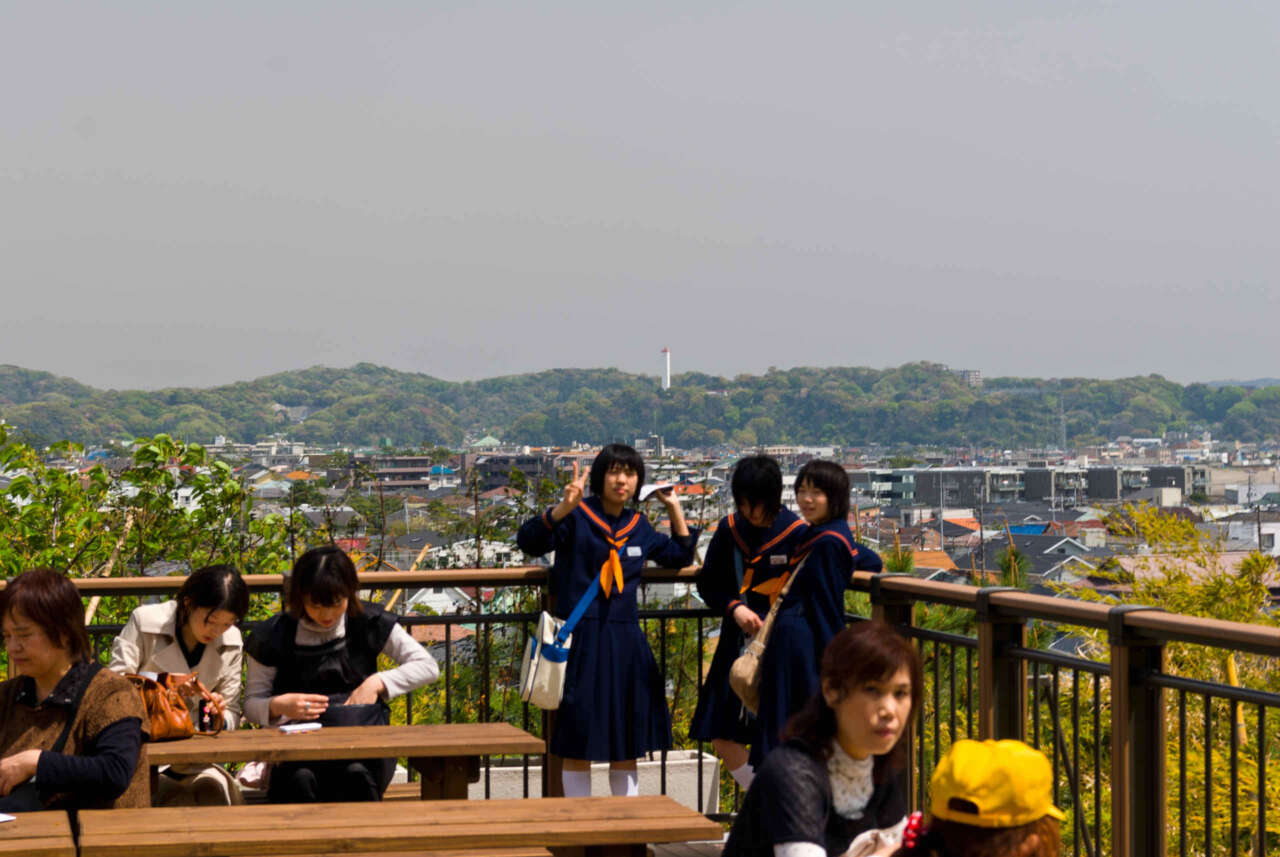
At the observation deck, where some schoolgirls waved at me.
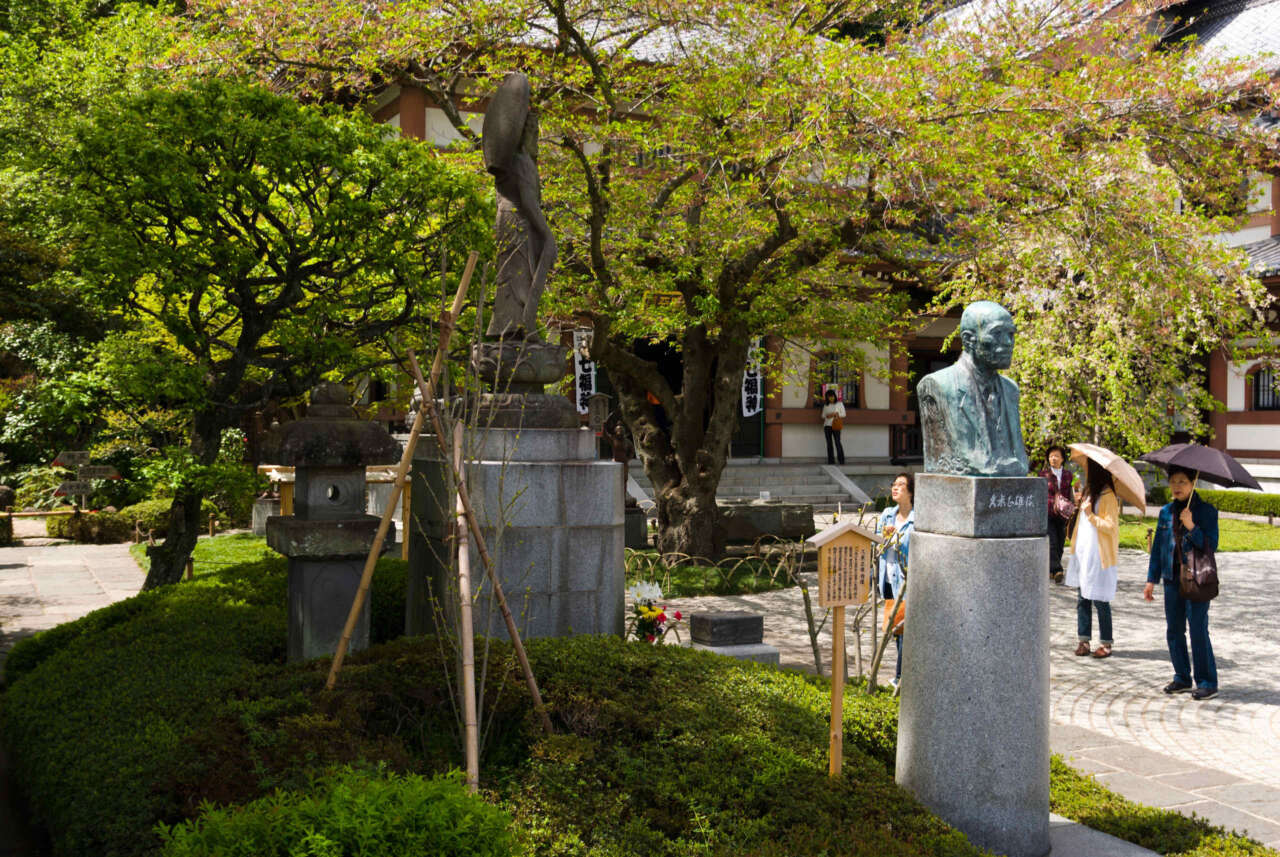
A statue of Holy man Tokudo, founder of the temple
Finally there is a cave at the bottom level called the Benten-kutsu where images of Benzaiten and her 16 children are carved on the walls.
